SPEARHEADING THE DIGITAL REVOLUTION
Discover how Odfjell Terminals US is progressing with its digitalisation projects

OFF-GRID ENERGY & MEETING TARGETS
Flogas Britain shares how it is keeping up with changing energy demands
VIRTUAL REALITY PROCESS & SAFETY TRAINING
The experts at Oak Tree Consulting explain how VR applies to tank storage
June/July 2023 | Volume 19 | Issue 03
Established 2005. Trusted. Valued. Influential.



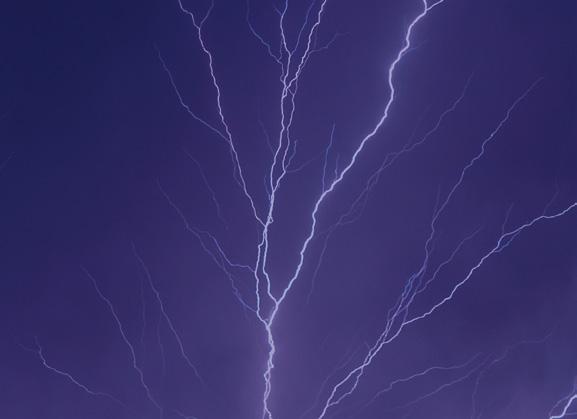

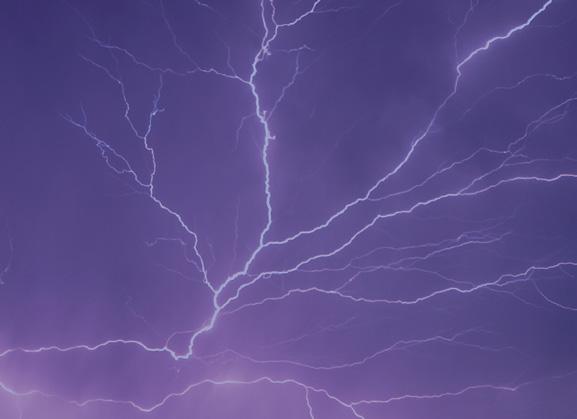
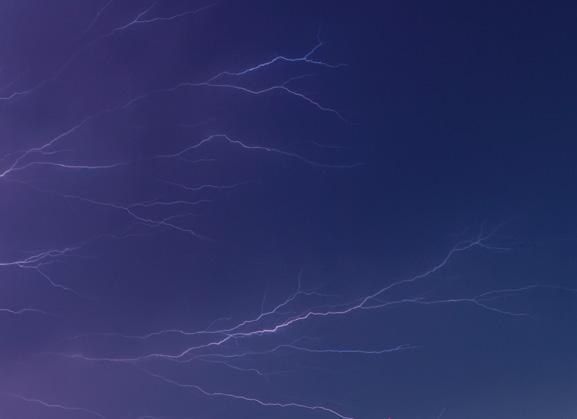
Clearwater, Florida, USA l www.lightningmaster.com l 1-800-749-6800 We wrote the book on lightning and static protection for process and storage tanks Structural lightning protection | Bypass conductors | Bonding | Grounding LIGHTNING AND STATIC PROTECTION FOR PROCESS AND STORAGE TANKS




EXCLUSIVE INTERVIEWS 30 32 36 34 30 Spearheading the digital revolution Fresh from his ORBIE award win, Aldrich Varilla, IT director for Odfjell Terminals US tells Tank Storage Magazine about the company’s digital initiatives 32 Off-grid energy and meeting targets Flogas Britain’s business development director, James Rudman tells Tank Storage Magazine how it’s keeping up with the ever-changing energy market 34 World-class facility Leading regional player for processing industry chemicals in the GCC region, AquaChemie, inaugurates its new petrochemical terminal at Jebel Ali Port 36 ‘Do not call me a diversty hire’ Embracing and encouraging diversity in the industry leads to endless possibilities, says Smartflow’s Stefana Sopco
ANALYSIS 38 Legislating for alternative fuels FETSA’s executive director, Ravi Bhatiani, looks at what’s needed from political leaders to enable the energy transition 39 Hydrogen’s role in the energy transition Madana Nallappan, EIC analyst, Asia Pacific region, discusses the emerging developments of hydrogen supply chains and the need for policy changes 40 Virtual reality-based process and safety training Karthik Govindarajan, president at Oak Tree Consulting, tells Tank Storage Magazine how VR and AR technologies are changing training procedures TERMINAL NEWS 08 Europe 14 The Americas 18 Middle East & Africa 20 Asia & Pacific 27 Tank terminal update UP FRONT 04 Contributors 06 Editor’s note CONTENTS June/July 2023 | Volume 19 | Issue 03 UP FRONT CONTENTS PAGE 01
MARKET
TECHNICAL FEATURES
42 Biofuels of the future, leading the change
Cyann Fielding asks biofuels experts to share their predictions for the future of tank storage and sustainability

46 Hydrogen takes centre stage
Molly Cooper investigates the factors involved in the transition to storing hydrogen as an industrial fuel
50 Versatile tank linings meet diverse needs
Lab tests and field studies identify coatings that streamline tank cleanings, adhere under pressure and withstand aggressive chemicals

52 One size does not fit all
Tank Storage Magazine looks at how leak detection equipment is embracing the digital transformation

56 Cargo tank inspection: the right people and the right tools
To Simon Ruddick at Marine Inspection Services, a combined visual and UT drone platform could mean a welcome goodbye to rope access and scaffolding

59 Updates in automated terminal management
Cyann Fielding finds out how digital processes are changing terminal operations
62 End-to-end digitalisation and decarbonisation
Diamond Key International shares how its proven solutions can achieve terminal optimisation through a strategic approach
64 EPC tank building: approaches & concerns
Major EPC companies share their man areas of focus when carrying out projects
68 Lightning can always strike twice
Tank Storage Magazine explores the latest lightning protection and mitigation techniques for tank storage facilities
70 Technical news
EVENTS
72 Keeping people safe where they walk
CEO of Real Safety, Torben Farup, discusses winning gold at the Global Tank Storage Awards and taking their technology into the tank storage sector
74 Houston-bound for ILTA
The Tank Storage Magazine team is heading off to Texas for the ILTA conference on May 22-24. Here’s a preview of what’s in store
76 We do it as a team
Commercial manager at North Sea Port, Sandra De May, tells Tank Storage Magazine how it feels to win gold at the Tank Storage Awards

79 Storage tank industry meets in Florida
Editor Anamika Talwaria shares some of her favourite innovations from the 25th annual NISTM Trade Show and Conference
AT THE BACK
80 Advertisers index
80 Social storage: Most liked posts since April
81 Events Listing 2023
42 56 59 64 76 UP FRONT CONTENTS PAGE 02
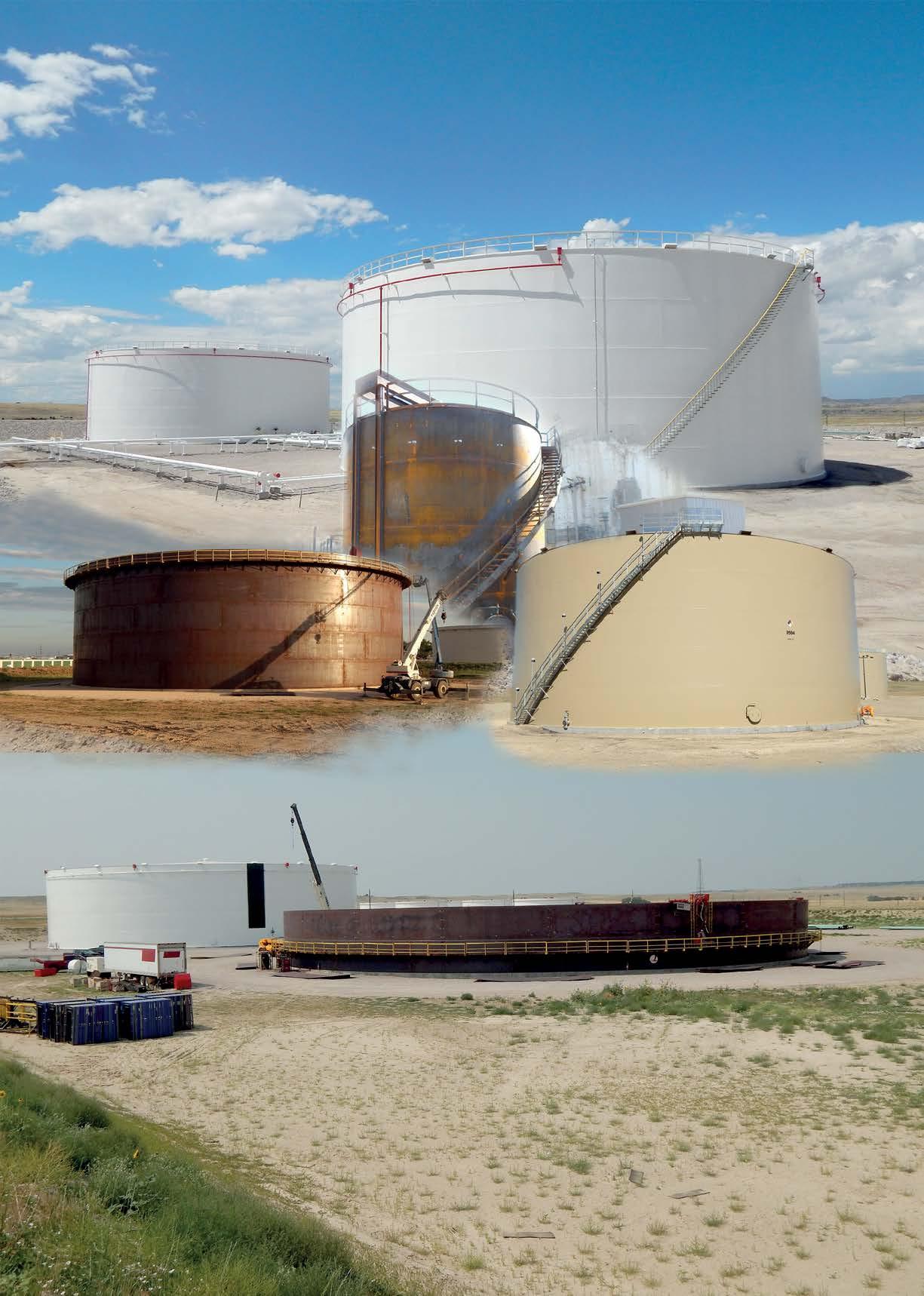
ATEC Steel, 1000 W. 5th St., Baxter Springs, KS 66713 877.457.5352 877.404.8206 info@atecsteel.com WWW.ATECSTEEL.COM For your Next Tank Project, DISCOVER THE ATEC ADVANTAGE Quality, Safety and On-time Completion you can rely on For your Next Tank Project, DISCOVER THE ATEC ADVANTAGE Quality, Safety and On-time Completion you can rely on
CONTRIBUTORS
June/July 2023
PORTFOLIO DIRECTOR
Margaret Dunn +44 (0)20 3551 5721 margaret@tankstoragemag.com
EDITOR
Anamika Talwaria +44 (0)20 3876 9339 anamika.talwaria@easyfairs.com
JOURNALIST
Cyann Fielding +44 (0)20 3196 4416 cyann.fielding@easyfairs.com
JOURNALIST
Molly Cooper
+44 (0)20 3196 4263 molly.cooper@easyfairs.com
HEAD OF SALES
Sophie McKimm
+44 (0)20 3196 4356 sophie.mckimm@easyfairs.com
INTERNATIONAL SALES MANAGER
David Kelly
+44 (0)20 3196 4401 david@tankstoragemag.com
KEY ACCOUNT MANAGER
Gary Kakoullis
+44 (0)20 3196 4248 gary.kakoullis@easyfairs.com
MARKETING MANAGER
Ream Demnati
+44 (0)20 3196 4282 Ream.Demnati@easyfairs.com
HEAD OF DATA
Beth Welcomme +44 (0)20 3196 4345 beth.welcomme@easyfairs.com
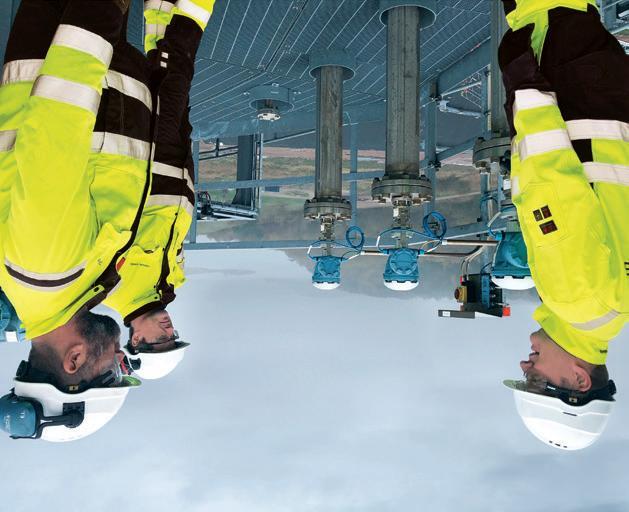
CEO EASYFAIRS UK & GLOBAL
Matt Benyon matt.benyon@easyfairs.com Anne Lafère anne.lafere@easyfairs.com
SUBSCRIPTION RATES
A one-year, 7-issue subscription costs €250. Individual back issues can be purchased at a cost of €45 each.
CONNECT WITH US @tankstorageinfo

Tank Storage Magazine
Tank Storage Magazine
CONTACT
T +44 (0)20 3196 4300
F +44 (0)20 8892 1929 margaret@tankstoragemag.com www.tankstoragemag.com
Easyfairs
2nd Floor, Regal House 70 London Road Twickenham TW1 3QS United Kingdom
ISSN 1750-841X
UP FRONT CONTRIBUTORS PAGE 04 Tank Storage Magazine, (ISSN 1750-841X) is published seven times a year (in February, March, May, August, September, October and November) by Easyfairs UK Ltd, 2nd Floor, Regal House, 70 London Road, Twickenham, TW1 3QS, UK. The US annual subscription price is $243. Airfreight and mailing in the USA by agent named WN Shipping USA, 156-15, 146th Avenue, 2nd Floor, Jamaica, NY 11434, USA. Periodicals postage paid at Jamaica NY 11431. US Postmaster: Send address changes to Tank Storage Magazine, WN Shipping USA, 156-15, 146th Avenue, 2nd Floor, Jamaica, NY 11434, USA. Subscription records are maintained at Easyfairs UK Ltd, 2nd Floor, Regal House, 70 London Road, Twickenham, TW1 3QS, UK. Aug / Sep 2019 Volume 15 Issue 04 AN INTERNATIONAL CONCEPT IN A CAPTIVE MARKET Oiltanking matola explains how it is introducing the independent storage model in sub-saharan africa. AN INTERNATIONAL CONCEPT Oiltanking matola explains how it is introducing the independent storage model in sub-saharan africa.
| Volume
Issue
19 |
03




EDITOR’S NOTE
AS I TYPE THIS, the Tank Storage team is gearing up for our second US show of the season. Having just come back from NISTM, Orlando, I’m still battling jetlag while working to get this fantastic issue, packed to the brim with original editorial content, out to you. And all in time for the ILTA conference in Texas!
You can read a sneak preview of what’s coming at the ILTA trade show and conference on page 74, complete with the highlights that our team is looking forward to. From tank storage developments to stories of space travel, this iteration of the event is sure to be one to remember. And as my first time in Texas, I’m certainly looking forward to experiencing the American hub of tank storage.
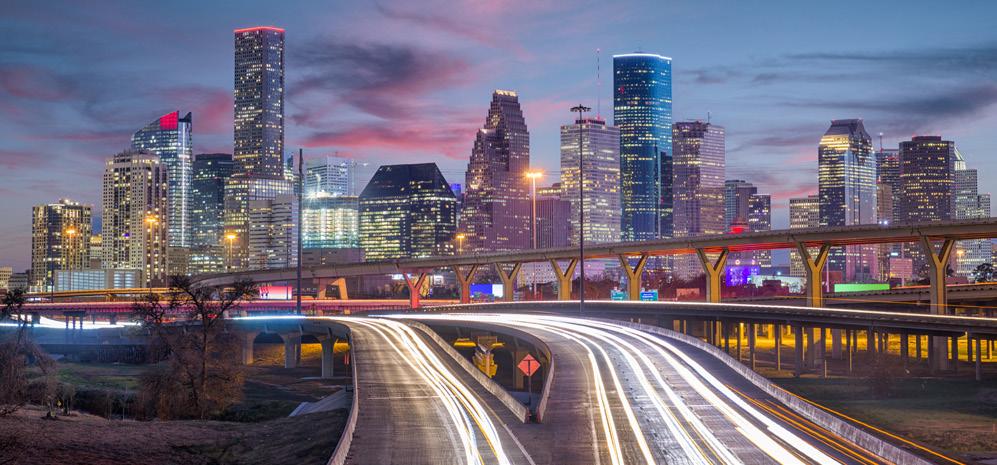
As well as the Tank Storage team, Odfjell Terminals US’ IT director, Aldrich Varilla, will be in attendance. You can read our exclusive interview with him on page 30 as he discusses winning an ORBIE, and his digitalisation strategy for OTUS.
Speaking of winners, we’ve interviewed the gold winners at the Tank Storage

Awards and will be sharing their developments with you through the year. Starting with Real Safety for Safety Technology (page 72) and North Sea Port, for Port of the Future (page 76). Plus, Diamond Key International explains its winning Omega Digitz platform on page 62.
Innovative technology and digitalisation strategies really are key topics at the conferences I’ve attended this year. So, it’s only right that we give this topic proper attention in the magazine. Turn to our market analysis section, and you’ll see how digitalisation is changing training procedures at tank terminals, with an explainer into virtual reality on page 40.
And the rest of this edition is equally forward-looking, with in-depth, wellresearched articles put together by our editorial team on the future of biofuels (page 42), hydrogen storage (page 46), terminal automation (page 59) and more. Embracing the digital world is something we’re passionate about at Tank Storage Magazine and our webinar series is yet another way we’re connecting the tank storage industry all over the world. So, once you’ve had your fill of the words in our magazine and the in-person events happening in the next few weeks, make sure you’ve signed up to Tank Talk. Our next webinar session is on 22 June, sponsored by Foamglas.
As always, if you think your company has a particularly interesting insight into a trend, data point, or you have an exciting case study to share with the industry, please do get in touch with us. Please
swing by the Tank Storage Magazine booth 223 to have a cup to tea (or coffee) and talk about your latest products, projects or just about the football (soccer).
Best wishes,
PAGE 06 UP FRONT EDITOR’S NOTE
Anamika
MORE TECHNOLOGY FOR TANKS
Advances in automation, robotics, chemistry, and procedures are making aboveground storage tank cleaning safer, faster, and more cost-effective than ever before.

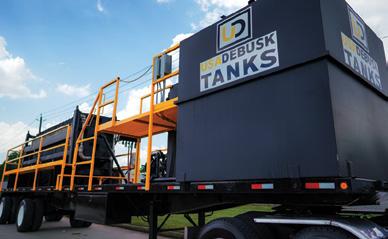
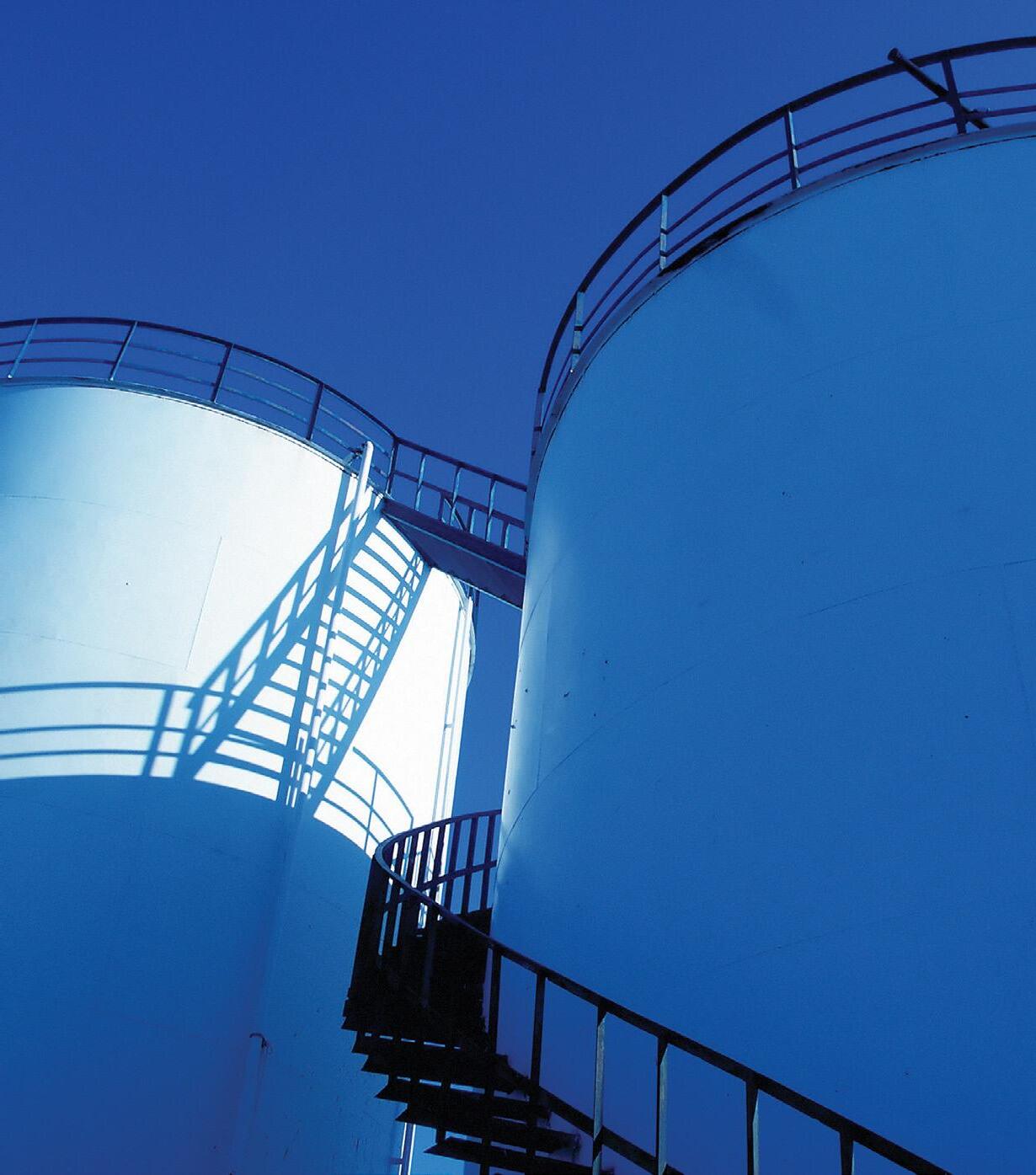
Clean & Fast. We remove material using track-drive and magnetic vertical-drive ROVs, remote-control manway cannons, tank sweeps with continuous slurry and removal, submersible pumping systems, and more.
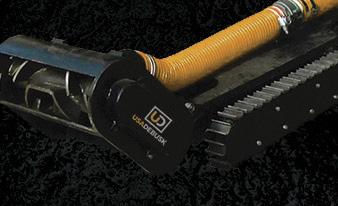
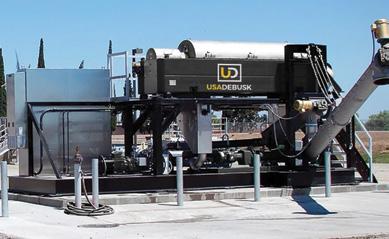
Maximum Recovery. Minimum Disposal. Phase separation and treatment options use high-speed centrifuges, filter and belt presses, and chemical treatment to reclaim valuable hydrocarbons and minimize waste.
SEE THE STATE-OF-THE-ART AT ILTA BOOTH 413!
844.243.5557 • sales@usadebusk.com • www.usadebusk.com • Follow us: Advanced technologies for safety and savings. Automation & Technology | Catalyst Handling | Chemical Cleaning Controlled-Volume Pigging | Emission Control | Hydro Blasting Hydro Cutting | Mechanical Rental | Pigging, Decoking & Filtration Pipeline Integrity | Reactor Cleaning | Tank Cleaning Unit Decontamination | Vacuum Services
TERMINAL NEWS: EUROPE
EXOLUM SECURES CONTRACT TO MANAGE FUEL TERMINAL AT SHANNON AIRPORT
Exolum will operate the fuel storage terminal located at Shannon airport, Ireland, as the successful bidder of a tender process organised by the Shannon Airport Group. The company will manage the terminal with facilities for the receipt of fuel by vessel, as well as storage and dispatch. It will also be the only agent to provide into-plane fuelling services to the different airlines operating at the airport. Exolum will manage the terminal under a twoyear agreement.
Shannon Airport offers UK, European and transatlantic flights for both passengers and goods, and will operate 35 routes to 11 countries this year. In addition to a hydrant system, the storage terminal has a capacity of over 42,000 m3
This transaction consolidates Exolum’s presence in Ireland, where it already operates at Dublin airport, and represents another step in the company’s internationalisation strategy within the aviation fuel supply sector.
DRAX HALTS $2.5 BILLION BIOMASS CARBON CAPTURE PLANS
British power generator Drax has announced it will pause its planned £2 billion (€2.26 billion) UK investment in bioenergy with carbon capture and storage (BECCS) until it receives more clarity on government support.
Drax welcomed the UK government’s recent budget support for carbon capture and storage (CCS) but confirmed the company requires a firm commitment to BECCS before it could invest the cash to install the technology at its 2.6 GW biomass power plant in Yorkshire, northern England.
The US Inflation Reduction Act (IRA) is offering $85 (€78) per tonne of stored greenhouse gas removal using BECCS
while Britain has not yet established a market mechanism for the technology. An existing subsidy scheme for biomass plants, which provide about 6% of the country’s electricity, runs out in 2027, which a Drax spokesperson said could make them unviable.
‘Until we have this clarity, we are pausing our multimillion-pound investment programme in the UK BECCS project,’ Drax CEO, Will Gardiner, says.
UK TO PARTNER WITH KOREA ON ENERGY TRANSITION
The UK and the Republic of Korea are to collaborate more closely on the development of renewable energy sources and move towards energy independence.
Energy security secretary, Grant Shapps has joined forces with the Republic of Korea to collaborate on accelerating the move towards a cleaner, more energysecure future, including renewables and nuclear.
UK companies already represent 60% of Korean offshore wind engineering contracts, and Korea is already investing in projects supporting the offshore wind industry in the UK.
Shapps will also encourage the Republic of Korea to join the 168-strong ‘Powering Past Coal Alliance’ and commit to bringing forward its own 2050 coal power phaseout date towards 2030, with support from Britain’s own expertise in offshore wind.
ENFINIUM AND NAVIGATOR TERMINALS SIGN MOU FOR CARBON CAPTURE RAIL PROJECT
Enfinium, one of the UK’s largest energy from waste operators, and Navigator Terminals, leading bulk liquid storage provider, have announced they have signed a memorandum of understanding (MoU) to collaborate on the development of the UK’s first ‘Rail to
Zero’ carbon capture rail corridor, that would enable dispersed industrial sites to permanently store their emissions. They plan to develop options to transport carbon dioxide (CO2) captured at Enfinium’s Ferrybridge waste facilities in West Yorkshire, UK to Navigator’s proposed multi-model carbon dioxide terminal in Teesside, UK using rail freight. The CO2 would then be transported safely from Navigator’s carbon dioxide terminal for permanent storage. Bechtel, a global leader in engineering, construction, and project management, has been selected to support the feasibility work underpinning the concept.
The announcement follows the decision by the chancellor in the Spring Statement on 15 March to support the scale-up of the UK carbon capture and storage industry with up to £20 billion of investment.
EXOLUM INVESTS IN GREEN HYDROGEN START-UP H2VECTOR
Exolum is taking another step forward in its decarbonisation and diversification strategy by becoming a shareholder of H2Vector – a technology start-up, based in Asturias, Spain. H2Vector aims to provide energy solutions to enable the decarbonisation and electrification of society, based on renewable hydrogen. The company is conducting research into new forms of storage and transportation of green hydrogen based on the use of organic liquids, a field that coincides with one of the strategic lines of Exolum.
The investment in H2Vector is part of an ambitious Open Innovation plan through which Exolum seeks to establish strategic agreements that will enable it to incorporate new technologies and new talent in its business areas related to decarbonisation.
The company is investing in and cooperating with emerging companies from around the world that offer proposals to add differential value and provide innovative solutions in projects linked to the development of new energy vectors such as renewable hydrogen, biofuels and synthetic fuels, energy storage, sustainable mobility and the circular economy.
Ireland United Kingdom
Spain
United Kingdom
United Kingdom
TERMINAL NEWS EUROPE PAGE 08
EVERYTHING UNDER ONE ROOF
ATMOSPHERIC
PRESSURE SPHERES LOW TEMPERATURE
CRYOGENIC TERMINALS

www.cbi.com
VISIT US AT ILTA #701









HÖEGH LNG AND WÄRTSILÄ RECEIVE

FUNDING FROM NORWEGIAN
GOVERNMENT FOR CLEAN ENERGY INITIATIVE
Investor relations, Höegh LNG and technology group Wärtsilä have received €5.9 million in funding from the Norwegian government’s green platform programme to develop a solution using ammonia as a hydrogen carrier for the energy market. The project will seek to increase the viability of using hydrogen as a replacement for fossil fuels. A system will be developed to convert ammonia to hydrogen in a process that can be installed onboard a floating terminal to be owned and operated by Höegh Floating Terminals offer benefits including greater flexibility for relocation and minimal use of coastal land. They may also provide lower overall costs, improved safety and competitive hydrogen prices.
Belgium
INEOS-LED CONSORTIUM ANNOUNCES BREAKTHROUGH IN CCS
Crown Prince Frederik of Denmark officially initiated a world first with the safe injection of carbon dioxide from Belgium into a depleted oil field in the Danish North Sea.
Project Greensand, a consortium of 23 organisations, showcases the feasibility of CO2 storage from being captured at an INEOS Oxide site in Belgium, to being transported cross-border and finally safely and permanently stored in the INEOS operated Nini field in the Danish North Sea.
By 2030, Project Greensand aims to store up to 8 million tonnes of CO2 per year in this area while continuing to make significant contributions to our understanding and growth of carbon storage technology. The CO2 injected into the Nini field is stored at a depth of about 1,800 metres below the seabed and will be closely monitored.
Specialist Training for the Storage Tank Industry


Classroom , live online , blended, in-house , and e-learning
• Gain or renew up to 5-year Certificates of Competence*
• Courses based on EEMUA 159
• English, Dutch, German and French language options
• Select from courses throughout the year, including:
TankAssessor courses*
22-25 May 2023 – in English
–classroom – London, UK
5-8 June 2023 – in Dutch –classroom – Rotterdam, NL
2-6 October 2023 – in French –classroom – Près de Lyon, FR
6-9 November 2023 – in German –live online
TankInspector courses*
22-24 May 2023 – in Dutch –classroom – Rotterdam, NL
16-18 October 2023 – in English –live online
TankBasics courses
25 September - 3 November 2023 –in English – blended (live online and e-learning)
Storage Tanks e-learning

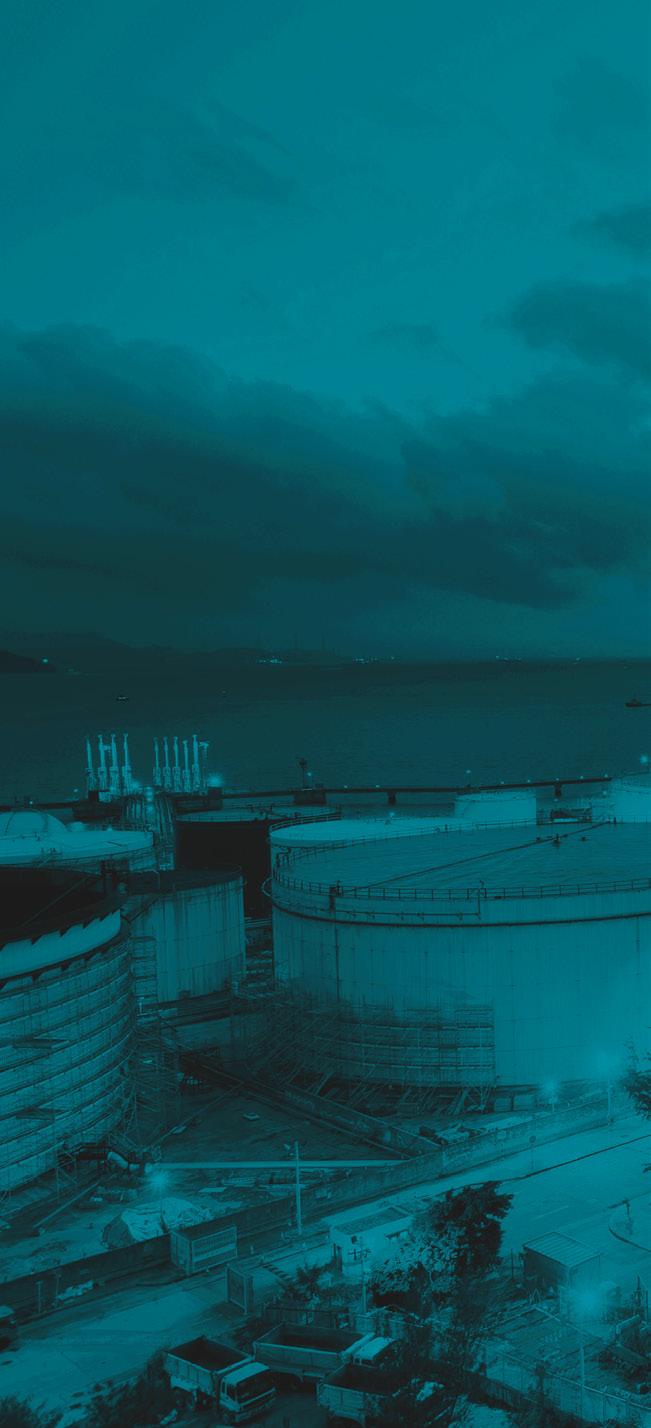
On-demand – in English and in Dutch In-house courses*
By arrangement – to suit your time, location, language

More choices, information and registration at www.eemua.org
Kenilworth, UK

PAGE 11 TERMINAL NEWS EUROPE
Norway
Above ground flat bottomed storage tanks A guide to inspection, maintenance and repair Pub icat on 159 Edition 5
Meet EEM U A at I LTA booth # 769
VITOL ANNOUNCES THE DELIVERY OF FIRST LNG TO INKOO TERMINAL
Energy and commodities company, Vitol has announced the delivery of the first LNG cargo into Finland’s new Inkoo terminal. The cargo was ordered by Elenger, the largest privately owned energy company in the Finnish-Baltic region.
The cargo originates from Vitol’s portfolio of US origin LNG and was transported in the Vivit Americas LNG, a modern LNG tanker which is part of the Vitol fleet. The tanker, sailing under the flag of Malta and built in 2020, is 299 meters long and 46 meters wide and can hold 174,062 m3 of liquefied gas.
Pablo Galante Escobar, head of LNG and European gas and power at Vitol said: ‘Vitol is delighted to deliver the first LNG cargo to Elenger via Finland’s Inkoo terminal. The opening of the terminal will enhance energy security in Finland and the Baltic region, facilitating the flow of LNG from around the world to European industry and consumers.’
STOLT-NIELSEN REPORTS UNAUDITED RESULTS FOR FIRST QUARTER

Stolt-Nielsen Limited has announced its unaudited results for the first quarter ending February 28, 2023. The company reported a first-quarter net profit of $99.8 million (€91.1 million), with revenue of $708.7 million (€646.9 million), compared with a net profit of $95.3 million (€86.9 million), with revenue of $732.5 million (€668.6 million), in the fourth quarter of 2022.
Niels Stolt-Nielsen, CEO of Stolt-Nielsen says: ‘The first quarter continued where 2022 ended, with a solid performance from all businesses during what is typically the seasonally weakest quarter of the year. Stolt Tankers improved on the prior quarter results as we began to see the impact of contract renewals on our earnings. Results at Stolthaven Terminals improved on the back of continued high utilisation, although throughput volume was down slightly.’
NAFTOGAZ PROMOTES GAS STORAGE AND PRODUCTION COOPERATION
The head of Ukraine’s state-owned oil and gas company Naftogaz Group, Oleksiy Chernyshov is promoting Ukraine’s competitive underground gas storage (UGS) facilities and production cooperation opportunities for Europe, during a two-day trip to Brussels.
Chernyshov says: ‘Our goal is to strengthen cooperation with our European partners, including storing European gas reserves in Ukrainian underground gas storage facilities and launching joint gas production projects in Ukraine.’
The CEO of Naftogaz has also met with James Watson, secretary general of the European gas industry association, Eurogas.
Finland Europe
Ukraine PAGE 13 TERMINAL NEWS EUROPE
TERMINAL NEWS: THE AMERICAS
YARA AND ENBRIDGE PLAN $2.9 BILLION AMMONIA PLANT
Norway’s Yara, the world’s largest ammonia distributor, and Canadian energy infrastructure company, Enbridge, plan to invest up to $2.9 billion (€2.6 billion) to build a lowcarbon blue ammonia production plant in Texas, USA.
The plant is to be built at the Enbridge Ingleside Energy Center near Corpus Christi. It will use carbon capture and storage (CCS) technology to ensure the removal of most carbon emissions.
The production facility will be capable of supplying low-carbon ammonia to meet growing demand and has an expected capacity of 1.2 million to 1.4 million tons (1.42 million tonnes) per year.
Around 95% of the carbon dioxide generated from the production process is anticipated to be captured and transported to nearby permanent geologic storage.
IMTT ANNOUNCES PLANS FOR NEW JERSEY OPERATIONS
Bulk liquid storage and logistics company, IMTT has announced plans to consolidate its existing bulk liquid storage operations in Bayonne, New Jersey, USA. This will free up approximately 130 waterfront acres for redevelopment on its 450acre property.
The consolidation will enable IMTT to serve its bulk liquid customers more efficiently and attract additional economic development opportunities to the Bayonne area. Even after the anticipated reduction in storage capacity, IMTT’s Bayonne terminal will continue to be the largest bulk liquids storage terminal in the New York Harbor area.
Carlin Conner, IMTT chairman and CEO says: ‘We are pleased to announce that IMTT is consolidating a portion of the Bayonne terminal and embarking on a transformational development process
for the eastern portion of the property. This will allow us to continue providing high-quality storage and logistics services on the west side of our property and pursue sustainable development opportunities on the east side.’
BUCKEYE PARTNERS ANNOUNCES LAUNCH OF ENERGY TRANSITION DEVELOPMENT COMPANY
Buckeye Partners has announced the lauch of BAES Infrastructure, a diversified energy company that will focus on the development, construction, and operation of energy transition projects. BAES Infrastructure will pursue new energy transition-related opportunities, with its seed assets being Swift Current Energy, OneH2, Bear Head Energy, a low carbon hydrogen and ammonia project under development in South Texas, USA and other advancedstage solar development projects.
Todd Russo CEO of Buckeye says: ‘The launch of BAES Infrastructure represents another step in our energy transition strategy, reinforcing our commitment to investing in growth that aligns with our customers’ current and evolving needs, while facilitating the decarbonisation of the broader economy. This new company will allow us to leverage existing and new relationships and focus on investment and development activity in the energy
BEAR HEAD ENERGY RECEIVES APPROVAL FOR GREEN PROJECT
Subsidiary of BAES Infrastructure, Bear Head Energy has announced it has received environmental assessment approval for the company’s green hydrogen and ammonia production, storage, and loading facility in Nova Scotia, Canada.

Bear Head is permitted for up to two gigawatts of hydrogen electrolysers. Bear Head could produce up to 350,000 tonnes of hydrogen and two million tonnes of ammonia per year, positioning Nova Scotia to be a leader in the production of green hydrogen and ammonia and a critical part of the global energy transition.
Paul MacLean, managing director of Bear Head Energy says: ‘We are grateful to have achieved this enormous milestone for Bear Head…We believe green hydrogen and ammonia will play a fundamental role in facilitating the global energy transition, and this approval demonstrates that Canada and Nova Scotia are at the forefront of making this a reality.’
Bear Head will be developed in phases and is expected to commence deliveries of green hydrogen and ammonia by 2028.
USA Canada USA USA
PAGE 14 TERMINAL NEWS THE AMERICAS
transition space without compromising our focus on safely and reliably operating our critical petroleum products infrastructure.’


AUMA World Discover your valve automation solution anzeige_halbe_Seite_tsm_2022.indd 1 23.02.2023 17:04:21
SEMPRA REACHES FINAL INVESTMENT DECISION ON PORT ARTHUR
USA power and gas utility Sempra Energy has announced that the first phase of its proposed Port Arthur liquefied natural gas (LNG) export terminal will move ahead with investment firm KKR & Co agreeing to a minority stake in the project.
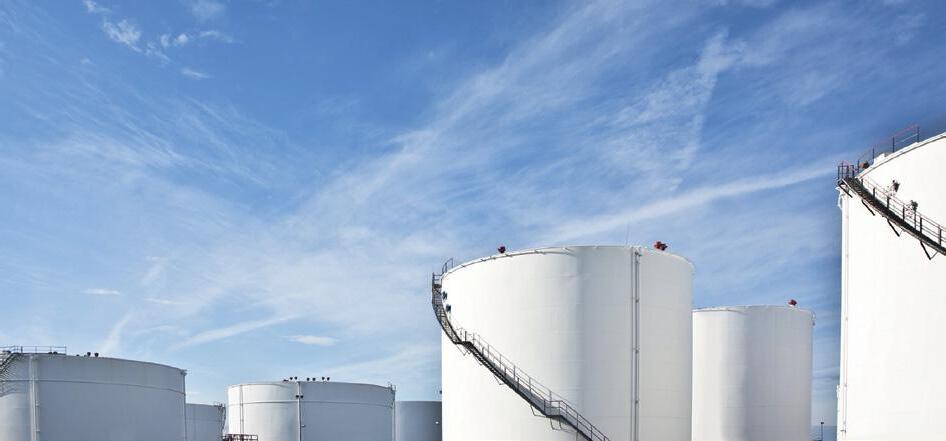
Sempra Infrastructure Partners, the 70% owned unit of Sempra, would target 20% to 30% of indirect ownership interest in the project, subject to the closing of the KKR sale.
Additionally, Sempra Infrastructure announced the closing of the project’s $6.8 billion (€6.3 billion) non-recourse debt financing and the issuance of the final notice to proceed under the project’s engineering, procurement and construction agreement.
Sempra’s unit has also finalised its joint venture with ConocoPhillips. The USA oil producer in November 2022 had said


it would acquire a 30% non-controlling interest in the Port Arthur Phase 1 project in Texas through the JV. Sempra estimates the total capital expenditure for the 13.5-million tonnes per annum (MTPA) plant’s Phase 1 at $13 billion (€12.5 billion).
ConocoPhillips, units of Poland’s Polski Koncern Naftowy Orlen SA, INEOS, ENGIE and Germany’s RWE AG would together buy about 10.5 MTPA LNG from the Port Arthur plant under longterm agreements.
BP STARTS OIL PRODUCTION AT ARGOS PLATFORM IN THE GULF OF MEXICO



BP has successfully started oil production at its Argos offshore platform, delivering more energy at a critical time and strengthening BP’s position as a leading producer in the deepwater USA Gulf of Mexico.
The semi-submersible platform aims to increase BP’s gross operated production capacity in the Gulf of Mexico by an estimated 20%. BP expects to safely and systematically ramp up production from Argos throughout 2023.
BP chief executive, Bernard Looney says: ‘The start-up of Argos is a fantastic achievement that helps deliver our integrated energy strategy – investing in today’s energy system and, at the same time, investing in the energy transition. As BP’s most digital facility worldwide, applying our latest technologies, Argos will strengthen our key position in the Gulf of Mexico for years to come.’
USA USA
PAGE 16 TERMINAL NEWS THE AMERICAS
Argos is the centrepiece of BP’s Mad Dog Phase 2 project, which extends the life of the super-giant oil field discovered in 1998. It is one of nine high-margin major projects that BP plans to start, by the end of 2025.

ENERGY TRANSFER ACQUIRES LOTUS MIDSTREAM OPERATIONS
Midstream energy company, Energy Transfer and independent energy company, Lotus Midstream have announced that they have entered into an agreement in which Energy Transfer will acquire Lotus Midstream Operations. This acquisition will cost approximately $1.45 billion (€1.33 billion).
Lotus Midstream owns and operates Centurion Pipeline Company, an integrated, crude midstream platform located in the Permian Basin. The transaction is expected to close in the second quarter of 2023.
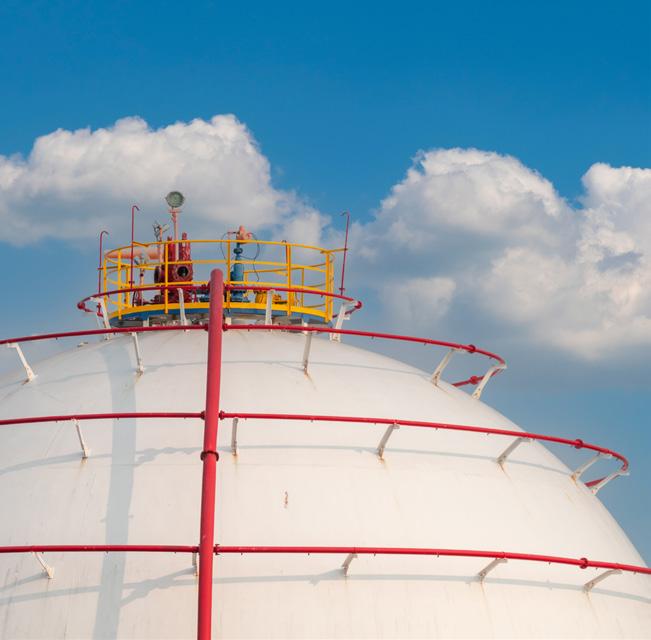
More for Engineering from EEMUA...

People in engineering work to make businesses, the environment, and everyone’s future prosperous and safe - EEMUA’s publications and other resources help people in engineering to get that work done.
EEMUA is the industrial engineering community’s not-for-profit association that, free of shareholders and owners, invests all revenue into sharing guidance resources, events, training, and more.




Practical Resources...
All EEMUA’s resources are developed ‘for industry, by industry’, as practical aids for engineers in their work, as they work, wherever they are, whatever time they have.
Available to all in industry


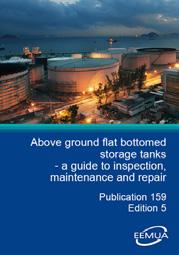

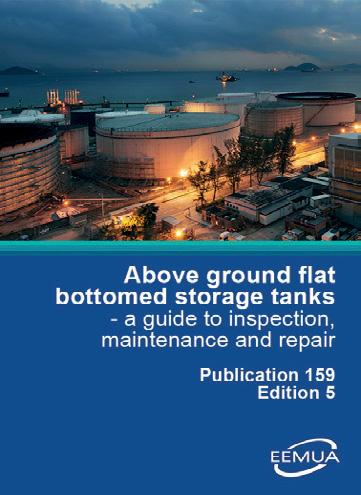


All publications and many other resources are downloadable from EEMUA’s Shop - where you can also register to take part in EEMUA events and training.
Members help yourselves...
Many EEMUA resources are free or discounted for members, so please log in and help yourself to guidance notes, training, e-learning, checklists, live webinars, recordings, and much more.
Join in...
New Corporate Members are always welcome to share EEMUA’s knowledge and influence.
Call on EEMUA...
www.eemua.org
ask@eemua.org
+44 (0)20 7488 0801
USA
A
and disposal 225 Edition 1
Above ground plastic tanks
guide to their specification, installation, commissioning, inspection, maintenance,
154
3 Meet us at ILTA booth # 769
Demolition of vertical cylindrical steel storage tanks and LPG spheres
Edition
PAGE 17 TERMINAL NEWS THE AMERICAS
TERMINAL NEWS: MIDDLE EAST & AFRICA

and other products, including 1.4 million litres a day of petrol and 1.1 million litres a day of diesel.
SHARJAH NATIONAL OIL CORPORATION (SNOC) EXPANDS GAS STORAGE FACILITIES
The latest expansion of SNOC’s gas storage capacity includes two high-pressure compressor trains and associated tie-ins to its existing brownfield facilities at Sajaa.
SNOC set a 10 month schedule from award to completion and successfully completed the project ahead of schedule. The project involved efforts from SNOC’s in-house project team and the EPC contractors Enerflex Ltd and ALUCOR.
The critical project construction achievements were welding 2180 inch dia, erection of 30 tons (27.2 tonnes) of steel, 360 m³ of concrete, 510 m of E&I cables and a safe heavy lift of 87 tons using a 500 ton (453 tonnes) capacity crane.
The project was completed without any operational or environmental incidents and achieved a milestone of 82,000 manhours without lost time incident (LTI).
ABSA GROUP AIMS FOR NET ZERO CARBON EMISSIONS BY 2050
South African lender, Absa Group, aims to cut its net carbon emissions to zero by 2050 by curtailing lending to coal, oil and gas projects and instead increasing its exposure to renewable projects.
‘While we recognise Africa’s particular vulnerability to climate change, our approach to net zero also takes cognisance of the development needs of Africa’s people,’ says Punki Modise, Absa Group’s chief strategy and sustainability officer. The company’s loan portfolio’s exposure to coal would reduce to 0.03% by 2050, from 0.2% in 2023. Oil exposure would reduce to 0.32% from 1.41%.
ACTAD ANNOUNCES OPENING OF GREENFIELD LIQUID BULK TERMINAL
ACTAD has announced the opening of its new greenfield liquid bulk terminal in Khalifa Port, Abu Dhabi, UAE, and will commence operations on July 1, 2023.
The state-of-the-art terminal offers facilities and services for storing and transporting liquid bulk, ensuring high levels of safety, efficiency, and sustainability.
ACTAD’s mission is to provide customers with unparalleled service and expert advice, ensuring their cargo is always in safe hands.
COMMISSIONING BEGINS AT TECHNIP ENERGIES’ KARBALA REFINERY
Commissioning has begun at Technip Energies’ Karbala refinery PMC project in Iraq.
Located approximately 100 km (62 miles) from Baghdad, Iraq, Karbala is Iraq’s first new refinery in decades and is the first refinery in Iraq to meet Euro 5 fuel standards, which will greatly reduce emissions. The project is moving ahead and is scheduled to reach its full capacity of 140,000 barrels per day (bpd) by the end of July 2023.
LIBYA SIGNS SOUTH REFINERY CONTRACT WITH HONEYWELL
A subsidiary of Libya’s state-owned National Oil Corp (NOC) has signed a contract with Honeywell for The project will be carried out in two phases. NOC has previously said South Refinery will produce cooking gas, jet fuel
Libya is seeking to bring foreign investment back into its energy sector after two and a half years of comparative peace following years of conflict. It hopes to take advantage of increased demand for its oil and gas following supply concerns in Europe resulting from the war in Ukraine.
ERBIL-BAGHDAD TEMPORARY DEAL TO RESTART NORTHERN OIL EXPORTS
Iraq’s federal government and the Kurdistan Regional Government (KRG) have signed a temporary agreement to restart northern oil exports through Turkey, as part of a broader deal to end decades of political and economic disputes.
Turkey stopped pumping about 450,000 barrels per day (bpd) of Iraqi crude through a pipeline from the Fish-Khabur border area to its Ceyhan port on March 25, after Iraq won an arbitration case. Under the deal, Iraq’s state-owned marketing company SOMO will have the authority to market and export KRG oil, and the revenues will be deposited in an account at the Iraqi Central Bank under the control of the KRG.
The deal is temporary until the budget law passes in parliament.
Crude flows are yet to restart.
United Arab Emirates
United Arab Emirates
South Africa
Iraq
Libya
PAGE 18 TERMINAL NEWS MIDDLE EAST & AFRICA
Iraq
International Operating Conference & Trade Show
HOU TX
ILTA 2024 is the largest event focused exclusively on the business and technology of liquid terminals. Packed with opportunities to connect with thousands of industry professionals, learn key best practices and discover the latest equipment and real-world industry solutions.

Plan now to attend!

2024
May 6-8 ilta.org
TERMINAL NEWS: ASIA & PACIFIC
IMPALA TERMINALS OPENS TERMINAL AT KWINANA BAY
Impala Terminals has officially opened its first Australian energy import, storage and distribution terminal, Kwinana Bay, western Australia.
Strategically located next to the Kwinana Bulk Jetty (KBJ), Impala Terminals Kwinana will bring fuel distributors alternatives to serve Perth and the surrounding region, creating a more resilient energy market and greater supply security.

The new terminal, which has been in operation since last October, has a storage capacity of 225 million litres/1.4 million barrels, with 11 bulk tanks, four day tanks and a butane tank. The facility includes a diesel express lane which significantly reduces loading time for delivery vehicles, and is equipped with the latest equipment and automation systems. The terminal is currently handling diesel and gasoline, as well as butane for blending, and is supported by a strategic anchor customer.
INPEX REVISES PLAN FOR ABADI LNG PROJECT
Japan’s Inpex Corp has submitted a revised development plan to the Indonesian government authorities for the Abadi liquefied natural gas (LNG) project, now incorporating a carbon capture and storage (CCS) component.
Japan’s biggest oil and natural gas explorer submitted the revised plan of development on behalf of its joint venture with Shell after amending it to include plans to neutralise all carbon emitted from natural gas production at the Abadi gas field through CCS.
Inpex expects to sequentially resume activities associated with the project, including various on-site activities, with an aim to reach a final investment decision in the latter half of the 2020s and commence production in the early 2030s.


STOLT NIELSEN ANTICIPATED TO WIN CONSTRUCTION BID
Stolt Nielsen looks likely to win a development contract for a storage project which will involve the construction of 4 million barrels of petrochemicals at Jurong Prot in Singapore, according to Reuters. The deal, which includes storage and terminal work, is expected to be worth about $300 million (€228 million) and is part of the development being built on the western edge of Singapore.
The contract was meant to have been handed out in December but now the decision on what company will be awarded it is expected to be made within the coming few months.
Included in the new project plans is 3.15 million barrels of oil storage, while the remaining 750,000 barrels will hold chemicals.
NESTE TO START PRODUCTION AT SINGAPORE RENEWABLE FUELS EXPANSION

Finnish biofuel producer Neste plans to start commercial production at its renewable fuels expansion project in Singapore in the coming weeks after trial runs.
Neste plans to inaugurate the 1.3 million tonne-per-annum (tpa) plant next month. The plant will boost Neste’s sustainable aviation fuel capacity by up to 1 million tpa, in addition to a 500,000 tpa project at its Rotterdam plant.
The Singapore expansion and production from a new joint venture plant in California with Marathon Oil Corp hopes to increase Neste’s biofuels capacity to reach 5.5 million tpa by end of 2023, up from 3.3 million tpa.
JERA AND KOGAS SIGN MOU FOR LNG
Fuel energy company, JERA has announced that it has entered into a memorandum of understanding (MoU) with Korea Gas Corporation (KOGAS), regarding cooperation in the LNG business.
Under this MoU, for the sake of securing supply stability of LNG, JERA and KOGAS agreed to discuss opportunities for mutual collaboration in the LNG business including LNG swaps, trading, ship optimisation, and market view exchange.
Russia’s invasion of Ukraine has created a severe energy environment, such as the reduction of pipeline gas supply to Europe, and the uncertainty regarding global energy supply is drastically increasing. In response to these circumstances, under this MoU, JERA and KOGAS will strengthen their strategic relationship and consider developing schemes of cooperation regarding their LNG supply and demand, to enhance stable energy supply in Japan and Korea.
Indonesia
PAGE 20 TERMINAL NEWS ASIA & PACIFIC
Australia
Asia
Singapore
Singapore
We commit to simplify your project, with an e ective heating solution, with every BTU in mind. QMax Tank Heating Solutions are designed to maintain specific process temperatures or provide rapid heat-up inside Tanks, Vessels and other containers using internal tank heating or external tank heating.
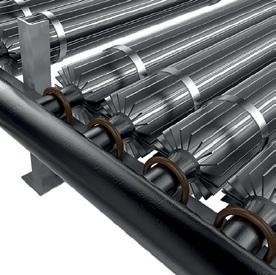
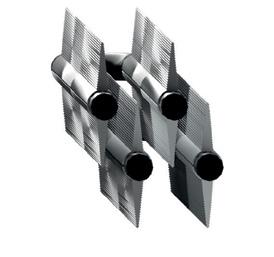










































































qmaxindustries.com • +1 704-643-7299 • sales@qmaxindustries.com Call to find out how together we can save the world 100 Trillion BTUs by 2029



Practical Solutions Globally Recognized Expertise Owner Operator Perspective Asset Improvement • Strategic Investment • Digital Transformation
TECHNIP ENERGIES AWARDED CONTRACT
BY JUHUA
Technip Energies has been awarded a contract by Ningbo Juhua Chemical & Science Co (Juhua) for a 1.3-propanediol (PDO) plant with a capacity of 72 kta(1) and a 150 kta polytrimethylene terephthalate (PTT) plant in Zhejiang, China.
These two products are based on Technip Energies’ proprietary Zimmer PDO and PTT technologies to strengthen and expand Juhua’s petrochemical new materials business.
PDO technology was originally developed by Shell and Shell Catalysts & Technologies will be the catalyst supplier to the PDO plant.
Bhaskar Patel, SVP sustainable fuels, chemicals and circularity of Technip Energies, says: ‘We are very pleased that Juhua has selected two of our polymer technologies for the expansion of their facility in Ningbo. This is the first commercial scale application of our PDO technology, which produces a high quality monomer with excellent raw material utilisation as feedstock for our PTT technology.’
PDO is a colourless, odourless organic chemical that can be used in the pharmaceutical, cosmetics and plastics manufacturing fields. It is also the feedstock for PTT, a high performance and versatile polyester, used in the manufacturing of high quality carpet and textiles.
India
HPCL AND BPCL SIGN MOU FOR HYDROGEN SYNERGY
A memorandum of understanding (MoU) has been signed between HPCL Mumbai Refinery and BPCL Mumbai Refinery for the purchase and sale of hydrogen.
The MoU is a one-of-a-kind strategic partnership between two companies to create synergy for mutual aid during emergencies and towards environmental impact by minimising valuable hydrogen flaring.
The initiative aims to achieve cooperation and collaboration in the areas of hydrogen exchange between refineries for sustained refinery operations and uninterrupted product availability.
Customised tank mixing solutions
Essential
advantages with Körting tank mixing systems:

• low energy input
• no sealing problems
• low investment costs
• no unmixed dead zones
• wear-resistant operation
• no maintenance in the tank
• complete mixing of tank content
• optimisation with (CFD)
Computational Fluid Dynamics

+49 511 2129-221 | sales@koerting.de | koerting.de
China




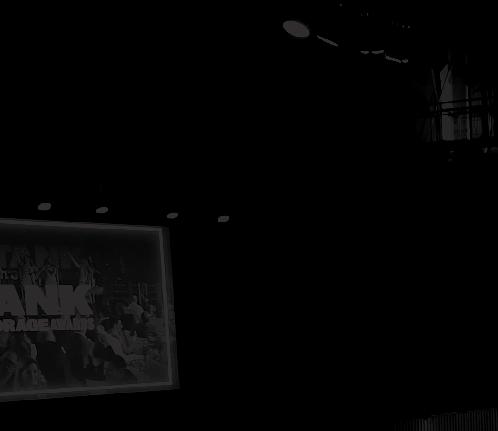
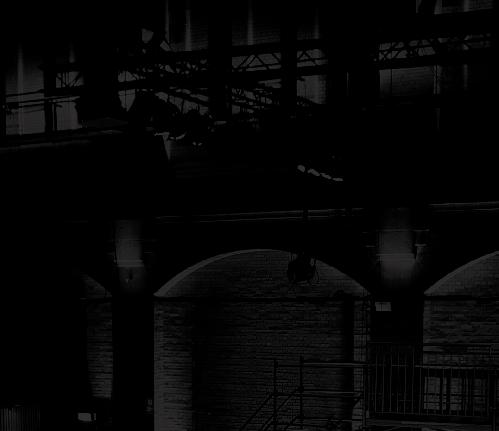






WINNERS 2023 FInd out more > tankstorageawards.com EMERGING TECHNOLOGY GOLD iSensPro BRONZE CLIIN Robotics SILVER Voliro ENVIRONMENTAL PERFORMANCE GOLD CIRCOR BRONZE Aquacycl SILVER TECAM INNOVATIVE TECHNOLOGY GOLD Nordweld BRONZE Imbibitive Technologies SILVER TWTG PORT OF THE FUTURE GOLD North Sea Port BRONZE Port of Amsterdam SILVER Port of Antwerp-Bruges TERMINAL OPTIMISATION GOLD Diamond Key International BRONZE Insights Global SILVER Smartflow
SAFETY TECHNOLOGY
GOLD
Real Safety
SILVER
ScoutDI
OUTSTANDING ACHIEVEMENT AWARD
GOLD
Nicholas Gohl, CFO, Aquarius Energy

SILVER
Helena Hjortberg, Manager
Solutions for Rosemount Tank Gauging, Emerson
SAFETY EXCELLENCE
GOLD Odfjell Terminals Korea
SILVER
ITC Rubis Terminal Antwerp

RISING STAR AWARD
GOLD Guy Curtis, EWFM
SILVER
Martyn Bazem, Exolum

TERMINAL INNOVATION
GOLD
ORLEN Unipetrol RPA
SILVER
Rubis Terminal Tepsa
Bilbao
TERMINAL OF THE FUTURE
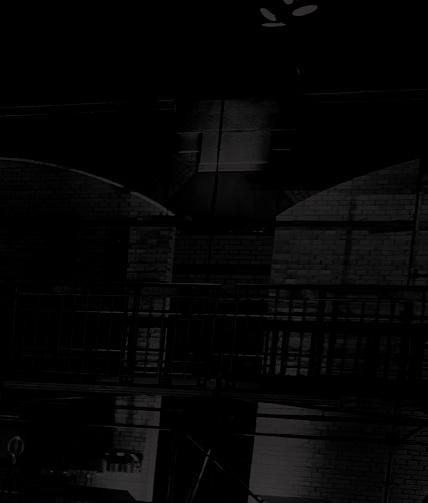

GOLD Advario
SILVER
Euro Tank Terminal
EXCELLENCE THROUGH DIVERSITY
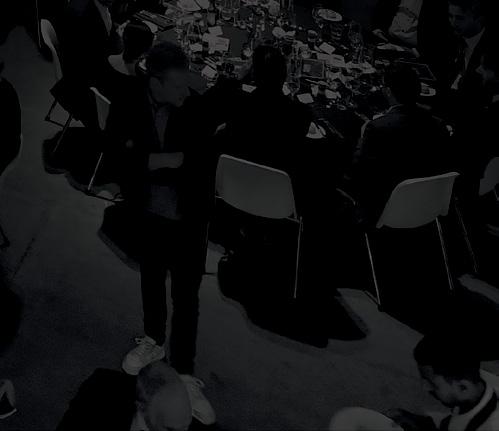

GOLD
Emerson
SILVER
Pallavi Kanhere, CCO, Assai Software Services
BRONZE
CLIIN Robotics

BRONZE
Patrick Kulsen, Managing Director, Insights Global

BRONZE
GPS Chemoil
BRONZE
Amy McKeown, Re-Gen Robotics
BRONZE
Koole Tankstorage
Botlek
BRONZE
ACE Terminal

BRONZE
Vopak WeConnect


MATEC® GROUP is a leading company specialized in the production of flexible hoses of different type, in its factories throughout ITAY:

• COMPOTEC® flexible composite hoses,
• ENCO® flexible metal hoses,

• DACAFLEX® flexible PTFE hoses,

• ROITER® flexible rubber hoses


THE PRODUCT
For over 40 years the name of MATEC® Group has been synonymous with special hoses for the Petroleum and Chemical industry, for Fuel transportation with Tank trcks or Marine loading/unloading purposes.

COMPOTEC® hose is light, strong, highly flexible, anti-static and kink-proof. Yet it is extremely durable thanks to the tensioned internal and external steel wire spirals, which give great strength.
COMPOTEC® offers the most extensive and varied composite hose range for an extremely wide range of applica-tions. Precisionengineered end fittings complete the range.
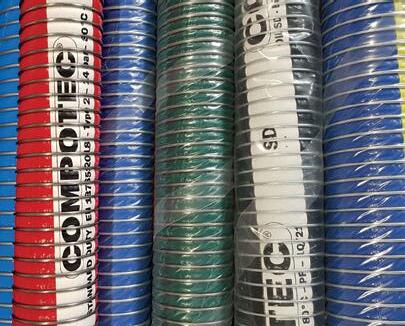

Boasting a temperature range of -200°C (Cryogenic hose), to +200°C (Hitemp hose), and pressure ratings of 10, 15 and up to 40 Bar W.P. for special types, COMPOTEC® hoses are lined with either Polypropylene or PTFE, giving the hose excellent resistance to solvents, chemicals, acids, resins and all petroleum based products. So, if you are in the petroleum or chemical business, call the people who specialize in making hoses for your applications.
THE COMPANY
Founded in 1980, we have constructed in the course of the years an advanced product structure, which is equal or superior to the Quality, Environmental and Safety demands of the market.
Day-in day-out our 12000 sq/mt Italian plants produces flexible hoses for customers worldwide, using te-chnologically advanced manufacturing systems.

Our manufacturing capabilities and expertise ensure that we are able to respond positively to customer needs, no matter how unusual or difficult.
We have an excellent reputation as a specialist company providing a highly technical and efficient service to custo-mers in the wide range of industries served.
We pride ourselves on our ability to adapt existing products or develop new ones to solve specific problems, and ho-pe you will call on our expertise to meet your special needs.
aca lex
THE BEST CONNECTION YOU CAN MAKE IN THE PETRO-CHEMICAL INDUSTRY. CONNECT WITH COMPOTEC®
MATEC GROUP SRL Via Primo Maggio, 7 • 20068 • Peschiera Borromeo (MILANO) • ITALY Tel. +39 02 5530 1788 • Fax. +39.02 5472 158 e-mail: matec@matecgroup.com • web: www.matecgroup.com
Proud to say that we really are the “FLEXIBLE SOLUTION”
TANK TERMINAL UPDATE
OKEA
Products: Oil
Cost: $220 million (€200.36 million)
Capacity: 40,000 boed
Construction/expansion/acquisition: Norwegian independent oil and gas producer Okea has agreed to buy a 28% stake in Norway’s Statfjord production licence from Equinor. The deal increases Okea’s total production by between 13,000 and 15,000 barrels of oil equivalent per day (boed) in 2023 and by between 16,000 and 20,000 boed in 2024.
Comment: Okea says: ‘In addition, the agreement contains contingent payment terms applicable for 2023-25 for certain thresholds of realised oil and gas prices.’
SAUDI ARMACO
Products: Oil, ethylene and paraxylene
Cost: $12.2 billion (€11.3 million)
Capacity: 300,000 (bpd)
Construction/expansion/acquisition: Saudi Aramco has signed an agreement with Chinese partners for an oil refinery and petrochemical project in northeast China expected to start in 2026 to meet the country’s growing demand for fuel and chemicals.
Comment: Construction at the complex will start in the second quarter after the project secures the required administrative approvals. The plant is expected to be fully operational by 2026.
EXXONMOBIL
Products: Petrochemical
Capacity: 630,000 bpd
Construction/expansion/acquisition: ExxonMobil has announced the successful startup of its Beaumont refinery, USA, expansion project, which adds 250,000 barrels per day of capacity to one of the largest refining and petrochemical complexes along the USA. Gulf Coast.
Comment: Karen McKee, president of ExxonMobil product solutions says: ‘ExxonMobil maintained its commitment to the Beaumont expansion even through the lows of the pandemic, knowing consumer demand would return and new capacity would be critical in the post-pandemic economic recovery.’
SEMPRA
Products: Liquefied natural gas (LNG)
Cost: $13 billion (€12.5 billion)
Construction/expansion/acquisition: US power and gas utility Sempra Energy has announced that the first phase of its proposed Port Arthur liquefied natural gas (LNG) export terminal will move ahead with investment firm KKR & Co agreeing to a minority stake in the project. Sempra Infrastructure Partners, the 70%-owned unit of Sempra, would target 20% to 30% of indirect ownership interest in the project, subject to the closing of the KKR sale.
Comment: Sempra estimates the total capital expenditure for the 13.5-million tonnes per annum (MTPA) plant’s Phase 1 at $13 billion (€12.5 billion).

BP AND ADNOC
Products: Offshore natural gas
Cost: $2 billion (€1.8 billion)
Construction/expansion/acquisition: BP and Abu Dhabi’s state oil giant have made an offer to acquire 50% of Israeli offshore natural gas producer NewMed Energy for around $2 billion (€1.8 billion).
Comment: The offer involves acquiring NewMed’s free-floating shares and taking the company private and would mark Abu Dhabi National Oil Co (ADNOC) and BP’s entry into Israel’s growing energy sector.
ONYX POWER
Products: Hydrogen
Capacity: 1,200 MW
Construction/expansion/acquisition: Electric utility company, Onyx Power plans to make a significant contribution to emission reduction in the Netherlands by building a hydrogen production plant at its existing site in the Port of Rotterdam.
Comment: With a capacity of 1,200 MW the plant could produce some 300 kiloton per annum blue hydrogen, to aid in decarbonising the industry and meet national targets.
PAGE 27 TANK TERMINAL UPDATE
USA
Netherlands
Norway United Arab Emirates
USA China
HARBOUR ENERGY AND BP
Products: Carbon capture and storage
Capacity: 30 million tonnes of per year
Construction/expansion/acquisition: Independent oil and gas company, Harbour Energy and energy giant, BP have announced that they have entered into an agreement to develop the Viking CCS transportation and storage project, the Humber, UK. Under the terms of the agreement, Harbour will continue as operator of Viking CCS with a 60 per cent interest and Bp will acquire a 40 per cent non-operated share.
Comment: The announcement follows the UK Government’s recent decision to launch Track 2 of its CCS cluster sequencing process.
it has signed a sales and purchase agreement with anode producer, Aluchemie. The new site in Rotterdam provides Advario with the opportunity to develop, build, innovate and operate the storage infrastructure its customers and partners need to successfully transition to cleaner energy.
Comment: The target date for completion is 31 December 2025, after which Advario can start construction.
TOTAL ENERGIES
Products: Oil, gas and renewables
Cost: $27 billion (€24.6 billion)
LINDE AND HEIDELBERG MATERIALS
Products: Carbon capture and storage
Capacity: 70,000 tons (63,500 tonnes)
Construction/expansion/acquisition: Industrial gases and engineering company, Linde has announced it has signed an agreement with building materials company, Heidelberg Materials to jointly build, own and operate a largescale carbon capture and liquefaction facility. Through the use of carbon capture, Linde and Heidelberg Materials will aim to reduce carbon emissions at Heidelberg’s Lengfurt plant in Germany.
Comment: ‘Our innovative project with Heidelberg Materials is one of the first large-scale plants of its kind for the cement industry,’ says Sean Durbin, executive vice president EMEA at Linde.
EVOS
Products: Green hydrogen and hydrogen fuels
Construction/expansion/acquisition: Evos Hamburg, the Lother Group and E-Fuel GmbH have announced that they will be cooperating with the intention of establishing the Hamburg Blue Hub. This is a core initiative within a chain of other projects to get ready for the import of green hydrogen and hydrogen-based fuels in Hamburg. The aim is to establish Hamburg as key distribution centre for green fuels in Europe.
Comment: Managing director of Evos Group, Harry Deans, says: ‘Evos is determined to put our extensive experience to great use and ensure that we handle future fuels with the same care and expertise.’
Construction/expansion/acquisition: French oil major TotalEnergies has confirmed it has reached an agreement with the Iraqi government on a longdelayed $27 billion (€24.6 billion) energy project, reviving a deal that aims to bring back foreign investment into the country.

Comment: The deal was signed in 2021 for TotalEnergies to build four oil, gas, and renewables projects with an initial investment of $10 billion (€9.1 billion) in southern Iraq over 25 years.
INEOS PHENOL
Products: Chemicals
Cost: $330 million (€302 million)
Capacity: 1 million tonnes of product each year
Construction/expansion/acquisition: Producer of phenol and acetone, INEOS Phenol has announced the acquisition of the Japanese chemicals manufacturer, Mitsui Phenols Singapore from Mitsui Chemicals is complete.
ADVARIO
Products: Energy products
Construction/expansion/acquisition: Liquid energy storage and logistics provider, Advario B.V, has announced
Comment: Gordon Adams, business director of INEOS Phenol says: ‘Entering the Asian market via this acquisition gives INEOS Phenol a unique capability to support our global customers’ plans for future growth.’

PAGE 28 TANK TERMINAL UPDATE
United Kingdom
Iraq
Germany
Germany
Netherlands
Singapore






12 - 14 March 2024 Save the date. Scan the QR code to be kept up to date with the latest news, exclusive editorials, interviews and more. > Stocexpo
SPEARHEADING THE DIGITAL REVOLUTION
A HOLISTIC STRATEGY
Odfjell Terminals is a global provider of independent tank storage solutions for the chemical industry, with a track record in developing, owning, and operating tank terminals for more than five decades. With four tank terminals across the world, two in the USA in Houston and Charleston, the company has positioned itself in a strategic position, offering a total of 1.32 million m3 of storage capacity across 450 storage tanks.

‘It’s undeniable that the world continues shift and transform. We’re continually thinking of new ways to approach old problems by becoming more effective and efficient. Automation is part of how any company has to operate to stay competitive in current markets,’ says Varilla. OTUS’s digital transformation includes implementing terminal management systems, assets management, data warehouse and business analytics, and more.
IN 2021 , Odfjell Terminals US (OTUS) launched a multi-year digital transformation programme at its US terminals. The ambitious programme aims to harness the latest technologies to help maintain the highest safety standards, boost efficiency, and provide a future-proof foundation for business scalability and growth.
Two years on, Aldrich Varilla, IT director, received the Corporate ORBIE for organisations with up to $300 million (€273 million) annual revenue. The ORBIE Awards is the leading technology executive recognition program in the United States. ‘Just making it through the preliminary rounds of the ORBIE awards is a huge accomplishment,’ says Varilla. The finalists are chosen through an independent peer review process, led by previous ORBIE winners, which adds to the awards’ credibility and integrity. The nominees are then subjected to a rigorous evaluation process and their efforts must be documented and confirmed by coworkers and employers, leaving nothing to chance.
This year, the jury received over 180 nominations from a range of business
areas and industries. ‘The calibre of the nominated CIOs and CISOs demonstrates the high level of digital expertise in Houston,’ says Varilla. Of the 180, 36 finalists were elected, and by that recognised by their peers as the best in their field. Varilla was announced as the winner of the HoustonCIO ORBIE for 2023 in April.

‘Automation is more than just new equipment and systems. When thinking about holistic solutions, the operational philosophy, organisational change management, people, and processes are all important. We have to view the entire journey map and elevate every stakeholder involved, to work in concert. Unlocking that gives us real automation,’ says Varilla.
With this in mind, the digitalisation strategy cannot be left to just the IT department. ‘It takes a unified approach with all departments and parties,’ says Varilla. ‘Realising that early and attacking it from a holistic mindset unlocks boundless benefits.’
DIGITAL TRANSFORMATION
‘Digital transformation never really ends. It’s a philosophy and woven into the fabric of an organisation’s culturescape,’ says Varilla. ‘We’re constantly looking at new ways to execute and innovate.’
Before beginning the implementation of the digitalisation project, the majority of operational and administrative processes at OTUS were highly manual. Data capture was limited, and most documentation was done through excel
PAGE 30
Fresh from his ORBIE award win, Aldrich Varilla, IT director for Odfjell Terminals US tells Tank Storage Magazine about the company’s digital initiatives 01 02 PROFILE ODFJELL TERMINALS US
spreadsheets and paper forms. Now, workflows will become streamlined, safer and with fewer manual errors. Tasks will be carried out more efficiently, leading to reduced costs, and data collection will be highly automated.
‘I can say our digital transformation stage is essentially set in perpetuity but understanding we’re bound by economic means, we’ll approach it through our project governance prioritised by risk and benefits,’ says Varilla. ‘Even then, we’ve still unlocked tremendous benefits so far that have helped feed our continued transformation journey.’
OTUS also recognises that the digitalisation strategy has led to improved safety performance and increased customer and employee satisfaction. Varilla says: ‘Our mission is to provide value to our customers through safe, reliable and efficient operations.’
MEETING STRATEGIC OBJECTIVES
OTUS focuses on meeting its set strategic objectives through sustainable means:

• Safety
• Cost control
• Commercial growth and;
• Service excellence
Varilla refers to these as the pillars of the business, and therefore the key priorities when it comes to decision-making. This allows the team to draw ‘a prioritised business capability-driven map of our company’s gaps and challenges aligned to their functional areas, with hard benefits tied,’ he says.
‘In the short term, we always think with a ‘small wins, big gains’ strategy,’ continues Varilla. ‘Target the low-hanging fruit within the strategic objectives: easy wins, drastic gains.’ In terms of a digitalisation strategy, it starts with small applications that can still make a big difference to the way people work.
‘We start with things like low code applications, digitalising process workflows, electronic signatures, electronic visitor check in, modern workplace, stable communications, modernising our physical badging and security system, upgrading our data centres, rationalising costs and catching up overall on our lowhanging technical debt items,’ says Varilla. ‘This all leads to building momentum for the greater changes.’
Tackling these short-term challenges paves the way to approach larger projects. ‘In other words, there’s no shortcuts or short-term thinking. Transformation isn’t easy; it takes extreme perseverance if you want to realise recurring benefits.’
LOOKING TO THE FUTURE
Growth, excellence and expansion are on the agenda for OTUS’s future, according to Varilla. ‘We must think in terms of longevity and ability to maintain this for the long haul. Our strategic roadmap and solutioning is shaped by this. Long-term, I can only imagine having our terminal operations as best in class,’ he says. ‘I think the fact that we’re already undergoing a tremendous transformation journey and putting hard investments into it show case our commitment to customers, ourselves and securing our future.’
Varilla gives more concrete example of how the digital transformation will likely impact terminal operations long-term: ‘Tactically, this is an emulsification of processautomation, data democratisation, heavy internal and external system integrations, high cybersecurity posture, Mobility Field Services, led by proper governance and organisation maturity to play at it professionally.’
However, Varilla recognises that OTUS is not the only terminal looking to digitalise. ‘While the act of transformation isn’t going to stand out in a competitive market, the yield results of what we are expecting and delivering will,’ he says. ‘These include a better customer experience with integration and customer
portal capabilities, stable and effective operations to ensure we facilitate a crucial part of our customers supply chain, and knowing that by focusing on our safety and effective operations, our customers product quality retain best quality due to the consistent services we provide.’
Odfjell is an award winning activist in ESG and already seen as leaders in sustainability. ‘We’re constantly thinking of these areas and our digital transformation initiative removal of paper is just one example of helping our environment,’ Varilla says.
He stresses the importance of crosscompany collaboration and a holistic approach to digitalisation. ‘I can speak for our terminals in that the IT and OT space are drastically converging. I’m fortunate that our IT and engineering departments are heavy partners and work closely together in unison. There’s been many areas that traditionally, in our industry, may have been a strictly engineering function, but with more focus on cybersecurity, data and automation through systems, networking, infrastructure and mobility, we see IT really coming in to help elevate it all.’
For more information:
www.odfjell.com 01
PAGE 31
Odfjell Terminals Houston
Aldrich Varilla, IT director for Odfjell Terminals US
Odfjell Terminals Houston 03
02
03
PROFILE ODFJELL TERMINALS US
‘There’s no shortcuts or short-term thinking. Transformation isn’t easy; it takes extreme perseverance if you want to realise recurring benefits.’
OFF-GRID ENERGY AND MEETING TARGETS
Flogas Britain’s business development director, James Rudman tells Tank Storage

with the ever-changing energy market
FLOGAS BRITAIN has completed a tripartite deal with North Sea Midstream Partners Limited (NSMP) and Exolum Seal Sands (Exolum) at the Teesside gas processing plant, UK. The deal is set to boost the resilience of offgrid energy across the north of England and Scotland and provide security of supply to homes and businesses in the region. At present, the Teesside plant handles much of the gas extracted from the North Sea, including a significant tonnage of propane. However, James Rudman, business development director at Flogas Britain, explains: ‘To date, this gas has not been turned inland for UK use and is instead exported to global markets. We wanted to change this.’
Over the years, the UK off-grid gas market has become a net importer of propane. However, there’s a definite requirement for a more stable supply. Demand is growing, especially as off-grid homes and businesses are set to move away from oil to a lower carbon alternative. According to a report by WLPGA on LPG and bioLPG, propane has a 20% lower carbon intensity than oil and emits far fewer pollutants, so Flogas believes it is set to play a key role in the energy transition for off-grid Britain.
‘This is why we were so keen to find a way to bring in propane from the North Sea. Teesside is an excellent opportunity to boost the resilience of off-grid energy across the north of England and Scotland, and our new tripartite deal means we’ll see up to 120,000 tonnes of propane turned inland later this year,’ says Rudman.
LOCATION AND COLLABORATION
For more than two decades, Flogas has been investigating ways of getting propane extracted from the North Sea to be turned inland. Two years ago, it was decided that the caverns storing the propane, were going to be decommissioned. Flogas contacted NSMP and Exolum to find a way to load the propane on to road tankers for inland distribution to its customers. ‘We were able to form an agreement with NSMP and Exolum Seal Sands, whereby NSMP will transport propane to existing
infrastructure owned by Exolum, and then we act as the off-take partner, distributing the supply across the region,’ explains Rudman.
The current Teesside site is dormant and hasn’t been used in over a decade. However, works for the collaboration are underway, and propane is planned to be brought in from October 2023. In addition to storing propane, Flogas has the opportunity to consider infrastructure for other products handled at the processing plant, including butane. The facility also has capacity to be a gateway for renewable gases in the future, with space for additional storage vessels. NSMP will bring in large volumes of gas via the 404 km-long CATS gas pipeline
that’s connected to various gas fields in the North Sea, as well as having an existing pipeline connection to Exolum’s nearby storage facility. ‘This site was the perfect location, as there were five unused tanks there, which were capable of being converted to handle propane,’ says Rudman.
Flogas expects that all off-grid homes and businesses in Scotland and the north of England will see the benefit of an increased and more resilient supply of gas. ‘The collaboration will also be beneficial to future customers moving away from fuels like oil, and looking for a cleaner, more efficient alternative,’ says Rudman.
OFF-GRID ENERGY
‘Flogas is leading the industry in improving the security of the UK’s off-grid energy supply, reducing the reliance on imports, and providing clear options for renewable energy in the future, in support of net zero targets,’ says Rudman. The company’s new supply at Teesside will represent about 10% of the current market size and offers a significant increase of product to improve security and resilience of supply.
PAGE 32
Magazine
it’s
01
how
keeping up
PROFILE FLOGAS BRITAIN
‘The collaboration will also be beneficial to future customers moving away from fuels like oil, and looking for a cleaner, more efficient alternative.’
In addition to the development in the north at Teesside, Flogas also has a solution in the south of England. It is developing the UK’s largest above ground propane storage facility in Avonmouth, Bristol, which will have the capacity to store 34,564 tonnes. Planning permission for a pipeline into Avonmouth was recently granted, linking the UK to a diverse, global supply of offgrid gas, and enabling it to import ship cargos of up to 20,000 tonnes.

ADAPTING FOR THE TRANSITION
Flogas is dedicated to helping off-grid customers navigate their pathway to net zero emissions. ‘Propane is one of the cleanest, most efficient conventional off-grid fuels available at scale, and customers switching from other fuels,
such as oil, benefit from significant carbon savings and better air quality with fewer pollutant emissions,’ explains Rudman. ‘Propane has an important role in the off-grid energy transition.’
Thinking to the future, Flogas is serious about meeting its 2040 ambition. ‘We want to provide 100% renewable energy solutions to customers and have a solid plan in place that involves a phased introduction of renewable products, building on our existing portfolio,’ says Rudman.
As well as helping customers on the road to net zero, Flogas is also focused on making its own business fit for the future. Rudman says: ‘We have pledged to reduce our direct carbon emissions by 20% by 2025, and we aim to become completely carbon neutral by 2050.’
FUTURE OF FUELS
At the moment, Flogas’ priority is to get the propane infrastructure delivered, but it is also looking at the possibility of butane and other products in the future. ‘One exciting opportunity is to look at rDME (renewable Dimethyl Ether). This renewable fuel can be produced from municipal solid waste and has very similar properties to propane. In fact, it can be blended with propane up to a maximum of 20%, reducing the carbon intensity of the blended fuel as a result,’ says Rudman. Flogas plans to install an rDME storage tank in the next two years to enable these propane/rDME blends to be loaded on to road tankers, which will only increase its capacity for off-grid energy.
On top of this, Flogas also acquired Protech Group last year, adding a full suite of low carbon and renewable technologies to its portfolio, including air-source and ground-source heat pumps, solar PV, and hybrid systems.‘This means we’re now fully equipped to help customers meet legally binding carbon reduction targets,’ says Rudman.
Flogas is making progress to provide a stable supply of off-grid energy in the UK. The collaboration at Teesside will strengthen the use of off-grid energy and will turn up to 120,000 tonnes of LPG inland from October 2023.
For more information:
www.flogas.co.uk
www.wlpga.org
James Rudman,
PAGE 33
02
01
business development director, Flogas Britain
02 Teesside gas processing plant, Seal Sands
PROFILE FLOGAS BRITAIN
‘We want to provide 100% renewable energy solutions to customers and have a solid plan in place that involves a phased introduction of renewable products.’
WORLD-CLASS FACILITY
Leading regional player for processing industry chemicals in the GCC region, AquaChemie, inaugurates its new petrochemical terminal at Jebel Ali Port

AQUACHEMIE Middle East has officially inaugurated its world-class petrochemical terminal in DP World’s Jebel Ali Port in Dubai. The advanced $50 million (€46.1 million) terminal will be one of the most functional and versatile bulk liquid terminals in the GCC region. It will serve as a vital gateway to facilitate and boost the growing petrochemical trade between manufacturers and endusers across the Middle East and globally. The new terminal, which is essentially a break-bulk facility, fills a supply chain void by serving as a strategic hub for the liquid petrochemical trade and distribution.
THE DEVELOPMENT
AquaChemie commissioned Mott MacDonald for the new facility’s design, detailed engineering and project management. The region’s leading mechanical, electrical, instrumentation, and civil contractors are also credited for the project’s completion in record time.
‘It took us over four years to bring the AquaChemie terminal from concept to reality,’ says Subrato Saha, AquaChemie’s MD. ‘We are thankful to have met such capable collaborators along the way who assisted us in shaping it.’
The foundation of the petrochemical terminal was laid in November 2020, with the new facility being awarded its OFC (Operation Fitness Certificate), along with all of the required regulatory certifications from Dubai Civil Defense and DP World in January 2023. Since, the facility has been fully CDI-T assessed and is ISO 9001,
ISO 14001, and ISO 45001 certified. The terminal has already serviced the first vessel carrying chemicals.
ACCOMPLISHMENTS
The chemical terminal covers an area of 20,000 m² and is located some 500 m from Chemical Berth 4 in Jebel Ali Port. The new facility is linked by five SS pig-gable jetty pipelines, making it one of the most functional and versatile bulk liquid terminals in the GCC region.
With a total storage volume of over 34,000 m³, the 26 large tanks in tankfarms A, B, C, and D are well equipped to handle over 100 UN Class 3 and 8 chemicals. The terminal has three tanker truck loading bays for top and bottom loading, five semi-automatic drumming lines, a warehousing facility with over 6,300 drums, a dedicated ISO tank storage area, and a weigh bridge at the truck entry point.
‘Our new state-of-the-art terminal is a step towards integration of our current oil and gas offering for the upstream and downstream petrochemical sectors,’ says Anand Kumar, managing director of AquaChemie. ‘The supply reliability and lower supply chain cost will benefit our existing customers, as chemicals will be delivered on time so that the customers’ operations are not disrupted.’
‘The new terminal will also assist in the formation of strategic alliances with regional and global manufacturers of petrochemicals, in order to distribute bulk products to customers in smaller
packaging. To maximise capacity and partially offset operation costs, a few tanks in the new facility will be leased for third-party storage. Chemicals hold enormous promise for the region. We hope, humbly, to contribute to this value chain,’ Kumar adds.
STAND OUT POINTS
The terminal is fully monitored and controlled from a central control room. AquaChemie’s corporate headquarters are located on the same site to allow the leadership team to stay in close proximity. This houses the terminal’s operation control room, support and sales staff offices, dining and recreation areas, management office and board room.
LOOKING TO THE FUTURE
The regional petrochemical industry also stands to benefit from the new terminal, located in Jebel Ali Port. This is part of a trade network connecting one-third of the world’s locations, while also offering streamlined customs clearance and other trade-related processes.
Snehal Karia, VP business development of AquaChemie, says: ‘I am especially excited about our combined offering of a centrally located storage terminal supplemented by local setup in each Middle Eastern country. We will become a dependable chemical product supplier all year round, and serving on all days. Our new facility now enables the storage of several new products with improved pricing and availability for end-users.’
China, the United States, Russia, Saudi Arabia, and South Korea are amongst the top six countries, by volume, producing bulk petrochemicals worldwide. The global petrochemical market is expected to reach $5.4 trillion (€4.9 trillion) by 2027, growing at a CAGR of 4.1% during the forecast period.
For more information:
www.aquachemie.com
PAGE 34
01
PROFILE AQUACHEMIE
01 Inauguration of the new AquaChemie Petrochemical Terminal


Featuring: Exclusive interviews with leading terminal operators Thoughtful analysis into the latest tank storage and future fuels CHEMICAL STORAGE SUPPLEMENT Distributed at: BOOK YOUR ADVERT NOW IN THE AUG/SEPT EDITION. BOOK NOW anamika.talwaria@easyfairs.com GASTECH, SINGAPORE TANK STORAGE ASSOCIATION CONFERENCE, UK ADIPEC, ABU DHABI WORLD HYDROGEN CONGRESS, NETHERLANDS POSTED TO 3,500 & EMAILED TO 30,000 TERMINAL PROFESSIONALS WORLDWIDE Established 2005. Trusted. Valued. Influential. Established 2005. Trusted. Valued. Influential.
‘DO NOT CALL ME A DIVERSITY HIRE’
Embracing and encouraging diversity in the industry leads to endless possibilities, says Smartflow’s Stefana Sopco
SMARTFLOW’S head of content marketing, Stefana Sopco, journeyed into the tank storage industry following a passion for technology and digitalisation. During her first two years of living in the Netherlands, before Smartflow, Sopco worked at another tech company that built a gamified learning app. Following this position, she landed the role of head of content marketing at Smartflow – a SaaS company with a solution used to digitalise inspections and checks within the energy, maritime and TIC industries. Sopco aims to inspire women and girls across the world, but in particular those from Romania, to explore opportunities in historically masculine industries. ‘I have always been drawn to technology,’ says Sopco. ‘My journey into the world of tank storage was never planned, but technology and digitalisation were always an interest of mine.’
Having previously worked in IT, Sopco knew the significance of digitalisation in the modern world. In her current role, Sopco helps to spotlight future ideas, workers, and generations of the tank storage industry. Whilst her start in the industry incorporated a mixture of learning and tackling obstacles, three
years on, she has established a platform as a woman in the industry, lifting up others. Sopco says: ‘I am being put at the table in the industry. And even if it is extremely scary, I must be there. I am never going to say no to opportunities to talk about my experience in the industry.’
‘One day I hope young Romanian girls who dream of building a career and leaving difficult environments, will come across my LinkedIn profile and see that Stefana Sopco from Romania has managed to achieve what she wanted. I do not want them to fear a potentially ‘mannish’ industry,’ says Sopco.
IMMERSION IN THE INDUSTRY
Sopco is responsible for everything that falls under Smartflow’s marketing division, allowing her to be close to customers and end users. She enjoys being immersed in the industry and getting to be at events, learning and developing her understanding of the industry, as it too evolves. This is key, as it’s important to understand how an industry works before trying to implement a product or solution. Sopco is interested in the development of others and the challenges they face. And therefore, how
Smartflow can help in those journeys. As part of the Smartflow team, Sopco brings digitalisation closer to the company’s core. She establishes the bridge between wanting to know more, and implementing it. As a part of her role, she ensures audiences are educated about the opportunities behind the digital transition from paper to mobile processes.
Outside of Smartflow, Sopco is also the head of inclusive marketing at Women in Tech Netherlands, where she works closely with women professionals with tech backgrounds. The group’s mission is to empower women through events, workshops, and courses to grow, establish themselves, and work in tech.

As with Tank Storage Magazine’s Women in Tanks initiative, Sopco hopes to use the platform to find more established women professionals, learn from them as well as empower others to join. She creates content around topics such as diversity and inclusion in the energy sector and gender equality.
‘I want to make sure women are not left behind the curtains, but that we are the main character in a play written by us,’ she says.
In between writing educational content and increasing awareness of the bridges technology builds, Sopco writes content for specialised magazines and Smartflow’s online resources hub to help individuals in the industry embrace new methods of management and working practices.
In addition, Sopco participates in energy events as a speaker, the latest one being the European Liquid Bulk in Rotterdam. She also chaired StocExpo’s digitalisation-focused conference track on 16 March. Sopco is also often invited to podcasts where she either shares her insight on digitalisation, digital transition or diversity and inclusion. Sopco’s other work includes running webinars, visiting and interviewing clients, and collaborating with different organisations.
CHALLENGES OF TANK STORAGE
Sopco is not one to avoid a challenge or a male-dominated working environment. Sopco says: ‘It is extremely challenging.
01 PAGE 36
IN
WOMEN
TANKS STEFANA SOPCO
It is not for everyone. This is what talks to my own values and way of being. You will never get invited to sit at the table, you must make room for yourself.’
Originally from Romania, Sopco has always been driven and laser-focused on achieving her goals. When she moved to the Netherlands, she applied for a wide range of jobs in various sectors – even if she thought she may be at a disadvantage because she was a woman.
After landing her role at Smarflow, Sopco focused on progressing the company’s three core values: people, passion and trust. At Smartflow, inclusivity and diversity is actively encouraged. The company achieves this by running a workshop to identify employees’ values, in addition to regular meetings to discuss everyone’s thoughts and feelings. By establishing a strong culture of transparency and open communication, Smartflow is always looking for recruiting people from diverse backgrounds. By tackling issues of a lack of diversity head-on as an organisational responsibility, Smartflow empowers Sopco to use her voice and go on stage, in addition to feel comfortable making mistakes and not being perfect.
TACKLING GENDER IMBALANCE
Mechanic, energy, and fuel industries have often been typically maledominated. With STEM subjects becoming more widely accessible to both genders, there has been a gradual increase in women in the tank storage industry. However, Sopco notes that many of the events are still maledominated. ‘In this industry, you often only see women at the bar. And that is not how it should be,’ says Sopco. She cites the lack of female presence in a professional capacity, especially on panel discussions.
Sopco recalls a particular event, where a company rolled out a promotional video for the audience. It was introduced as ‘the video created by the girls from the marketing department,’ she says.
‘I am one of the girls in the marketing department, so I took it personally. The business had the perfect opportunity and platform to give women in the industry recognition, but it missed this opportunity. I don’t want to be labelled as the marketing girl. I want to be referred to as Stefana Sopco, head of marketing.’
Sopco asserts there is no room for discrimination anymore – the tank storage industry needs to attract talent from individuals at school age. The industry needs to ask itself: how do you make it an attractive place to work for young girls? The answer lies in a holistic approach to hiring, according to Sopco. In encouraging young women
to explore potential opportunities in the tank storage sector, the sector needs to prove it is willing to train and teach them as equally as its male colleagues. To date, many women in the industry are hired to showcase diversity but Sopco explains how this is a negative etiquette in hiring processes. Women are not a diversity hire, they should be an added value hire based on skills, experience, capacity to add-on new skills, portfolio, achievements and more. Smartflow hired Sopco initially because she was argumentative and willing to go the extra mile, but also because she had hands-on experience and set up the grounds for herself from the beginning.
In order to encourage women into the industry, and create a diverse workforce, women must be considered for the different perspectives they can bring to a male-dominated workforce. Achieving a balance means developing communication skills, increasing collaboration, and changing mindsets.
THE FUTURE FOR WOMEN IN THE INDUSTRY
The tank storage industry needs a workforce, and irrespective of gender, this needs to be fulfilled. Initiatives such as Tank Storage Magazine’s Women in Tanks community help to promote women in the industry and give them a platform to inspire others to think about careers in the tank storage industry.
Whilst there are still a limited number of female fieldworkers and operators, this should not be a deterrent for women choosing their career paths. ‘The industry is waking up and recognising this. When you train a workforce equally, it doesn’t matter the gender of each individual worker,’ says Sopco. She hopes to see more women in technology, at the terminals, pursuing fieldwork and more.
When approaching younger generations, Sopco thinks showing them that there
are opportunities for all is the key to securing a more gender-diverse industry. The industry is traditional, but it is changing and that needs to be continued to further enhance the equality of
opportunities. Sopco says: ‘It is all about flexibility and scalability.’ Everyone must be a part of the change. And if everyone participates in progressing the industry then an efficient and high-standard workforce can be retained.
Campaigns such as StocExpo’s Forty Under 40 are essential tools in achieveing such diversity and inclusion. The initiative aims to recognise the best and brightest new talent in the industry, promoting a future generation of talent – and Sopco was awarded at StocExpo 2023. Sopco says: ‘Being next to 39 other knowledgeable industry professionals worldwide has made me once again realise how important it is to remain consistent, persevere, get out of your comfort zone, and make room for yourself despite the challenges along the way. The Forty Under 40 award gave me the opportunity to represent Women in Tanks and Women in Tech and emphasise the importance of diversity and inclusion within the sector.’
For more information: www.smartflowapps.com
 01 Stefana Sopco, head of content marketing at Smartflow
02 Stefana Sopco and her Forty Under 40 award at StocExpo 2023
01 Stefana Sopco, head of content marketing at Smartflow
02 Stefana Sopco and her Forty Under 40 award at StocExpo 2023
02 PAGE 37 WOMEN IN TANKS STEFANA SOPCO
‘You will never get invited to sit at the table; you must make room for yourself’
LEGISLATING FOR ALTERNATIVE FUELS
FETSA’s executive director, Ravi Bhatiani, looks at what’s needed from political leaders to enable the energy transition

THE FEDERATION of European Tank Storage Associations (FETSA) is committed to help achieve the EU’s 2030 and 2050 climate targets by replacing fossil fuels with low-carbon and renewable energy carriers. This transition must be driven by legislation (such as the ‘Fit for 55’ Package and the ‘REPowerEU’ Plan), market incentives, consumer choices and geopolitical needs.
For this to succeed, investments will be needed to foster the adaptation of existing storage and distribution infrastructure, as well as research, development and innovation in the field of logistics.
ENABLING ALTERNATIVE FUELS
The tank storage sector as represented by FETSA is contributing to the EU legal framework for sustainable investments known as the EU Taxonomy in order to direct investment flows to our sector. FETSA is explaining to the EU that storage infrastructure should be classed as a sustainable investment, especially the infrastructure related to future energy carriers.
This includes the infrastructure for renewable and low-carbon energy carriers replacing conventional fossil fuels including – in a non-exhaustive list of examples – biodiesel (FAME/HVO), bioethanol, e-gasoline, e-diesel substituting diesel, gas oil and gasoline; compressed or liquid hydrogen substituting methane or LNG; e-fuels (hydrogen, methanol, ammonia) substituting marine fuels; e-fuels or sustainable aviation fuel (SAF) substituting kerosene; and bio-LPG substituting LPG.
For each of these alternatives, storage and distribution infrastructure (import/export terminals, pipelines etc.) represent the key step in the supply chain to enable the uptake of low-carbon and renewable fuels. This is why storage and distribution of current and future energy carriers should
be classified as an ‘enabling activity’ under the EU Taxonomy, in accordance with Article 16 of the Taxonomy Regulation.
CLASSIFICATION OF INFRASTRUCTURE
The classification as ‘enabling activity’ should certainly be the case when such infrastructure is used to store and transport products that meet the taxonomy criteria – in line with the current classification of hydrogen storage as an enabling activity.
Such recognition is needed to direct private sector funding towards high capex (capital expenditure) projects aimed at developing storage and distribution infrastructure that enable the energy
transition, particularly in transport. This should be considered a priority issue, as EU-wide legislation, national energy and climate plans and projects (such as TEN-T corridors) have already built clear pathways and trajectories for renewable and low-carbon fuels up to 2050. This is a critical issue for our sector and we are working together with like-minded trade bodies like UPEI representing complementary infrastructure to storage such as associated logistics, to promote this point of view at EU level.
For more information:
Please contact Ravi Bhatiani. www.fetsa.eu
WHAT IS THE EU TAXONOMY?
The Taxonomy Regulation includes six climate and environmental objectives, namely: (i) climate change mitigation, (ii) climate change adaptation, (iii) sustainable use and protection of water and marine resources, (iv) transition to a circular economy, (v) pollution prevention and control, (vi) protection and restoration of biodiversity and ecosystems. It also sets out four overarching conditions that an economic activity has to meet in order to qualify as environmentally sustainable.
According to these, an economic activity should contribute substantially to one or more of the climate and environmental objectives, it should not significantly harm any of the other objectives, and it has to be carried out in compliance with minimum social safeguards, which are defined in the regulation.
Finally, it has to comply with technical screening criteria established through delegated acts by the commission, who is empowered to draft the actual list of environmentally sustainable activities. These criteria are based on the input of external experts, namely the Technical Expert Group on Sustainable Finance and the Platform on Sustainable Finance. To stay current, the criteria for activities will be updated as technology evolves, in order to take into account the latest scientific and technological developments, and therefore mobilise private investment towards ever-cleaner energy solutions.
Source: The European Commission https://ec.europa.eu/newsroom/fisma/ items/738336/en
PAGE 38
MARKET ANALYSIS ENERGY TRANSITION
HYDROGEN’S ROLE IN THE ENERGY TRANSITION
Madana Nallappan, EIC analyst, Asia Pacific region, discusses the emerging developments of hydrogen supply chains and the need for policy changes
WITH THE urgent need to meet climate targets and enhance energy security, hydrogen has emerged as a leading contender for the energy transition. Europe has been at the forefront of this development, particularly in countries such as the Netherlands, Germany, and the UK.
Other regions such as Australasia, North and South America, and Asia have also shown significant interest, with a total of 26 countries, including the UK, having developed comprehensive hydrogen strategies, and more than 20 governments working on drafting national strategies. The global hydrogen project pipeline currently has more than 500 projects for hydrogen production, with a potential investment of over $400 billion (€377.6 billion) if all these materialise. More than 85% of these involve green hydrogen production. According to EIC data, the total global electrolyser capacity that is set to come online between 2022 and 2030 is around 364 GW, producing up to 54 million tonnes per annum (mtpa) of green hydrogen.
In the last two years alone, over 346 GW worth of electrolysis projects have been added to the global project pipeline. Assuming this trend continues, it is possible that the current electrolysis capacity in the pipeline could more than double by the end of 2024, surpassing the current global demand of approximately 94 mtpa.
Hence, it is critical to increase the demand for clean hydrogen now, to encourage its adoption as a clean energy source. Without sufficient demand, clean hydrogen producers may not be able to find off-takers or secure investment to scale up production.
ESTABLISHING DEMAND AND GUIDELINES
It is in maritime shipping where demand creation is vital. This sector is responsible for a quarter of all emissions produced by the global transportation sector, emitting nearly a billion tonnes of carbon annually.
The International Maritime Organisation (IMO) has introduced new policies,
following discussions with the industry, to reduce greenhouse gas emissions, including the Energy Efficiency Existing Ship Index (EEXI) and the Carbon Intensity Indicator (CII). These measures will become mandatory from 2023, with the first ship ratings to be given in 2024. They require ships to adopt technical measures to reduce emissions and to target reductions in emissions operationally.
HYDROGEN IN THE MARITME INDUSTRY
Green hydrogen and its derivatives show significant potential as clean marine fuels. They can power combustion engines and fuel cells and are gaining traction in the maritime sector. For instance, MOL and Mitsui have received approval from ClassNK for the design of a large ammoniapowered bulk carrier that features a main engine fuelled by ammonia, resulting in zero carbon emissions during the voyage. The vessel also has two ammonia fuel tanks on deck to maximise the cruising range for different routes and make the most efficient use of cargo space.
In Norway, Amon Maritime’s ammoniapowered shipping joint venture Viridis Bulk Carriers and its consortium partners secured development funding from the Norwegian Pilot-E program to build ammonia-powered vessels.
EQUALLING DEMAND WITH HYDROGEN PROJECTS
According to the IEA’s Stated Policies Scenario (STEPS), current policy settings will only drive hydrogen demand to around 115 mtpa by 2030, which is not too far from the current demand levels. Although there has been a recent surge in project announcements, with more expected to come online by 2030, projections indicate that all the policies announced thus far to stimulate demand are not sufficient to meet growing hydrogen demand.
Most hydrogen strategies emphasise production targets and the need to increase hydrogen usage in hard-to-abate sectors, but they lack clear targets to stimulate demand for clean hydrogen. The majority of existing policies that
aim to increase demand for hydrogen primarily focus on road transportation, while very few target industrial applications and none for shipping.
According to the IEA, current targets announced by governments worldwide only cover around 4% of current global hydrogen demand in industry, which is approximately 4 mtpa, with most of these targets stated in strategies by European Union member states.
THE QUESTION OF THE FUTURE
The hydrogen sector urgently requires demand-pull policies to stimulate demand for clean hydrogen in both traditional and newer applications such as the maritime sector. Knowing where future demand for hydrogen will come from, at what level, and crucially, when, will help increase investor confidence in the industry. The IEA suggests that the hydrogen sector could be looking at close to 1,000 GW of capacity addition by 2026, which would equate to approximately 150 mtpa of clean hydrogen.
Doubtless, hydrogen is gaining traction as a leading contender for the energy transition, with Europe at the forefront of its development. The global hydrogen project pipeline has over 500 projects for hydrogen production, with the majority involving green hydrogen production. But the hydrogen sector urgently needs demand-pull policies to stimulate demand for clean hydrogen, especially in the maritime sector, which is responsible for a quarter of all emissions produced by the global transportation sector.
Without sufficient demand, clean hydrogen producers may struggle to find off-takers or secure investment to scale up production. This calls for creating immediate demand for clean hydrogen to encourage its adoption as a clean energy source.
For more information:
www.the-eic.com
PAGE 39
MARKET ANALYSIS ENERGY TRANSITION
VIRTUAL REALITYBASED PROCESS AND SAFETY TRAINING
Karthik Govindarajan, president at Oak Tree Consulting, tells Tank Storage
VIRTUAL REALITY (VR) and augmented reality (AR) technologies are increasingly popular in the field of process and safety training. These technologies provide an immersive learning experience, providing trainees with a hands-on approach to learning complex procedures and navigating hazardous scenarios.
In traditional training methods, trainees learn through lectures, demonstrations, and role-playing exercises, which are often limited in their ability to replicate real-world situations. Computer-based lessons are now common and often used for introductory and refresher classes. In general, these are based on reading a passage and selecting the correct answer from multiple choices.
On the other hand, VR/AR technologies provide an interactive and engaging immersive training experience that allows trainees to experience and respond to real-world situations in a simulated environment.
VR is a computer-generated simulation of a 3D environment that a user can interact as though they are there. These experiences typically involve the use of a headset and immerse users in a virtual environment.
AR is typically viewed through a smartphone or tablet where digital content is overlaid onto the real world.
TRAINING THE WORKFORCE
Workforce retention and aging employees are common issues with industrial companies. They are looking for solutions to quickly train and communicate information that has typically been acquired after many years of experience. While the needs are clear, most organisations are looking for low-cost solutions to improve their bench strength.
VR training has been shown to reduce training times and costs, improve knowledge retention and job performance. What makes VR technology so appealing is that it can be adapted for
any environment or process. Creating a virtual copy of a plant or manufacturing site (also known as a digital twin) allows a user to train in their own environment. Then, when they are working in the real world, they are familiar with where everything is and how to use the equipment. In a virtual environment, trainees can see what happens when things go wrong or during an emergency and learn how to respond in a controlled and safe setting.
VR training has been used in many industries, including: automotive, aerospace, power and utilities, construction, medical and education. Hazard training, safety training,
operations and maintenance are some examples of processes that have been translated into VR technology.
As shown in image 01, any environment can be recreated and any number of process steps can be incorporated into an immersive learning environment.
In image 02, the user is learning about plant maintenance in a digital twin of their work location. This allows them to become familiar with the environment and train in the same layout as their actual work site. Guided instructions provide clear directions for proper procedures and a checklist can be summoned for reference anytime.

PAGE 40
Magazine how VR and AR technologies are changing training procedures 01 MARKET ANALYSIS VIRTUAL REALITY
THE PROS
There are several advantages for utilising VR as part of a training program. Firstly, there is a reduced need for physical training equipment, workers can learn on simulated equipment and do not require the actual equipment to be available. This reduces downtime and new and training workers can gain experience without disrupting operations. Workers are able to learn how to operate equipment more efficiently and in turn, improving workforce efficiency.
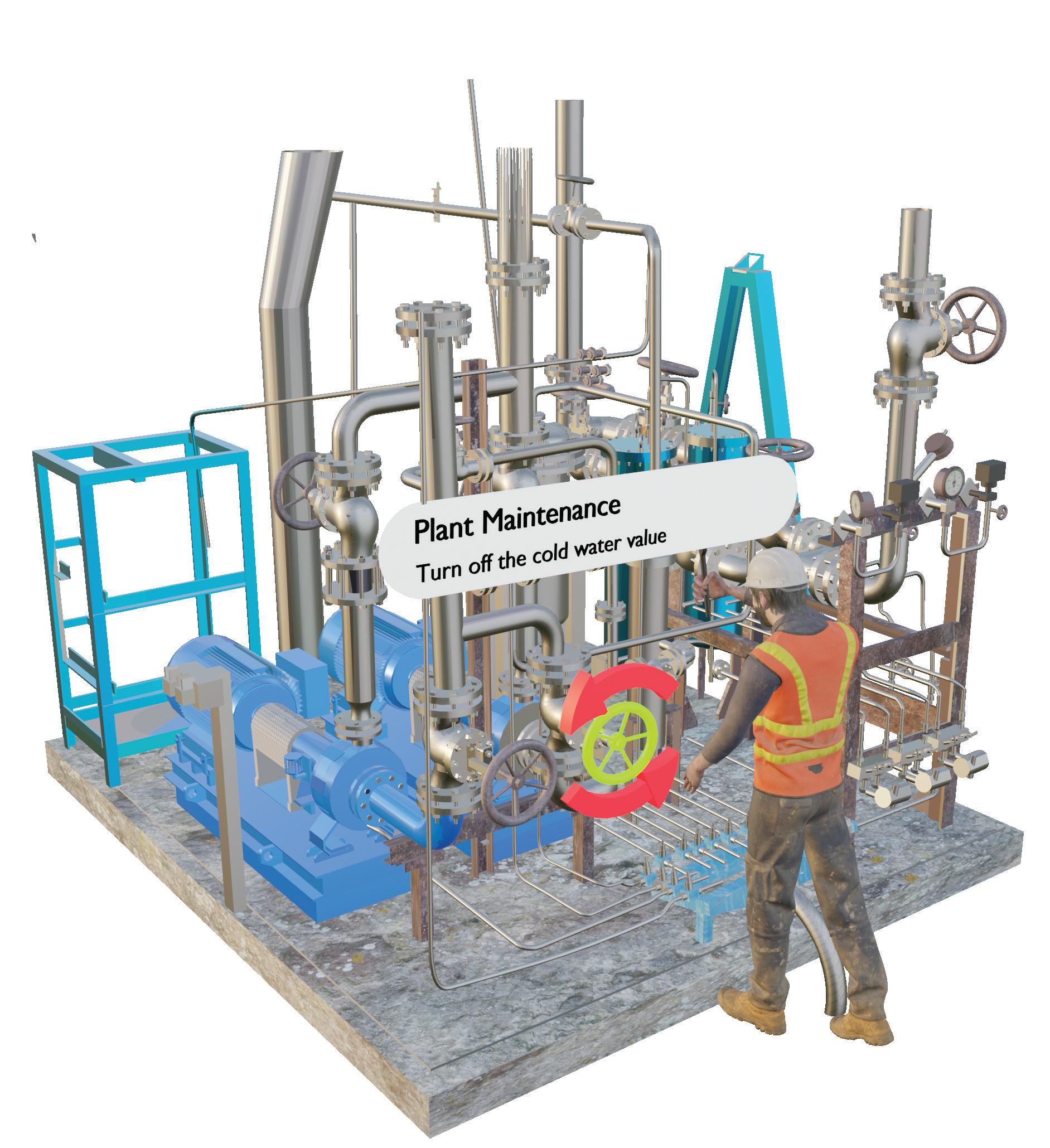
The VR technology is customisable meaning it can be used to replicate any environment, equipment or processes. While in a VR training session, workers can do things that they cannot do in the real world and can test limits to understand consequences of not following protocols and test boundaries. They are also able to repeat scenarios virtually as many times as required until they feel confident in that process. In addition, companies can keep track of training progress. Data-based assessments on individuals and team performance are capable of pinpointing areas of concern for every trainee, rather than just providing a pass/fail score.
WHAT TO CONSIDER
However, there are trade-offs to think about when adding VR to your training procedures:
• Hardware/software requirements: It is important to identify the hardware requirements and develop a plan for upkeep and obsolescence. Where and how the training software will be stored is an important decision. The training can either be run directly from the headset or tethered to a computer.
• Training: Employees will need to be trained on how to use the virtual reality program, including any tools, such as a headset and controllers.
• Privacy and data ownership: Identify what data is collected, where it is stored, and who has access. This needs to be discussed with the VR training provider and the company’s IT department, especially if the data needs to remain on site, behind the company firewall.
• Regulations: VR training alone may not be sufficient to meet compliance requirements, especially for OSHA and other government mandated training.
• Costs: Total costs include all equipment, software development and web hosting. In addition, onsite training and ongoing technical support should be considered. As VR technology matures, the costs for implementation continue to drop.
NOT JUST GAMES
Virtual reality is demonstrating its value, far beyond just gaming. It is being adopted in multiple industries. While VR technology can be used to create immersive training experiences, it is important to stay aware of data privacy and compliance requirements. VR-based training can improve knowledge retention and provide workers with valuable experiences in a safe and controlled environment. Realistic scenarios, interactive training, and safety protocols can all be incorporated
into virtual reality training. Metrics can be tracked and used to assess worker performance and improve training programmes.
VR/AR technologies provide a valuable tool for process and safety training, as they provide trainees with a more immersive and engaging learning experience. These technologies allow workers to learn critical skills and procedures in a safe and controlled environment, reducing the risk of accidents and improving overall safety in the workplace. As VR/AR technologies continue to evolve, they will likely play an even more significant role in process and safety training in the future.
For more information:
www.oak-treeconsulting.com
karthik@oak-treeconsulting.com
PAGE 41
02
01 Snapshot inside a laboratory training simulation
02 Snapshot of a VR-based maintenance training simulation
MARKET ANALYSIS VIRTUAL REALITY
The VR technology is customisable, meaning it can be used to replicate any environment, equipment or process. Workers can do things that they cannot do in the real world and can test limits.
BIOFUELS OF THE FUTURE, LEADING THE CHANGE
Cyann Fielding asks biofuels experts to share their predictions for the future of tank storage and sustainability
BIOFUELS ARE an increasingly popular alternative to traditional fossil fuels. They offer a promising solution to the world’s growing energy needs, while reducing carbon emissions and other environmental damages. Derived from organic matter, such as plant material or waste, biofuels can be used in a wide number of applications, including transportation, heating, and electricity generation.
However, it’s important to recognise that biofuels are not a new phenomenon; they are just becoming more popular. As industries aim to decarbonise, biofuels are particularly attractive to sectors that are difficult to electrify, such as transport and aviation. So, more terminals are looking for ways to incorporate biofuels into their businesses.

SUSTAINABLE AVIATION FUEL
It is recognised that liquid fuels will continue to be the dominant fuel for air travel through to 2050. The easiest way to make the process greener is by transitioning from fossil-derived jet fuel to sustainable aviation fuel (SAF).
‘Due to the unique way that different SAF processes are signed off, all SAF types (currently nine approved and growing) currently require dedicated storage facilities,’ says David Richardson, business development director at bespoke fuel supplier, Coryton. ‘We are well equipped to handle and blend
hundreds of unique fuel components already, however we are not typical of the general fuels industry. The unique certification process of SAFs mean that for every certified process you will need one more additional tank in your tank farm,’ adds Richardson.
That said, terminal operators don’t always need to build brand new assets to accommodate. ‘The tank modifications in some cases are very minimal,’ says Krien van Beek, storage broker at ODIN – RVB Tank Storage. ‘To change from jet fuel to SAF is very simple. All that is needed is some additional lines to segregate the different grades for example.’
It is important to have rigorous certification processes for any new SAF process, to ensure that the fuel meets the required standards for safety, performance and environmental sustainability. The ASTM D7566 grade is widely recognised as the standard for SAF, involving ‘fit for purpose’ tests that are essential to ensure the quality and suitability of the fuel for use in aviation.
Tests incorporated in the ASTM D7566 certification process include cold operability, fuel systems compatibility, and thermal stability, among others. Cold operability tests evaluate the ability of the fuel to flow at low temperatures. In addition, they ensure the fuel is compatible with existing fuel aviation systems and components. Thermal stability tests evaluate the fuel at high temperatures, which is important for
ensuring that the fuel does not break down or form harmful by-products during use.
Whilst ASTM D7566 certification tests are currently being used in the US, the UK has recently employed ‘Jet Clearing House’, which aims to streamline new processes. Jet Clearing House could help to reduce the time and cost required for certification testing, while maintaining the necessary standards for safety and environmental measures.
ARE BIOFUELS WORTH THE COST?
Terminals can be reluctant to facilitate for biofuels for many reasons. Production costs, limited availability, government subsidies, infrastructure costs and market demand all contribute to high costs of biofuels relative to fossil fuels and other products. Government support for investing in infrastructure, encouraging innovation and developing new feedstocks can help to reduce such costs. While biofuels can be more expensive upfront, they can provide cost savings over time through increased energy efficiency or reduced maintenance costs for equipment that uses biofuels.
‘Ultimately supply and demand will dictate costs [of biofuels] in the long term, but whilst these products are still in their infancy, they will require financial support, either in increased fares or from subsidies from national governments. But if we want to tackle climate change as quickly
PAGE 42
TECHNICAL BIOFUELS
HIGH BIODIESEL BLEND DELIVERS 13% CARBON REDUCTION IN REAL WORLD APPLICATION

As Europe’s largest manufacturer of biodiesel, Greenergy operates three wasteto-diesel plants: two in the UK, at Immingham and in Teesside, and a third in Amsterdam. Founded over 30 years ago, Greenergy was the first to introduce the supply of low emission diesel at UK forecourts and is continuing to develop low carbon biofuels and renewables to support the energy transition. Today, blending biodiesel into petrol and diesel remains one of the most effective ways to deliver immediate carbon emission savings for road transport.
AMBITION: To reduce emissions in both the fuel Greenergy supplies and consumes, the company has committed to reduce operational emissions by 50% by 2030 (against a 2020 baseline) and aims to be operationally carbon neutral by 2035.
ACTION: In 2022, Greenergy worked with its in-house haulage company to reduce operational emissions by adopting a B20 fuel, a high percentage biodiesel blend, in a portion of the fleet. The trial demonstrated that B20 works well under real world conditions in terms of carbon saving and cost, and it is now planned to expand B20 use further across the fleet. During the 12-month trial, Greenergy saw an annual average 13% GHG emission improvement and a saving of 274 tonnes in carbon emissions compared to using B7 diesel.
To help support net zero, Greenergy is advancing various projects for nextgeneration and low-carbon renewables, leveraging existing supply chains and fuel infrastructure. Greenergy’s next-generation waste-to-renewables projects will produce and supply lower carbon and no carbon fuels utilising waste feedstocks like used cooking oil (UCO) to manufacture biodiesel or sustainable aviation fuel (SAF), as well as end-of-life tyres, plastics, household waste, and has also invested in supply chains for green hydrogen. A new renewables facility in Teesside is currently being developed, where end-of-life tyres will be processed into development fuels and circular economy products such as recovered carbon black (rCB). Commercial production is planned for 2026.
Mark Whittle, head of next generation renewables at Greenergy, says: ‘Our biofuels play a key role in decarbonising transport by delivering carbon emission savings in existing vehicles and fleets. Greenergy is making key investments in next generation projects to produce renewable lower carbon and no carbon fuels and products from waste feedstocks, further supporting decarbonisation and supplying our customers with renewables that can help them achieve their net zero targets.’
as possible, this is something which needs to be done,’ says Richardson. ‘If we’re serious about tackling climate change, we need to have open and honest debates about how we do that when it comes to transportation. We need to make sure that all avenues are properly explored and we also need to acknowledge that there is no ‘silver bullet’ perfect solution. But that doesn’t mean we shouldn’t try to do what we can, as soon as we can.’
It can also be expensive to get the right permits and certifications in place. However, it makes your facility more attractive for forward-looking biofuels companies. ‘A terminal should apply for ISCC (International Sustainability and Carbon Certification) in order to store the biofuels, permit to store waste, animal by-products (in case the used cooking oil is used for animal feed, for example), and Category 3, if only as feedstock for biodiesel. For ethanol, they require a customs bond and excise permit, which is difficult to get and requires funds. Every litre needs to be accounted for. Therefore, strict procedures and measurement systems should be paid attention to,’ says van Beek.
CHANGING LEGISLATION
Global governments are increasing pressure to lower carbon emissions by bringing in new legislation. As such, processes have become more extensive and it is increasingly difficult to obtain licenses or establish changes. ‘A terminal must provide more details, reports and calculation of future risks and environmental impact in order to comply with the zero emissions rules,’ says van Beek.
However, permits and legislation can be obstacles to the ease of shifting to biofuels. ‘Acquiring a permit to build tanks for new energy projects involves high costs and there is no guarantee to getting a permit or when to get a permit. That makes it difficult for terminals to keep up with the demand,’ adds van Beek.
TERMINALS THAT STAND OUT
It is not just governments and policy makers that are increasing the pressure and limits over the amount of carbon emissions produced. Growing concerns from partners, investors and consumers all stress the need for alternative fuels that not only contribute to the energy transition, but also a more sustainable and clean future. This means biofuels. But with greater demand comes a need for better storage infrastructure. North Sea Port is a front runner in leading the transition to biofuels. ‘A lot of the biofuels history started in Ghent, Belgium, in North Sea Port in 2005,’ says
PAGE 43
01 TECHNICAL BIOFUELS
Sandra De Mey at North Sea Port. Today, we produce 1.3 million tonnes of biofuels. We have the means to make the storage. And of course, we also have the 2.0 generation, so it means we’re going to the next generation of biofuels.’
From a client perspective, a terminal with the right compliances already in place is attractive to store biofuels. ‘Biofuel owners look for storage opportunities where they can receive, blend and deliver product,’ says van Beek.
A terminal that is meeting emissions targets and that also complies with certifications to store and process product is effectively a one-stop-shop.
‘Owners want a terminal that is ISCC approved so their double counting scheme works, where they have flexibility to use different vessel types, tanks with heating to store various biofuels, ideally where waste products can be handled (although only few terminals can handle waste). Having the flexibility to store different categories of biofuels (animal byproducts or not, CAT 1/2/3) is also very important,’ says van Beek.
Equipping tanks so that they are capable of storing biofuels can be done with ease when an operator has the right expertise and guidance. ‘From gasoline to ethanol, there is a requirement for a change of the valves and seals. Terminals can also have issues financing carbon projects, meaning the only option is to invest in non-carbon projects. Operating licenses are also becoming stricter – therefore,
with every renewal, a shift to biofuels will help in limiting harmful emissions.’
INCREASED ACCELERATION AND THE FUTURE
Undoubtedly, the Russia-Ukraine war has impacted the position of the biofuels market, but this is not necessarily negative. Instead, it has forced the acceleration of lower emissions and green fuels. ‘Gas storage demand has increased. Rail connection to supply eastern Europe, to avoid the Black Sea, has increased. 2030 climate change goals are getting stricter and being implemented faster across the globe,’ says van Beek.
This acceleration has no sign of slowing down, so industry needs to look at the supply chain in order to keep up and also achieve global climate goals. ‘Carbon credits should not become a paper tiger, but rather, carbon saving should be an actual climate improvement. Building a biodiesel plant, but vessels using fossil fuels or a pipeline or change of terminal to avoid high barge movements is not taken into account,’ says van Beek. Shipping and the vessels still emit sulphur, which ends up in the water rather than the air.
Van Beek says: ‘The mandates for blending biofuels into the carbon fuels are increasing, therefore a growth is expected.’ But this is not so straightforward. ‘On the other hand, it is very dependent on rules and regulations,
CASE STUDY: SECOND-GENERATION
CHALLENGE: Cespa, a Spanish energy company, and Bio-Oils, Apical’s biofuels entity in Huelva, Spain, wanted to address the challenge of sustainable energy production and the circular economy in Europe. Both companies saw the need for a large-scale plant to produce second-generation biofuels (2G) from organic waste, which would be a more sustainable feedstock and address access challenges.
SOLUTION: Cespa and Bio-Oils created a joint venture to construct the largest 2G biofuels plant in southern Europe. The plant will be located in Cespa’s La Rábida Energy Park, in Palos de la Frontera (Huelva) and will use organic waste, such as agricultural residue or used cooking oil, as its feedstock. Cespa will contribute its technical expertise and knowledge of the European market

BIOFUELS
and decarbonisation goals, while Bio-Oils will ensure the supply of raw materials and contribute its expertise in biofuel production.
The new plant will create approximately 2,000 jobs and be designed with digitalisation in mind, incorporating state-of-theart technology, such as artificial intelligence, internet of things (IoT) and data analysis to maximise process efficiency and ensure the highest standards of safety and environmental protection.
RESULT: The plant, which will entail an investment of up to €1 billion, will produce 500,000 tonnes of SAF and renewable diesel annually. The sustainable fuels developed in this new plant will save 1.5 million tonnes of carbon emissions per year, equivalent to 30% of emissions in the province of Huelva. The plant
which create uncertainties For example, food related feedstocks limitations, subsidies/taxes/duties,’ she adds.
So, how does the industry adapt to cooperate in the movement towards increased use of biofuels? ‘It’s not only about the company who produces the biofuels but they also have the companies who store the raw materials, who store after the production the liquids who then the barge companies who are involved, it’s really a chain. So if something does not work in the chain, a lot of companies are infected, or in a good way they can work together,’ says De Mey. ‘Here in Ghent, we have something that’s called an Energy Valley. So it means all those kinds of companies are here at one location, and they all work perfectly together.’
In grouping companies together, the wrinkles that arise to establishing a brighter future for biofuels, are ironed out.
For more information: www.bio-oils.com
www.cespa.es
www.coryton.com
www.greenergy.com
www.northseaport.com
www.odin-rvb.com
01 Coryton biofuels worker in a laboratory
02 Cespa and Bio-Oils workers on site
aims to be operational in the first half of 2026, and it hopes to position Andalusia as a European benchmark in sustainable energy production and circular economy. The joint venture is a decisive step in Cespa’s strategy to lead biofuels in Spain and Portugal and provides an immediate solution to support its customers’ energy needs while enabling local development and increased energy autonomy in Europe.
PAGE 44
02 TECHNICAL BIOFUELS
HYDROGEN TAKES CENTRE STAGE
Molly Cooper investigates the factors involved in the transition to storing hydrogen as an industrial fuel
TODAY, THE majority of hydrogen is used by the refining and chemical industries. Hydrogen is a versatile and clean-burning fuel that has the potential to play a significant role in the global energy transition. Unlike fossil fuels, hydrogen produces no greenhouse gas emissions when it is burned, making it an attractive alternative for reducing carbon emissions and mitigating climate change. Hydrogen can be produced from a variety of sources, including water, natural gas, and renewable energy sources such as wind and solar power. When hydrogen is produced using renewable energy sources, it is often referred to as green hydrogen, as it has a minimal environmental impact. ‘Producing hydrogen from natural gas, renewable natural gas (RNG) or renewable energy using fuel cell technology can reduce carbon emissions,’ says Peter Gerstl, director of hydrogen sales (EMEA) at Chart Industries.
According to an article by the World Economic Forum, demand for industrial hydrogen use has tripled since 1975 and its potential as an energy transition fuel could see demand grow exponentially. The demand for hydrogen reached 94 million tonnes in 2021, containing energy equal to about 2.5% of global final energy consumption, up from a pre-pandemic total of 91 million tonnes in 2019.
Although, it is great to see so many companies becoming involved in decarbonisation and the switch to cleaner fuels there are many elements involved in the transition to hydrogen including, storage, transportation, digitalisation and safety.
STORING ENERGY
‘Even though demand and price related concerns appear to be the key parameters to build a viable business model for hydrogen storage, they will most likely be accompanied by other challenges,’ says Bora Aydin, business development manager at Walter Tosto.
TWI Technologies explains that hydrogen can be difficult to store due to its low volumetric energy density. It is the lightest and simplest of all elements, being lighter
than helium, and so is easily lost into the atmosphere. The safety and stability of storage should be counted, and aspects such as embrittlement and flammability ought to be taken into account. ‘Hydrogen is a much smaller molecule than natural gas, and components which are tight under natural gas services might be leaking in hydrogen service,’ says Gerstl. So, ventilation and adequate leak prevention measures are vital. Specialised materials need to be selected when building hydrogen storage facilities.
Walter Tosto has patented an internal coating system for long-term hydrogen storage tanks at high pressure and at large volumes. It proposes various technical and economical solutions for national and international projects related to large scale hydrogen storage.
Walter Tosto has mechanical test campaigns to certify some metals for high-pressure large volume storage tanks. ‘We are currently participating in a working group dedicated to updating and improving the standard at national level both for material selection and for long-term storage tank design,’ explains Aydin. This innovative storage tank design also includes rapid detection of any leaks or losses and a possible accumulation system for the leak.
‘The energy sector will need a mix of different storage technologies to meet short term variations between supply and demand and longer-term imbalances,’ says Aydin. There are currently shortterm solutions available, but nothing long term yet. As hydrogen is a key element in the move to decarbonisation, this is an issue the industry needs to tackle.
DIGITALISING THE SUPPLY CHAIN
Industrial connectivity company, Weidmüller is at the forefront of bringing digitalised processes to the hydrogen transportation and storage chain. ‘Fully automated processes are important in every phase of hydrogen production, and we also see the same for storage and transportation,’ says Cengiz Oguzoglu, global business development manager of hydrogen at Weidmüller. As Weidmüller supplies products that are used all throughout the hydrogen supply chain, the company has conducted extensive research into what the industry needs on all sides.

Weidmüller supports the production of hydrogen by standardising electrical installations. The Industrial Analytics solution from Weidmüller uses automated machine learning software with for application-oriented AI applications and helps companies detect and classify anomalies. Industrial Analytics helps companies reliably predict the quality of their hydrogen products, based on recordings of sensors, conditions and process data. Digitalisation of hydrogen tank maintenance processes allows for safer storage, less downtime and increase in profits. ‘Through predictive maintenance, you can plan service intervals in a targeted manner as and when required,’ explains Oguzoglu.
LNG & LIQUID HYDROGEN
Cryogenics company, Chart Industries, has been producing hydrogen equipment for over 50 years, proving that hydrogen is not new; the industry is just working
PAGE 46
01 TECHNICAL HYDROGEN STORAGE
HYDROGEN BY 2030
Ocior Energy, incorporated in Abu Dhabi, develops, constructs, owns and operates green hydrogen and ammonia assets in India, Middle East and North Africa. The mission of the company is to deploy 4 GW of green hydrogen capacity by 2030. The green hydrogen produced will be converted to derivatives such as green ammonia, based on offtake requirements. There are already several projects underway to make green hydrogen replace both the natural gas and coal for domestic use and power generation. ‘The challenges to this are government policies, safety, technology, production costs, and enabling infrastructure. However, these obstacles are expected to be overcome in the medium term as we march towards a sustainable future,’ says Bakul Pant, CCO at Ocior.
Ocior’s optimised green ammonia plant design may include a combination of one or more of electricity storage, hydrogen storage and ammonia storage in well-engineered proportions.
on new ways it can be used. ‘We sit in the middle of the hydrogen value chain. We provide liquefaction technology and all required specialised equipment to those who are producing hydrogen, together with hydrogen transports (trailers and ISO containers) and liquid hydrogen storage tanks of any size,’ says Gerstl. Chart is using the technologies developed for liquefaction, storage and transportation of LNG as the basis for developing global liquid hydrogen supply chains.
Liquefaction processes were developed in the middle of the previous century. There are multiple proven processes that are being further optimised for larger capacity liquefaction facilities, higher efficiencies and/or lower power consumption during the process. The globalisation of liquid hydrogen will require large-scale transportation systems, similar to those used with LNG. Companies like Chart are using their extensive LNG knowledge and applying that to hydrogen. ‘For example, liquid export and import terminals, bunkering systems, and cryogenic transport trailers and ISO containers for road, sea and rail,’ explains Gerstl.
All the way along the value chain, there are examples of increased demand for natural gas leading to developments in the capacity and capability of LNG equipment. As both LNG and liquid hydrogen are stored and transported in insulated vessels, many of those developments are directly transferable, and means, in theory, the hydrogen infrastructure can similarly be expanded. But LNG is not a climate-neutral carrier and in order to hit green targets, governments are looking at importing clean fuels such as hydrogen and ammonia. At first glance, repurposing LNG infrastructure seems the best option due to speed of delivery and construction costs. However, there are challenges with this.
Most LNG storage tanks and pipelines are not currently suitable store hydrogen. Different rules apply to existing infrastructure for hydrogen rather than LNG, including permitting, licencing and commissioning of these tanks and pipelines. Transporting hydrogen to a
terminal will require rebuilding the fossil fuel infrastructure, resulting in equipment being abandoned rather than repurposed. This is because the gases and liquids do not have similar properties in terms of flammability, toxicity and temperature. Much of the fossil fuel infrastructure, such as piping, compressors and safety equipment, will require replacing to be used safely with pure hydrogen. However, there are currently many projects in Germany and globally to construct new import terminals for ammonia and hydrogen, such as RWE in Brunsbuttel and Wilhelmshaven. It is not yet known how much of these will be repurposing LNG infrastructure.
TRANSPORTING FUEL
One aspect of hydrogen production and storage that is often neglected is the transportation of the fuel. Ammonia is the most common method of transporting hydrogen. It is already transported on a large scale every year and is currently the cheapest option for transporting hydrogen in comparison to liquefied natural gas.
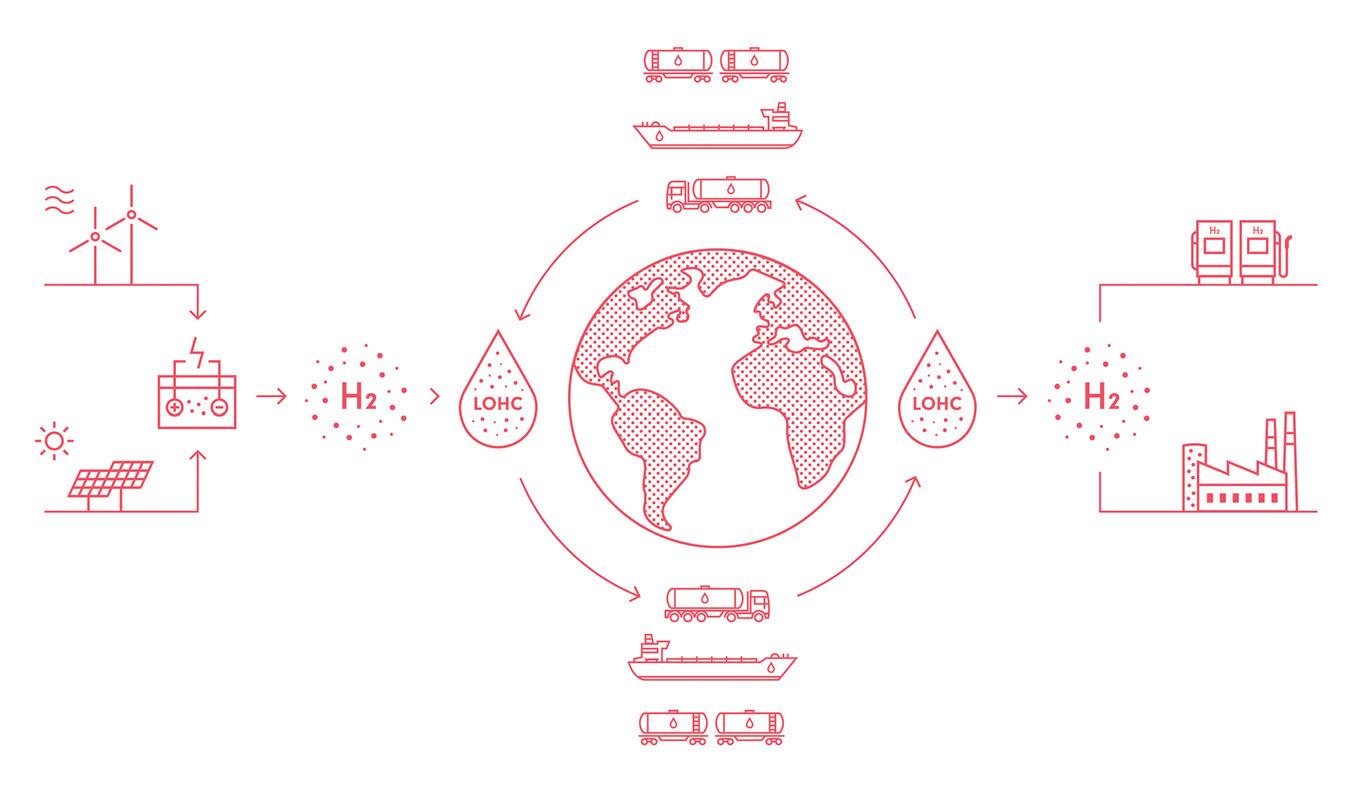
Transportation and storage infrastructure for this are already in place, and the industry has measures in place to mitigate risks. Ammonia is toxic to humans and animals, even at low
concentrations, so any leak will have a negative impact. It is corrosive to certain materials, which must be factored in when choosing a vessel, but adequate regulations are already in place.
However, the cracking process to return ammonia back to hydrogen leads to a 13%-34% energy loss, and a loss of profit. Hydrogenious uses the hydrogenation method, chemically binding the hydrogen to an LOHC. ‘Our LOHC (Liquid Organic Hydrogen Carrier) technology enables the storage and transport of hydrogen in a particularly safe, simple and efficient way – at high storage densities, under ambient conditions and in conventional liquid fuel infrastructure,’ explains Toralf Pohl, CCO at Hydrogenious LOHC Technologies. This method allows hydrogen to be transported by tanker, barge, train or road tanker, using the existing infrastructure for liquid fuels to enable long-distance transport even to remote areas. ‘At the off-take end, we release the hydrogen from the LOHC in our ReleasePlant in an endothermic catalytic process called dehydrogenation. The LOHC is not consumed during this process, but can be reused many hundreds of times to store and transport hydrogen, and is also recyclable,’ explains Pohl.
The Chiyoda Corporation uses a similar hydrogenation method to transport
PAGE 47
02 TECHNICAL HYDROGEN STORAGE
hydrogen across the world. ‘By causing a chemical reaction between toluene and hydrogen, methylcyclohexane (MCH) is formed, and this liquid reduces the hydrogen to about 1/500th the volume of gaseous hydrogen,’ says Masashi Nagai, deputy general manager for Chiyoda’s Hydrogen Business Department. ‘This makes it possible to transport large volumes of hydrogen at ambient temperature and normal pressure. We call this MCH SPERA Hydrogen.’
Hydrogenious is currently exploring large-volume supply chains, with its LOHC technology, from the UAE to Europe with partners like ADNOC, JERA Americas and Uniper. By scaling up transport capacity, companies such as Hydrogenious and the Chiyoda Corporation are contributing towards a successful global energy transition.
THE FUTURE OF HYDROGEN
Hydrogen presents long-term potential in many sectors beyond existing industrial applications. ‘With the growing demand and various applications of hydrogen around the world, the need
for hydrogen storage is likely to rise proportionally,’ says Aydin.

‘Despite all the advantages of hydrogen storage as well as the opportunities that it may bring, keeping and preserving hydrogen for later transportation or consumption requires innovative solutions,’ says Aydin. In the last month alone, Evos Hamberg has announced it will establish a blue hydrogen hub in Hamburg, while Onyx Power plans to build a hydrogen plant in the Port of Rotterdam.
Not only storage but transportation. Exolum is investing in H2Vector to provide energy solutions that support decarbonisation. Hydrogenious is continuously building upon technology to transport and store hydrogen in a safe and efficient way.
The industry must keep up the momentum with its green plans and call for government and policies to follow suit. ‘There is still a lot to be done in terms of regulation, both in the individual countries and at EU level,’ explains Pohl. ‘First and foremost, the legislators need to create clarity for all stakeholders as quickly as possible. At the same time, technological openness must be maintained and approval procedures accelerated to
CASE STUDY: GREEN HYDROGEN, THE ENERGY FOR A DECARBONISED FUTURE
speed up the energy transition and the decarbonisation of industry.’ As an industry we must keep working together to create and improve on the solutions surrounding hydrogen to ease the energy transition into a cleaner, safer, future.
For more information:
www.chartindustries.com
www.chiyodacorp.com
www.exolum.com
www.hydrogenious.net
www.ociorenergy.com
www.rwe.com
www.twi-global.com
www.waltertosto.it
www.weidmuller.co.uk
www.weforum.org
Andrés Suárez, global strategy and innovation lead at Exolum provides insight into Exolum’s current hydrogen projects Hydrogen is the most abundant element on the planet. People have been using it as a raw material for a long time. However, in order to be used, it must be produced. This is the key to this new energy vector, which is presented as one of the alternatives to fossil fuels in sectors that are difficult to electrify, such as aviation, maritime or heavy transport and highly temperatureintensive industrial processes. These all are essential to the bigger goal of the fight against climate change and decarbonisation.
As part of Exolum’s diversification strategy, green hydrogen and its derivatives play a leading role for both industrial and mobility purposes. The company is working to provide storage and transportation services for green hydrogen and to support the development of hydrogen hubs. That’s all while positioning Exolum at national and international ports, where it has facilities to promote the establishment and growth of new supply chains. These are aimed at the receipt, storage and dispatch of new products, such as green ammonia or ethanol.
With the aim of promoting the use of hydrogen for mobility purposes, Exolum is building a network of supply points, hydrogen refuelling stations, for heavy transport by lorry and bus. This includes the first integrated plant for the production and dispatch of green hydrogen for mobility purposes in the Madrid region, Spain: Green Hydrogenares.
Exolum’s involvement with hydrogen covers other areas as well, such as business entrepreneurship and research. In this regard, the company has recently completed an investment operation in the Spanish start-up H2Vector, which aims to provide energy solutions to enable the decarbonisation and electrification of society, based on renewable hydrogen. The investment in H2Vector is part of an ambitious Open Innovation plan through which Exolum seeks to establish strategic agreements that will enable it to incorporate new technologies and new talent in the company’s business development areas.
Exolum participates in research with a view to developing technologies to enable an efficient and sustainable use
of its current infrastructure in the future. This includes the storage and transport of green hydrogen in liquid form through its combination with organic carriers or liquid organic hydrogen carriers (LOHC). These initiatives are a testament to Exolum’s commitment to developing new solutions that boost an energy transition towards decarbonisation. Green hydrogen is becoming an essential new energy vector to achieve the climate commitments of the Paris Agreement and the zero-emissions goals demanded by the climate crisis.
PAGE 48
01 Weidmüller hydrogen rendering diagram
02 The LOHC Circle by Hydrogenious
03 TECHNICAL HYDROGEN STORAGE
03 Andrés Suárez, global strategy, innovation lead at Exolum
Complete range of liquid cylinders and bulk storage tanks, ISO containers and trailers delivering proven reliability, reduced maintenance and lowest cost of ownership for the storage and transport of liquefied gases including air gases, carbon dioxide, LNG and hydrogen.
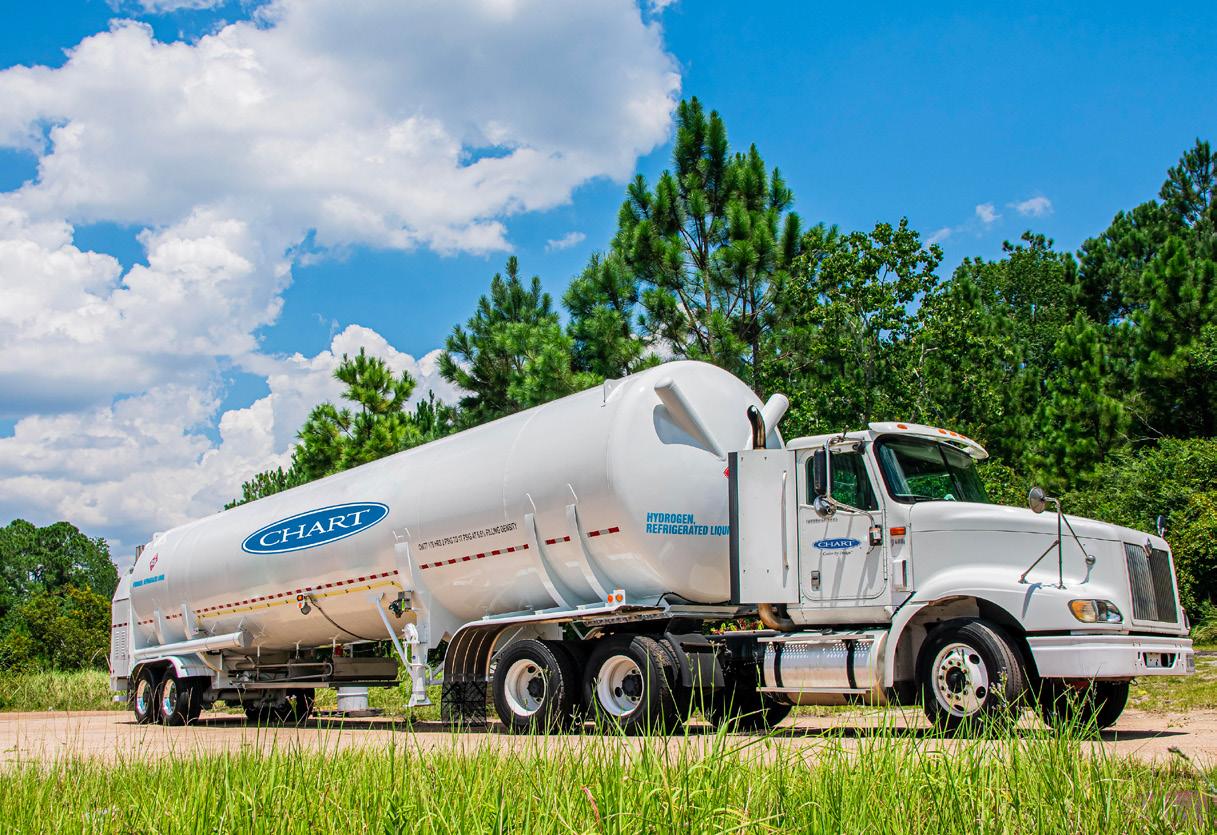
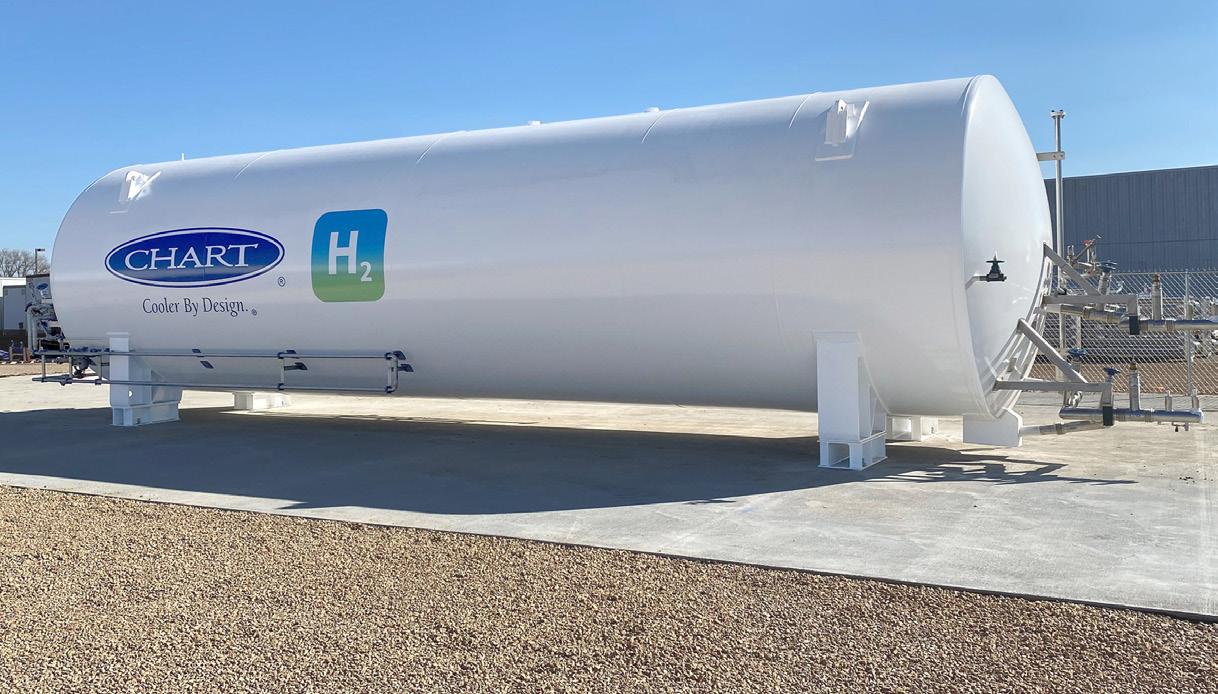
VERSATILE TANK LININGS MEET DIVERSE NEEDS
WHETHER EXPLORING offshore or onshore, oil and gas companies require versatility and consistency in their operations – particularly when it comes to the various tanks used to store and process fluids. Tanks holding aggressive chemicals may need to go lengthy periods between inspections. Likewise, drilling mud used one day may be swapped out the next as the wellbore requires different lubrication. Process vessels may need to run almost continuously, with rare stoppages permitted to inspect their interiors. All along the way, linings applied inside the tanks must withstand attacks from corrosive contents, heat and pressure to remain adhered in place and protecting the tanks’ steel substrates from corrosion.
Meeting such diverse challenges requires lining solutions that are just as versatile. That’s why three different oil and gas producers recently asked their coatings supplier for help in identifying the best lining systems for their specific operational challenges. Each company worked with SherwinWilliams Protective & Marine to test multiple solutions. The results helped
one company identify a solution that enables easier tank cleanings, another producer ensure that its chosen linings would adhere to pressure vessel walls and a third company specify a lining that will withstand aggressive, long-term corrosive attacks from drilling chemicals. These versatile lining solutions – SherwinWilliams Nova-Plate 360 and Magnalux 2200GF – are now helping the three oil and gas producers realise efficiencies, reduce costs, extend asset lives and enhance overall safety.
CLEANING TANKS IN A SNAP
The first oil and gas company faced challenges in thoroughly cleaning the drilling mud tanks that are vital to its offshore exploration activities. Drilling fluids kept in those tanks are switched often. Each time a different fluid is used, operators must remove every trace of the previous contents. Unfortunately, the cleaning process was typically taking at least 72 hours, with the downtime costing the producer significant time and money. Further, workers had to step into the tanks and scrub surfaces using surfactants,
which added risk and required hazardous waste clean-up afterward.
The company wanted to make the cleaning process faster, safer and more environmentally friendly. A 10-week lab study involving six coating systems found that Nova-Plate 360 – a novolac, resin-based and flake-reinforced lining featuring the nonstick additive polytetrafluorethylene (PTFE) – was the easiest to clean. The study showed that even a low-pressure water rinse could remove drilling mud from test panels coated with Nova-Plate 360 (Figure 1). Based on the promising cleaning results, Sherwin-Williams is working with a tank-cleaning contractor on a new highpressure cleaning system that will jet water into tanks so workers don’t have to enter. The goal is to cut the 72 hours of cleaning time in half, with no surfactants required, for a faster return to drilling and significant cost savings – while also eliminating the hazards of confinedspace entries.
HOLDING FAST UNDER PRESSURE
Another oil and gas company approached Sherwin-Williams Protective & Marine when the polycyclaminecured linings inside its pressure vessels were blistering, cracking and peeling during onshore drilling operations in the Permian Basin. The separators use heat and pressure to remove water from crude oil, and those stresses combined with aggressive processing chemicals were causing the lining failures. The water-crude separation process involved the injection of additives containing methanol, and Sherwin-Williams discovered the original coating used to line the vessels wasn’t resistant to methanol.
Next came rare side-by-side field tests of process vessels featuring Nova-Plate 360 and the polycyclamine-cured coating. Following 16 months in service, the separators featuring Nova-Plate 360 showed no signs of failure, while the other coating blistered, cracked and peeled, as it had done in the original vessels (Figure 2). The key to the success of Nova-Plate 360 was its resistance to methanol, hydrogen

01 PAGE 50 TECHNICAL COATINGS
Lab tests and field studies identify coatings that streamline tank cleanings, adhere under pressure and withstand aggressive chemicals
sulphide and other fracking chemicals, as well as its ability to withstand normal separator operating conditions, including temperatures and pressures ranging from 180-200°C and 100-700 psi. In addition, Sherwin-Williams advised the oil and gas company on how to extend the lives of the linings to help reduce the lifetime operating costs of the vessels.
WITHSTANDING AGGRESSIVE ATTACKS
A third oil and gas company, exploring in the Gulf of Mexico, sought help when the coating inside its tanks storing an especially aggressive acid started blistering and lifting off the substrate within 6-12 months of the tanks going into service. The acid is an aggressive chemical used in drilling operations to open cavities in salt formations. In tanks holding the aggressive acid, the company used a vinyl ester coating for protection. That tank lining solution made sense because vinyl esters are highly resistant to severe service environments and severe service. However, troubleshooting actions revealed that the acidic solution includes hydrofluoric acid (HF), which attacks anything that is silica-based. The original vinyl ester coating used was reinforced with a glass-flake filler pigment, which explains why the lining was failing so quickly.

To find a better solution, SherwinWilliams lab-tested four products. One was similar to the vinyl ester that failed, two were carbon-woven laminates and the fourth was Magnalux 2200GF, a vinyl ester graphite-filled novolac. Magnalux 2200GF proved to be the best option, showing extremely consistent protection after three months of testing. Its adhesion numbers were excellent. Today, the manufacturer of the tanks holding the aggressive acid uses the product in its entire fleet of service tanks.
CHOOSING VERSATILE LINING SOLUTIONS
When these three oil and gas producers needed help in their operations, the coatings solutions already existed. But whether or not those solutions would work for each unique case needed to be carefully vetted via lab and field studies. Without that proof, the companies may have faced the same or worse issues than they were experiencing with their existing solutions. Testing proved that Nova-Plate 360 has the nonstick properties that might someday eliminate the need for cleaning agents in oil and gas mud tanks. The coating was also proven to have the strength and durability needed to handle the stresses of high temperatures and pressures to maintain long pressure vessel service lives. In addition, Magnalux
2200GF has been shown to deliver consistent and reliable protection against one of the most aggressive materials used in the oil and gas industry.
For more information:
This article was written by Travis Crotwell, business development manager –upstream oil & gas, and John Hilton, energy business development manager, both from Sherwin-Williams Protective & Marine.
Travis.M.Crotwell@sherwin.com
John.M.Hilton@sherwin.com
01 Following low-pressure water rinses, panels coated with Nova-Plate 360 (left) retained far less mud than panels coated with a control epoxy system (right), as well as others.
02 In a side-by-side field test of different linings applied to two process vessels, the Nova-Plate 360 lining (left) stayed completely intact on the vessel’s hatch covers, which are subject to the most operational wear and tear, and throughout the vessel. The polycyclamine-cured lining (right) blistered, cracked and peeled on the covers and elsewhere inside the vessel. All images courtesy ofThe Sherwin-Williams Company

02
PAGE 51 TECHNICAL COATINGS
ONE SIZE DOES NOT FIT ALL
Tank Storage Magazine looks at how leak detection equipment is embracing the digital transformation
IMPLEMENTING GAS and liquid leak detection systems to storage tanks helps to reduce potential harm to the environment and personnel. Pipelines remain the safest means of transporting any product from one location to another, but they are not without risks. Managing these risks effectively ensures that customers can minimise the downtime of their pipeline network. ‘Regularly monitoring for leaks using technology ensures that leaks are identified quickly and located accurately before they escalate into spills, ruptures and explosions which can cause not only reputational damage to the operator, but damage to the environment,’ explains Jun Zhang, CEO of pipeline detection company, Atmos.
THE CONSEQUENCES OF LEAKS
Pipeline leaks can have serious consequences including impacts on human safety; damage to the environment, property and reputation and; financial loss through fines, loss of production and clean-up costs.
‘If you have ever seen pictures or videos of the Buncefield incident in 2005, you know that no one wants this type of incident repeated,’ says Paul Whitely business development manager at Aquilar. Early warning leak detection, overfill or spill detection play an essential part of the measures required to mitigate the chances of a repeat.
Undetected leaks can cause massive damage to the environment if they are unnoticed for long periods. Appropriate
leak detection systems can give early warning to mitigate these risks and even avoid issues completely.
There are also cost implications. Fuel is not getting any cheaper and waste through undetected leakage can cause companies huge financial losses. To minimise the consequences of leaks pipeline operators must have a system they can rely on that they can detect leaks quickly, locate leaks accurately, issue minimal false alarms, be easy to retrofit, and work effectively under all operating conditions.
THE HARDWARE
Aquilar, a supplier of leak detection technologies, found that there was no single manufacturer that offered
SENSING CABLE DETECTION
A crude oil tank refinery in France wanted to ensure no major threats to operational safety and potential for disaster due to undetected leaks hidden leaks beneath its four crude oil tanks.
Aquilar was able to provide a solution by supplying the TraceTek TT5000 oil and fuel sensing cable. This specialist sensing cable quickly detects the presence of liquid hydrocarbon fuels at any point along its length, without reacting to the presence of water. The sensing cable is connected to a TraceTek sensor interface module that provides a continuous ability to detect and pinpoint any oil leak. Early detection allows a response team to react before the situation becomes critical.
Each of the four crude oil storage tanks at the refinery now has a TraceTek TT5000 cable buried beneath its perimeter constantly ready to alert the operators to any fuel leakage.

a solution for all applications. Aquilar embarked on a customer-focused programme, talking to specifying engineers to determine what other products were needed. ‘We manufacture and distribute a wide range of monitoring panels and sensors for a wide range of liquid hydrocarbon fuels. As more and more reporting technology moves over to the cloud we are constantly developing new solutions for the detection of leaks and distribution of warning information,’ says Whiteley.
Thin Film Carbon/Polymer Technology is typically used in leak detection. Should a liquid hydrocarbon come into contact with the probe, a small amount of the spilt liquid will absorb into the carbon-enriched polymer. This will cause swelling at the point of contact after sufficient fuel (less than a ml) has been absorbed into the polymer. The monitoring instrument detects the sudden increase in resistance and reports that a leak has been detected. In most cases, the probe will reset when removed from the contact of the spill and the fuel is allowed to evaporate. ‘Reaction time is typically less than a few seconds for light or middle-weight fuels such as gasoline, jet fuel, and diesel. It is also responsive to crude oil and some heavier weight fuels and heating oil, but becomes progressively slower as the fuel viscosity increases and the volatility decreases,’ says Whiteley.
Crowcon manufactures portable and fixed monitors for protecting personnel and environment from risks of flammable
PAGE 52 TECHNICAL LEAK DETECTION
01
and toxic gases and oxygen depletion. The company offers high-integrity point-type infrared (IR) detectors and open-path IR detectors for vapour leak detection in storage tank applications. ‘We have recently introduced Molecular Property Spectrometer (MPS) sensor. MPS sensor operates by measuring changes in the thermodynamic properties of the air/gas mixture,’ explains Andy Avenell from Crowcon. The sensor rapidly detects when the normal air mixture changes due to the presence of flammable gases and vapours, and indicates the %LEL gas/ vapour concentration via a local display and to control systems via an analogue signal, relay contacts and/or RS-485 Modbus communications.
Unlike established IR and catalytic bead sensors currently deployed in tank storage applications, the MPS sensor provides an accurate %LEL gas/ vapour concentration indication for a variety of substances. ‘This feature is vital where tanks may be filled with different products over time, or where tanks with varying substances need to be monitored in the same area,’ says Avenell.
DIGITALISING DETECTION
Tank storage owners and pipeline operators want to be using the best possible equipment for leak detection monitoring. To do this, companies are combining hardware equipment with software algorithms and programmes to protect their infrastructure to the highest possible level.
According to a paper by the University of Oklahoma’s department of chemical engineering and materials science on pipeline leak detection, hardware is typically sensitive to small leaks and quite accurate regarding location. However, the high level of


A THOUGHT FOR FIRE
‘Detecting leaks from tanks containing flammable liquids at the earliest opportunity is essential to prevent the possibility of potentially large scale fires or explosions occurring,’ says Andy Avenell at Crowcon. Fire detection apparatus such as flame detectors are usually deployed, however gas/vapour detection systems provide the potential to detect leaks before an ignition occurs.
Detecting leaks of toxic gases helps to protect personnel working on the site and also protect populations in the vicinity of the plant. Monitoring around storage tanks provides the earliest warning of leakage.
instrumentation results in significant installation and maintenance costs. Installation can be complex, requiring a considerable amount of work below the surface, since many pipelines are buried. Software can be easier to implement and is more resilient. Operators can collect a higher data yield from their equipment and track patterns and their results. For example, the Atmos Pipe uses algorithms which manage thermal and hydraulic transients to optimise sensitivity and accuracy in pipelines. The software is able to detect small movements within the pipelines that humans and other hardware may not. Atmos leak detection equipment works with a combination of software and hardware. These products provide valuable information about leak size, location and amount of product lost when a leak occurs. ‘Atmos works with an understanding that one size does not fit all industries or pipelines,’ says Zhang. The Atmos Wave detects the negative pressure wave (NPW) caused by a leak in a pipeline. ‘Using fast response pressure meters, Atmos Wave filters the pressure signals to find those with the frequency and magnitude of a leak, meaning the time at which the pressure signal reaches each pressure meter is used to determine the location of the leak
extremely accurately,’ explains Zhang. The advanced software algorithms at Atmos are complemented by a range of hardware products too. For example, the Atmos Eclipse can be retrofitted to pipelines to provide nonintrusive leak detection for pipeline networks with limitations such as lack of communications, lack of power, lack of instrumentation or lack of housing for its instrumentation. ‘At the same time, Atmos Eclipse can help improve leak detection performance in areas such as sensitivity, response time and leak location accuracy,’ explains Zhang. Atmos worked with energy provider Rotterdam Rijn Pijpleiding (RRP) on a leak detection project spanning three of RRP’s underground pipelines that transport crude oil and refined products. tmos provided two separate Atmos software solutions which resulted in round-the- clock monitoring, reducing detection time and increasing location accuracy.
Not only liquid leak detection, but gas leak detection is vital for tank storage owners for safety of staff, environment and loss of product. ‘Continuous emissions monitoring with fixed sensor network helps customers shift to eventbased monitoring for timely emissions detection and corrective actions. It
PAGE 53 TECHNICAL LEAK DETECTION
02 03
EMISSION DETECTION
A large U.S. refinery sought the solution from mPACT2WO to mitigate abnormal emissions and ensure a safer working environment. At the refinery, an authorized emission source at a tank farm conservation vent experienced an abnormal condition that could have persisted for several weeks with increased risk of exposure.
The operations team received a real-time alert that showed a PSL (potential source of leak) on the sitemap. The control room identified the source in the vicinity of numerous tanks and associated piping. This allowed the control room to decide on an appropriate troubleshooting approach. Within minutes of the alert, operations personnel were dispatched to the area, but an initial inspection of the area did not identify the source of the leak. An infrared camera was deployed, and within 4 hours of initial notification, emission source was located and corrected shortly thereafter. Early indication and location information enabled operations to find and correct tank farm stuck conservation vent within hours, rather than weeks, of occurrence. This avoided potential unsafe condition and/ or personnel exposure due to the abnormal equipment condition.
helps improve operational efficiencies, reduce emissions, enhance maintenance procedures and safety. Industrial operators can now efficiently implement compliance programs with real-time alerts, response workflows and timely corrections,’ says says Krishna Uppuluri, vice president and general manager of mPACT2WO.
mPACT2WO’s AirCompliance solution is an integrated industrial internet of things (IIoT) solution consisting of gas sensors, software-driven AI/ML analytics, and automated response workflows for emission leak monitoring. The solutions aim is to enhance sustainability and help industrial operators in oil and gas, petrochemical, refineries, chemical, and other industrial facilities to minimise emissions from volatile organic compounds (VOCs) and greenhouse gases (GHG).
‘Present leak detection methods are mostly manual, handheld and time or schedule-based monitoring approaches. For such existing methods, customers use a variety of legacy sensors with low-medium fidelity based on ppm (parts per million) level, speciation and
portability,’ says Uppuluri. mPACT2WO’s AirCompliance solution is a network of sensors that detects ppb (parts per billion) level leaks in real-time, providing visual guidance on leak source location, enables timely leak isolation and corrective actions by plant operators.

SUSTAINABLE MAINTENANCE
‘Leak monitoring is vital to make the pipeline industry more sustainable. Identifying a leak as soon as possible supports pipeline operators in their net zero targets to reduce their carbon emissions and provide greener fuel transportation,’ explains Zhang. Monitoring the pipeline also extends the lifetime of the pipe itself, meaning fewer replacements and materials used to build new ones. This allows assets to stay in the best working order for longer. The fuel transition from natural gas to hydrogen is at the forefront of what is happening in the global energy industry. ‘As hydrogen blends increase, we’ve noticed greater discussion around the current state of hydrogen knowledge,’ says Zhang. For example, whether the
pipeline workforce will be able to reskill in time, if the security of supply can be maintained and how to prioritise leak detection as hydrogen is more likely to leak due to its smaller moleculer size. This has generated interest in pipeline simulation, like Atmos’s, to ease the transition to hydrogen and provide insight into what future operations could look like.
Leak detection is vital for companies, economically and environmentally and they are now combining software algorithms and hardware equipment for the best possible results.
For more information:
www.atmosi.com/en/solutions/leakdetection/
www.aquilar.co.uk
www.crowcon.com
www.mpact2wo.com/
01 Aquilar leak detcetion on tank perimeter
02 Atmos Esclipse onsite installation
03 Crowcon Gasman MPS device
04 mPACT2WO AirCompliance illistration
PAGE 54 TECHNICAL LEAK DETECTION
04

Abu Dhabi, United Arab Emirates
October 2023 Supported by ADIPEC in Numbers 54 NOCs, IOCs, NECs and IECs 15,000 1,500 Conference speakers Countries represented Conference delegates 160,000 Energy professionals 28 Country pavilions 2,200 Exhibiting companies 350 Conference sessions 164 ADIPEC is a powerful global platform that can help present the possibilities of a more inclusive approach by welcoming the solutions and skills of the energy industry today, towards shaping the future of energy. His Excellency Suhail Mohamed Faraj Al Mazrouei Minister of Energy and Infrastructure United Arab Emirates
Conversation Under The Patronage of H.H. Sheikh Mohamed Bin Zayed Al Nahyan, President Of The United Arab Emirates Register to visit Contact us on: +971 2 444 4909 Register as a delegate Email us at: sales@adipec.com #ADIPEC #ADNOC Gold sponsors Partners ADIPEC brought to you by Venue partner Host city Technical Conference organised by Knowledge partner Strategic insights partner ARAB DEVELOPMENT Pant Medium Blue C
2 - 5
The Future of Energy Join the
CARGO TANK INSPECTION: THE RIGHT PEOPLE AND THE RIGHT TOOLS
To Simon Ruddick at Marine Inspection Services, a combined visual and UT drone platform could mean a welcome goodbye to rope access and scaffolding
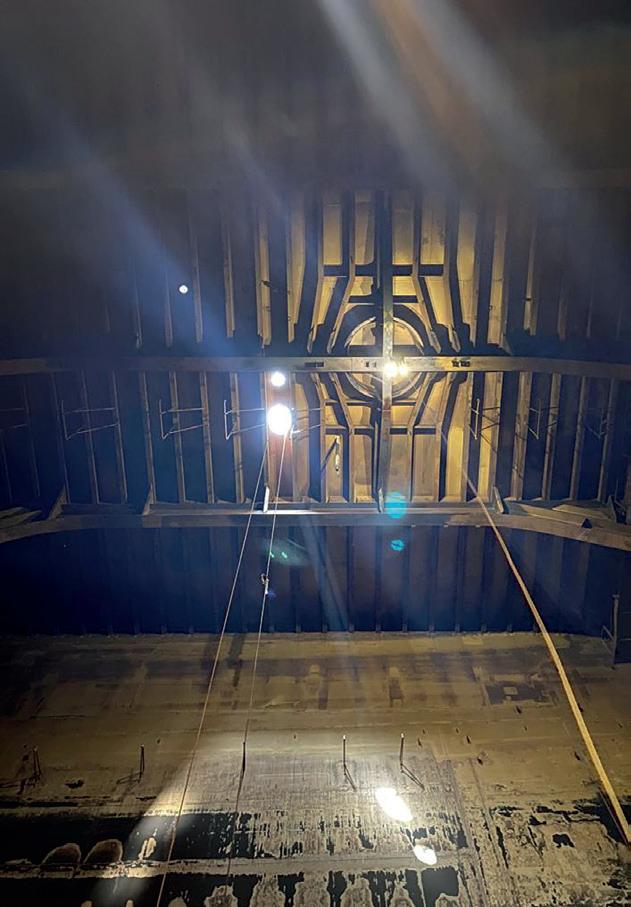
ALL COMMERCIAL ships are built to the standards of class societies, laws and international conventions, and are surveyed regularly for compliance. A vessel simply cannot operate without being certified by a class society. Ultimately, the owner is the one responsible for the safety and integrity of the vessel and the staff. But tremendous responsibility rests on the classification societies, and the limit to their liability is a matter of continuous discussion. To maintain a reliable classification process, it is vital that they remain an independent third party and avoid conflicts of interest. For example, they must be able to demand high-quality inspection data of good coverage as a basis for their assessment, without being responsible for producing the data themselves. Therefore, the vessel owner must arrange the inspection data to be produced by someone with the necessary expertise, equipment and focus.
It’s a job that involves entering enormous, emptied cargo hulls, cargo tanks, ballast tanks and other enclosed spaces to assess their structural integrity. You must know what you’re doing, to gather all information in a safe manner. Got an inspection job that is dark, dirty and dangerous and where tremendous values are at stake? That’s when you call companies like Marine Inspection Services.
STRUCTURAL INTEGRITY
‘On an oil tanker, these tanks are typically about 20 m high, 20 m wide and, say, 27 m long,’ says Simon Ruddick, director of Marine Inspection Services.
Surveying just a single tank for corrosion or other damage is a comprehensive process, traditionally requiring personnel to work at height and for long periods of time. Using traditional ropes and harnesses, workers gain access to the inside of the tanks to access all the surfaces – sometimes even requiring gigantic constructions of scaffolding.
Through advancements in technology, a lot has changed. Surveyors are now able to automate processes with real time reporting, doing visual inspections remotely by drone. Drone inspections are an important safety measure as they can replace lots of hours of working at height. ‘In many cases you’re removing the need for the surveyor to be up on the structure on scaffolding, which takes days to put up and costs a huge amount of money,’ says Ruddick.

RIGHT FIRST TIME
The employees of Marine Inspection Services are a small team of sought-after experts that travel the world doing their thing. Sometimes, they will get on a ship in one port, survey while it’s sailing and get off at the next port. They normally travel as a team of two or three and may be away for weeks at the time.
Over the last decade or so, using drones has become a big part of the job.
With the ship’s schedule and cost of cleaning for inspection, it’s critical to work efficiently. You must get it right
the first time. ‘Because you really don’t get a second chance. When you come out of the tank, that tank is closed and you’re not going back in there,’ says Ruddick. ‘Drones are mainly used for visual surveys. They go up quickly and give us good results across the different structures, to look at the condition, look for cracks, look at the coating and so on.’
The Scout 137 Drone captures 4K video and photos and uses a 3D LiDAR-sensor to map the entire space in 3D – and the drone’s exact position within that space – in real time. The pilot can fly the drone beyond visual line of sight and know exactly where it is and where it’s heading. Inside a tank, this means a pilot can remain on the lowest stringer level and even inspect that from the underside, without climbing down to the floor just for visual line of sight.
‘You put the drone in and you do a full visual inspection across the top of the tank, something that otherwise would require scaffolding or rope access. For an oil tanker, this would take days to do without the drone – if not weeks, and thousands and thousands of dollars. With the drone, it’s a matter of hours,’ Ruddick says.
PAGE 56
01 02 TECHNICAL CARGO TANK INSPECTION
TETHERED DRONE FOR STRESSFREE INSPECTION

As opposed to other, battery powered drones, the ScoutDI drone is tethered. That means the operator doesn’t have to worry about losing signal or power or having to fly back and forth changing batteries. The thin and lightweight tether provides power, control signals and a data connection to and from the drone. As a result, you get unlimited flight time and a stress-free inspection, no risk of losing control of the drone and the option to stream the inspection to the Scout Portal via the internet.
‘With a battery-powered drone, remaining battery life is constantly in the back of your mind,’ says Ruddick. ‘You’re constantly thinking, okay, let’s get this frame done with this battery, and then we’ll come down and then we’ll do the next bulkhead with that battery. Whereas with a tethered drone like ScoutDI’s, you don’t need to think about that. It’s not even in your mind, so you concentrate more on the inspection side of things.’ Using the drone saves a lot of time and effort and allowing this level of focus on the job is an important safety factor. One caveat, though, is that you still sometimes have to go climbing anyway. But this too is about to change.
TWO BIRDS, ONE STONE
Inspections often require both visual inspection and non-destructive testing (NDT) to survey a ship according to class requirements. The latter is done with Ultrasonic Thickness Measurements (UTM). Years of use in rough conditions wears at the metal plates in the construction, the degradation being potentially invisible to the naked eye and to most cameras. So in terms of structural integrity assessments, a combination of visual and UTM equipment gets you the data you need. So, even if you use a drone for the visual part of the inspection, a person still has
to go up using ropes or other access methods and bring a handheld measuring probe. ‘If you’re doing manual UTM, then normally you’re only doing sample locations. So for instance, the thickness measurements with rope access might take one day, but you’re only covering a tiny percentage of the tank,’ says Ruddick. Wouldn’t it be nice if a drone could do both the visual inspection and the UTM part? This could enable a small team to complete a job in half a week, that used to take a dozen workers 45 days or more.
NEXT-GENERATION DRONES
ScoutDI is working to enable visual inspection and UTM in the same drone platform. This happens with a UT option for the Scout137 Drone, without requiring a separate drone. The thickness measurements can be done remotely,
more quickly and thoroughly. This is a potential game-changer.
As a world first, both the resulting visual and UT data is location-tagged. So when you replay the inspection in the Scout Portal, you can see precisely where any specific piece of footage or UT measurement was taken.
‘We do lots of chemical tankers as well, and for such cases UT on a drone is brilliant because they are much cleaner than oil tankers. You don’t have to scrape off the thick residue from the crude oil, so you can in fact do the entire job just using the drone,’ says Ruddick.
Offering visual inspection with a camera, and UT measurements in the same drone platform, allows ScoutDI to help companies unlock safety, time and cost benefits. Much greater coverage is within reach and consequently a much more comprehensive and reliable dataset. This is a long-awaited addition and a major step on the way to digitalisation of heavy industries.
For more information:
Simon Ruddick is director at Marine Inspection Services and a leading expert in visual surveying and nondestructive testing (NDT) of ships and offshore installations.
Learn more about the Scout 137 Drone System and the Scout Portal at www.scoutdi.com


01 Scout 137 Drone at work in cargo tank. Photo credit: Marine Inspection Services
02 Inspecting the underside of a cargo tank hatch cover. View from the floor, looking up. A perfect job for the Scout 137 Drone. Photo credit: Marine Inspection Services
03 Inspecting an oil tanker with the Scout 137 Drone, you can either remain outside the tank, work from a stringer level, or work from the tank floor. Photo credit: Marine Inspection Services
04 The Scout 137 Drone has a tether, ensuring unlimited flight time and no loss of control. This makes it perfect for visual inspections in large metal enclosures. Soon it will also be able to perform contact operations (NDT)

PAGE 57
04 03
TECHNICAL CARGO TANK INSPECTION
The syntheses of non-destructive testing and integrity allows for the comprehensive understanding of an asset’s safety, lifetime, and performance. By bringing together technology, expertise, and consultancy, we become your partner in reliable decision-making. | Always a leading innovator, we deliver solutions that give operators confidence in their assets, ensuring safety and compliance with accurate diagnostic data and dedicated integrity services to protect and manage plants & terminals.
Comprehensive Asset Management

www.rosen-group.com
UPDATES IN AUTOMATED TERMINAL MANAGEMENT
Cyann Fielding finds out how digital processes are changing terminal operations
THE EVOLUTION OF terminal management processes has been significant over the past few decades, with the adoption of digital technology and cloud-based software enabling greater collaboration and data sharing across the entire supply chain.
‘While terminal management software has been around since the 1980s, the data in these systems has primarily been siloed to the local terminal or an internal corporate data management platform,’ says Sam Reid, CEO of Dearman Systems. The move from locally-hosted operations to cloud-based has been a significant development.
DIGITAL REVOLUTION
‘Even with the data being siloed, these terminal management systems still helped terminals and their operating companies to automate loading sequences, custody transfer documentation, reporting, and inventory management — resulting in safer terminals and lower administrative costs,’ says Reid. He identifies two major revolutions in digital processes in the past 30 years: the advent of terminal management software in the late 1980s and, more recently, the visibility of terminal orders, transactions, product movements, and inventory by the entire bulk liquids supply chain.
Cloud-based software allow terminal operators to use the same systems across multiple sites. However, local systems can be a good back-up that’s less susceptible to off-site failures.
Koen Druyts at Rockwell Automation, says: ‘Smart operations are the gateway to digital transformation. Connected smart devices open new windows of visibility into processes. Data and analytics enable better and faster decision making. Seamless connectivity spurs better collaboration, resulting in sustained profitability and value creation.’
IMPROVING ACCURACY
The complex technology incorporated in automated terminal management systems can revolutionise how a terminal conducts its processes and manages assets to maximise efficiency and output.
Daniel Hoy, product manager IMS from Endress+Hauser Level+Pressure, says: ‘Regardless if product is transferred from or to ships, trains or trucks, the most important target is to reduce losses in order to maximise not only costs but also reduce the ecological impact. That is why manual processes are step-by-step replaced by automation in order to reduce human errors or simply preventing lack of information to take the right decision when required.’
‘Digital solutions ensure the data transparency and reduce manual data inputs which decreases the risk for potential errors due to often multi-tasking and stressed operators or simply by inadvertence,’ says Hoy.
As well as minimising human error, this frees up time for workers to be available for other tasks. ‘Small errors in transcription can lead to overfilling tanks, trucks, etc. in the worst case, or at least to financial impacts in the best case. Therefore, digital systems should always provide logical checks, for example verify the planned product transfer against the target tank capacity and the currently present product,’ Hoy adds.

With Dearman’s terminal automation system (TAS), only authorised personnel can enter the terminal and unload or load product, so the checks are done automatically.
OPERATIONAL INSIGHTS
Dearman’s human machine interface (HMI) offers an additional layer, visualising terminal operations including tank levels and loading activity. This provides operators with a real-time view of what is occurring at the terminal.
‘Digitalisation combined with operational intelligence not only improves processes but also improves situational awareness in the moment it is needed,’ says Heather Killough, DTN global leader, strategy, partners and growth markets.
Operational intelligence is crucial for terminals in the fuel supply chain. Druyts says: ‘Intelligence is needed to maximise productivity and that depends on information, what has made automation even more strategic, increasing its relevance as an information-intensive generator.’ As such, the typical metric for success for the customer of a terminal is the cost of storage and handling.
For example, DTN’s Guardian3 (G3) offers real-time insights and management of inventory, lift-control, demand patterns, and bills of lading by connecting terminals and back-office. Its userfriendly dashboard provides access to information at a US market view, specific tank, or customer level, facilitating communication up and down the supply chain. G3 is also TWIC-compliant to meet TSA biometric requirements.
PAGE 59
01 TECHNICAL TERMINAL AUTOMATION
‘Consider the advantage of accessing integrated real-time analytics on multiple factors, such as actual product inventory, driver and vehicle information, and upto-the-minute credit information at the point of transaction, terminal operators can increase throughput while reducing delays and risk,’ says Killough.

MANAGING INTEGRATION
Any automation software needs to be user-friendly and easy to integrate with existing systems. Most software providers will walk users through the process, providing training where needed.
Reid explains: ‘The Dearman TAS software integrates with hardware such as flow computers, weight scales, secure access control systems, tank gauging systems, PLCs, and additive injectors. Hardware integrations are typically achieved through industry standard protocols, MODBUS RTU, and other communication protocols.’
Sensors and instrumentation provide a great deal of information. The problem is enabling the system to accept that additional information. How easy or difficult that is depends on the control system in place.
Typically control systems are commissioned with a set number and type of input/output (I/O) cards that can accept data from sensors and instrumentation. Historically, any changes to the layout of I/O cards can only be possible through leaving spare space in an enclosure and keeping many different cards on hand. This is both costly and can impact how quickly a system recovers from a failure or scheduled maintenance.
Many control system providers have released universal I/O capabilities.
Rockwell Automation’s FLEXHA 5000 platform, for example, (enabled by the PlantPAx 5.20 distributed control system), allows for remote software configuration of the channel I/O types
during runtime. The FLEXHA 5000 platform offers common componentry between I/O types, giving a remote operator the ability to dynamically change I/O type.
MANAGING RISKS
While digital solutions offer multiple benefits, they are not immune to risks. Errors can still occur and operations can be disrupted due to misconfiguration, hardware failures, or broken networks. To address this, systems should be designed with resilience in mind. An on-site backup is often recommended, rather than leaving all data in the cloud, for example.
Reid says: ‘If the Dearman TAS software becomes inaccessible due to server failure or other catastrophic event, automated loading or unloading may be impacted at the terminal. A local, redundant TAS server is strongly recommended to mitigate any such downtime.’ In this case, a local server onsite acts as a back-up.
Another factor is plant safety, though an automation management system does not always have an impact on this. ‘Given the fact loading stoppages are more of an operational/business concern rather than a safety concern, no one is put at risk when TAS software fails. However, this is still a critical function for a terminal and loading downtimes should be minimised as much as possible,’ Reid says of the Dearman Systems TAS.
‘Since most fuel terminals are required to utilise hard-wired safety systems, including ground and overfill prevention systems, they should be protected from spills in the event that their TAS software were to stop functioning,’ says Reid.
Hoy says: ‘In terms of plant safety, Endress+Hauser recommends to make use of separated safety and operation system designs. While an operation system is continuously used, stressed and modified, a safety system will only
follow a single task, monitoring the application limits and alert or take action if necessary. Also safety systems are usually subject to frequent and precise verifications in accordance to SIL specifications.’
Cybersecurity is often a concern for terminal operators, but this largely comes down to the design of a network. Tiered access, separate operational and administrative networks and proper password and device management are all key to ensuring a IT systems remain secure. A well-designed IoT network is important to have in place before considering automation software.
EASE OF COLLABORATION
Automated terminal management solutions improve operations and provide new opportunities for workers.
For example, automation can help prevent human error and requires fewer workers to be on site to assist.
‘TAS software enables present loading sequences at flow computers and weight scales so drivers have an intuitive workflow to follow and therefore require less assistance from terminal personnel. The software restricts the actions of the driver according to system settings resulting in fewer mistakes,’ says Reid. He adds: ‘Automation helps to keep data accurate and organised and makes answering internal and customer questions easier. Additionally, documents and reports are immediately available to the corporate office of the terminal company as well as their customers.’ By automating tasks such as data entry, management and loading operations, more focus can be given to overall operational safety and customer care.
DTN’s Partner Insights are a valuable tool in connecting the digital management systems and partners. ‘Partner Insights helps increase collaboration between downstream oil and gas supply chain partners by automating and streamlining the collection and sharing of the critical data required to load fuel at the rack in real-time. It generates a single reliable source of information and enables frictionless transactions,’ says Killough. Where Partner Insights establish the critical data needed for loading fuel, there is still a requirement for the worker to respond to the data to ensure that the information given is applied. Essentially, the digital management directs the human, and then the worker is able to carry out the tasks with increased safety and efficiency.
There are also many potential solutions in the market and choosing a solution that addresses these challenges can be overwhelming. Any solution you choose
PAGE 60
02 TECHNICAL TERMINAL AUTOMATION
must also be able to handle the volume and scale of data being generated through the introduction of IoT devices and the migration of OT to IT,’ Druyts advises.
WHAT’S NEXT FOR THE SECTOR?
As automated terminal management solutions develop, it is important to stress their significance for the environment, workers and clients across the globe. Druyts summarises that: ‘Instead of you working for the control system, it should work for you. Operators can then focus on making business and operating decisions based on insights and real-time contextualised data.’
Implementing automated terminal management should be an accessory to improve the ability, processes and productivity of a terminal. ‘Production is the business driver for any industry, and the control system is a transformational toll that gives visibility and should have the necessary functionality to unlock business opportunities and improve productivity,’ Druyts says. ‘Operational data is the lifeblood of digital transformation in any industry, terminal operations is no exception. By delivering the right information to the right worker at the right time, you empower workers to make better decisions. When you use smart machines that can diagnose or
resolve issues on their own, you create smarter operations with less downtime.’ Optimisation of data and worker efficiency also lead to cost optimisation as fewer errors are made. ‘Digitalisation has been shown to improve operations and profit margin across all industries.
According to a 2022 Ernst and Young report, executives expect an average return of nearly 8% on their digital investment. For terminal operations with thin margin rates, digitalisation offers a competitive edge,’ says Killough. ‘Operational Intelligence takes digitalisation further not only streamlining processes but also providing contextual, actionable insights in the moment they are needed,’ says Killough. ‘It is important to offer these solutions to terminal operators to help them achieve better visibility over their operations, quickly capitalise on new opportunities and improve operational controls for nearly every aspect of their business, from customers to back-office.
Delivering integrated real-time data and insights such as inventory management, allocation, and credit status, and lifting empowers operators to make agile, confident, decisions which impact partners throughout the oil and gas supply chain.’
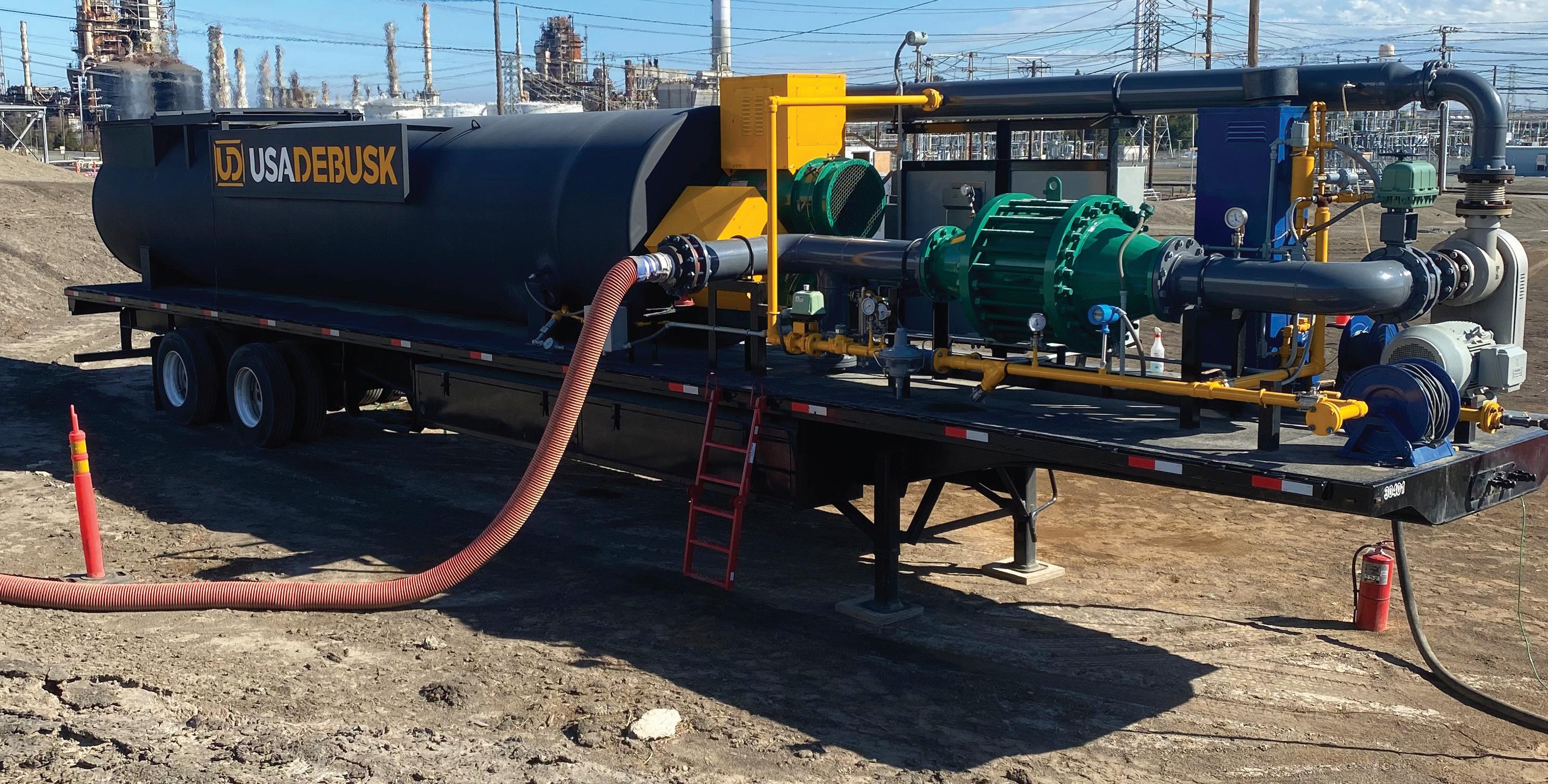
What’s next for the sector? Plexus project manager, Joao Medonca, says: ‘New tech is making monitoring critical infrastructure easier, as well as detecting issues in real-time, and making more informed decisions based on data. With the emergence of artificial intelligence and machine learning, we’re seeing some really exciting developments that could transform the industry even further.’
For more information:
www.ey.com/en_gl/strategy/digitalinvestment-report
www.dearmansystems.com
www.dtn.com
www.uk.endress.com
www.plexus.pt
www.rockwellautomation.com
01 Two workers check a loading rack, Dearman Systems
02 DTN TIMS System
PAGE 61
TECHNICAL TERMINAL AUTOMATION 844.243.5557 sales@usadebusk.com www.usadebusk.com Follow us: Increase safety, achieve compliance, and contain VOCs with USA DeBusk emission control services. For standalone projects, or integrated with our tank cleaning and material processing, your project is custom-engineered for maximum efficiency and protection. GET MORE DETAILS FROM THE EXPERTS AT ILTA BOOTH 413! Stop VOCs Integrated Emission Control for Tank Cleaning
END-TO-END DIGITALISATION AND DECARBONISATION
Diamond Key International shares how its proven solutions can achieve terminal optimisation through a strategic approach
TRADITIONAL OIL and gas terminals are facing increasing operational challenges for a number of reasons. Reduced in-house expertise, segmented control systems, legacy infrastructures, more stringent environmental, social and governance (ESG) policies, occupational health and safety (OHS) compliance, to name a few. Not to mention the rapidly changing storage needs due to the energy transition.
Diamond Key International looks to help clients reduce operating costs, facilitate more flexible services to unplanned terminal customers, expand the facility with least capital expenditure (capex), and optimise day-to-day operations with improved efficiency.
DIGITAL TWIN MODELLING
The analysis from Digital Twin modelling conducted for an existing terminal in Australia identified a USD $1.25m (€1.14m) saving in capex. Results showed that queuing times would drop by 25% by replacing a proposed capex project of adding a new bay with a smaller, targeted modification to existing infrastructure.
The innovative digital solution also delivered the following benefits:
Safety: Machine learning algorithms that cut through the “alarm flooding” and separate human and systemic trends
Productivity: Identified how to increase terminal efficiency by 35% while keeping bay utilisation at relatively high 45%. Reduced averagre driver waiting times by 40% and loading times by 20%.
Environmental: Digital Twin Modelling also demonstrated significant savings in operating an existing vapour recovery unit (VRU).
OMEGA DIGITZ
In 2021, at the height of the Covid pandemic, two of DKI’s clients approached the company to develop a solution to digitalise their terminals. One was an oil major looking to automate its fuel terminals in south east Asia. The other was a Fortune 500 national oil company wanting to digitalise its fuel, aviation and LPG terminals.
The key customer business transformation drivers were:
• Seamless remote overview: Enable digitalisation of information for multiple internal stakeholders, no longer able to make physical visits to the facilities due to Covid restrictions.
• One-touch global stock view: Realtime availability of tank product levels and alarms.
• Real-time monitoring: Real-time availability of pump and meter factor status.
Once key data points from both customers were defined, the challenge was then to rapidly develop a digital platform that was:
• Cost-effective with a friendly interface
• Robust in harsh industrial areas
• Capable of rapid deployment
The result was Omega Digitz, a solution entirely conceptualised via multiple virtual meetings and collaboration between DKI team members and the customers. By the end of 2021, DKI successfully completed separate Omega Digitz proof of concept (POC) trial projects with both customers.
The oil major recognised the following key benefits of Omega Digitz:
• Enabled operations to view tank levels and alarms as Omega Digitz interface can be opened on any PC or mobile device with a browser, whilst simultaneously viewed at the oil major’s headquarters.
• Operations personnel can instantly access site information in real time within the oil major network’s domain.
• A remote viewer, e.g. business planner, can see the trends in product movement faster than before to make better timed and informed supply chain decisions.
• Omega Digitz offers additional features such as email alerts when meter factors are tampered with at a bay load controller and report generation for manual loading operations.
Throughout 2022, DKI has been deploying Omega Digitz in parallel across multiple sites in different countries. This approach ensured the deployment team could meet
the speed of DKI’s market commitments. Omega Digitz has since received the gold prize for Terminal Optimisation at the 2023 Global Tank Storage Awards.
PREPARING FOR A LOW-CARBON FUTURE
With the increasing ESG responsibilities of decarbonisation, DKI has observed the challenges terminal operators face to produce an accurate and efficient report on the volatile organic compounds (VOC) emissions data from disparate systems. VRUs are not integrated with the loading systems, which results in gaps in data, reflecting incorrect emissions status (both as concentration and CO2 equivalent).
In early 2023, DKI made a strategic acquisition of Cool Sorption. Based in Denmark, Cool Sorption has more than 40 years experiences in vapour recovery, having installed more than 330 units worldwide. The single integrated portfolio combining DKI and Cool Sorption’s technology is able to further improve fully automated reporting on emission data, provide cost-savings in running existing VRU operations, as well as preventative maintenance with measurable benefits to be delivered.
DKI believes in a whole-of-life customer service approach, with a customer care centre (CCC) that forms an essential foundation. The CCC provides a one-stopshop for operational support, 24 hours a day, 7 days a week, 365 days a year.
DKI is uniquely positioned to provide endto-end integrated solutions to transform the existing terminal operations using proven digitalisation and decarbonisation technology across the distribution supply chain to suit each and every individual customer requirement.
The proven economic savings and operational benefits delivered by implementing DKI solutions are the major reasons that customers regard DKI as their long-term strategic partner.
For more information: www.diamondkey.com
www.coolsorption.com
PAGE 62
TECHNICAL TERMINAL OPTIMISATION
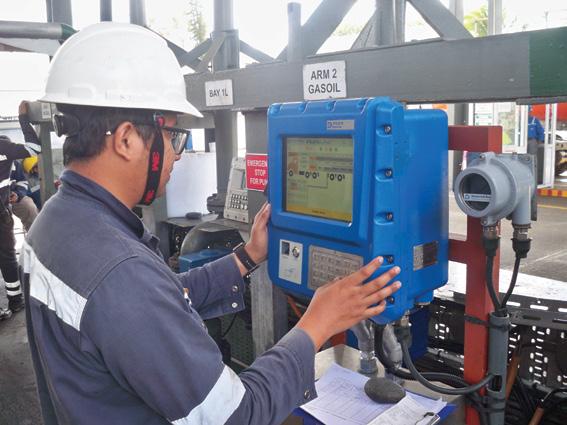




EPC TANK BUILDING: APPROACHES & CONCERNS
Major EPC companies share their main areas of focus when carrying out projects
TANK ENGINEERING
procurement, and construction (EPC) relies on dedicated teams of skilled personnel and often specialised equipment. For a tank design and construction process to be carried out successfully, companies need to maintain a high standard of health and safety, and quality.
The engineering part of EPC often involves services to help terminals optimise existing systems to improve reliability, decrease construction costs, provide expertise, and provide professional engineering advice. For procurement, EPC companies will source the best quality materials and products to complete a terminal’s project. Often EPC companies will have expertise in choosing the best materials to use for a terminal’s specific needs.
Construction is the final part of EPC. In this phase, the EPC company will build a terminal project, using its expertise and skilled workforce. The work should typically be completed within a given timeframe and budget.
TGE
ADAPTING TO CLIENT REQUIREMENTS
TGE approaches each project by looking at the requirements of a specific site and client early on. ‘It is important for us to understand our client’s project requirements, not only for the business model used but also the health, safety, environmental and societal requirements to ensure successful project execution,’ says Thomas Sölla, senior head of sales and business development, from TGE. Proper communication with a client helps TGE to effectively establish the optimal solution. Sölla adds: ‘It can be a balancing act to bring the different and often conflicting parameters to provide the required solution. However, with over 40 years of experience in the tank storage business, we have the knowledge and experience to provide and execution a successful project.’ As well as bespoke solutions, TGE also has experience, in providing customers with some
standardised and modularised design and execution models.
‘Basically, it’s about providing our clients with a solution that makes them successful in their markets. However, it remains necessary to adapt our approach and execution to the country and its culture to ensure that we can meet the client’s objectives and ensure a successful project.’ International codes and standards are used to ensure a project meets recognised levels for the design and construction and these can vary between regions.
Sölla says: ‘For each project, we have requirements to deliver our products to the relevant international design codes. With our main focus being Europe and Asia, we typically have to utilise EN codes, API/NFPA or GB codes for our projects, as well as additional country specific requirements. We have experience across all the main code requirements, and we can ensure that the project conforms to the required codes and regulations.’
In 2024, TGE is due to complete an LNG terminal in the Guangdong Province,

PAGE 64
TECHNICAL EPC TANK BUILDERS
China. Currently, TGE is executing two LNG tank terminals in the Guangdong Great Bay Area. The Huizhou LNG receiving terminal is located in Huizhou, in which TGE’s scope is the engineering, procurement, construction of three 200,000 m³ LNG tanks. Sölla says: ‘The completion of the project is scheduled for 2024 but we are planning to complete it by the end of this year, ahead of the original schedule.’
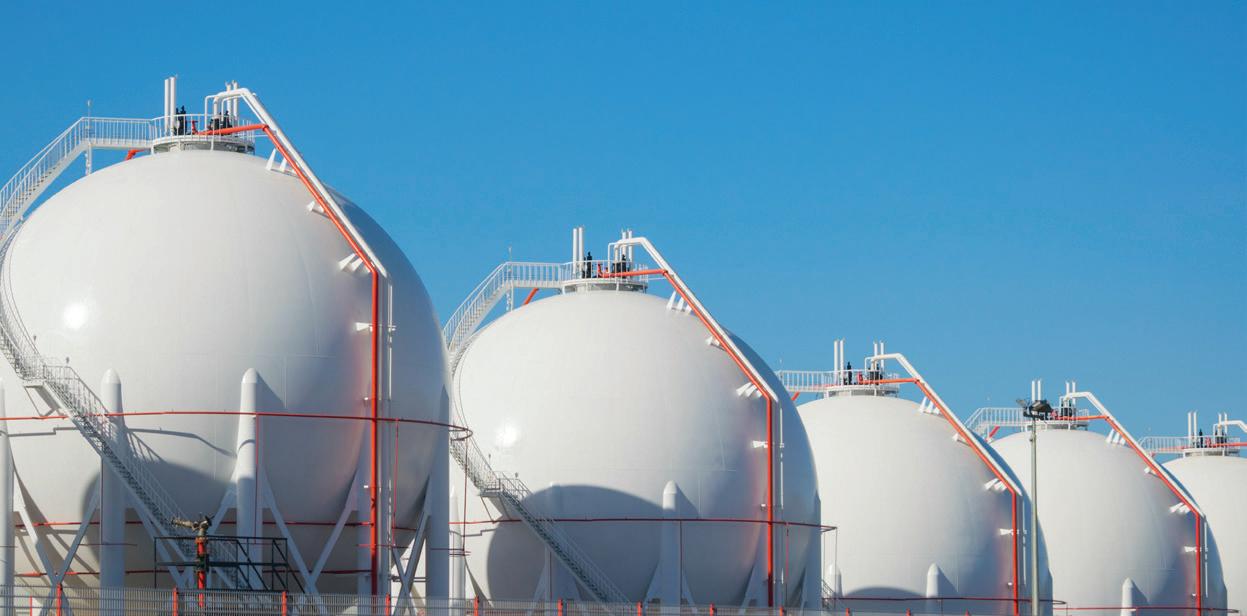
The second project that TGE is currently working on is the Yangjiang Jinlin Bay LNG terminal, located in Yangjiag. In this project, TGE’s scope is the engineering, procurement and construction of two 160,000 m³ LNG tanks. ‘Here, the schedule is to complete the project at the end of 2023 too. We are more than proud to say that we are participating in the construction of five of the eight LNG terminals in the Guangdong Great Bay Area,’ Sölla adds.
For more info: www.tge-gas.com
CRYOGENIC TANKS: SAFETY & SUSTAINABILITY
It is essential to gather all information before a project can be put in motion. The cryogenic industry is defined by the handling of liquefied gases or any chemical product, which has a temperature below -120°C. Cryospain adapts from case to case to make sure the liquified gases or chemical product stored has the best tank fit for purpose. The company ensures that the customer can provide enough data and has adequate budget requirements to ensure project success.
Central to Cryospain’s ethos is ensuring the client has continual service, even after completion of an EPC project. ‘We provide our customers with after-sales services like repair or maintenance on our products and also on products made
APPROACHING TANK CONVERSION VS TANK BUILDING
When converting a tank for a different product, the main parameter to review is the materials of construction, principally of the inner tanks. If the inner tank material is not suitable, then a new build tank is probably required. ‘If the materials are suitable then other parameters need to be verified. A change in fluid density means that the tank strength and foundations have to be checked for suitability, and potentially the operating levels in the tank changed to accommodate higher density fluids,’ says Thomas Sölla at TGE.
All of the instrumentation and safety components need to be verified to ensure suitability for the different product, and if necessary, changed to suit the product. There may also be plant-wide safety studies which would need to be reviewed or undertaken, one example of this being QRA. Sölla explains: ‘It is not only the tank which needs to be checked but the adjoining process units.’
TGE also works on conversion projects, with one recent example being the LNG Peak Shaving Terminal to LPG Terminal in Avonmouth. ‘The new LPG terminal will import and export LPG via truck. The warm pressurised LPG arriving by truck will be let down and stored in the re-purposed atmospheric storage tank at approximately -42°C. When the LPG is required to be exported then the LPG is pumped from the tank, and heated before being transferred to the LPG trucks,’ comments Sölla
by others,’ says Pierre Meurgey, sales and marketing director at Cryospain.
‘Being part of the cryogenic industry, one of the main challenges is the installation of the equipment because you can imagine that, with these very low temperatures, you have to keep the product in these temperatures whilst the project is being undertaken.’
The chemicals Cryospain handles can be very dangerous. First, they are very cold. Secondly, some of them can be explosive. Hence, its crews are faced by a plethora of risks and consequences if products are mishandled. So, whilst it is important for Cryospain to ensure its teams are experts in EPC, it is also essential to equip them with the proper training to mitigate risks when undertaking different projects.
‘First, we have our staff equipped with civil protection equipment, for example, special gloves for low temperatures or oxygen measurement devices. Secondly, we take into account the characteristics or the properties of the chemical or product we are working with; we will perform a special study to determine the risk. Thus, we would have to put into place the measures to protect our people against the risks,’ explains Meurgey.
Cryospain also highlights the significance of addressing sustainability, as companies in the industry come under increasing pressure to ensure their products and services have considered the environment at each stage. Meurgey comments: ‘Most of our equipment is made of steel, especially alloy steel. All of our insulation techniques involve nonorganic materials, which make them all recyclable. And in the way we produce our equipment, we take special care on making sure that any side product, which can be used in our process production line, would be recycled correctly.’
For more info: www.cryospain.com
PAGE 65
01 Flat bottom cryogenic tank, Santa Cruz de la Sierra, Bolivia
CRYOSPAIN
TECHNICAL EPC TANK BUILDERS
GTT
GROUNDBREAKING GREEN PROJECT
GTT is playing an important role in an EPC project at the Beijing Gas Tianjin Nangang LNG Terminal in China. The terminal is an influential national energy project to strategically improve the capacity of gas storage, peak-shaving and supply for areas of Beijing city, Tianjin city and Hebei Province.
Edward Chen, business development manager at GTT China, says: ‘This terminal constructs 10 LNG storage tanks with a total LNG storage capacity of 2.16 million m³ and achieve gas supply capacity to 1.2 billion m³. The project is also the first-of-its-kind and flagship project in China that adopts state-of-the-art membrane technology to demonstrate successful implementation of low carbon footprint LNG storage system, which proves China has welcomed a greener LNG storage infrastructure.’
In this specific project it was important for GTT to work closely with the EPC contractors – Huanqiu Engineering (HQCEC) and Chengda Engineering (CHENGDA). GTT was responsible for the inner tank engineering, while the EPC contractors were responsible for the engineering work of foundations and the outer tank. Chen says: ‘For inner tank scopes, GTT needs to qualify material suppliers, outfitting (construction) procedures and outfitters (workers).’
The latest generation GST tank membrane is equipped with a nitrogen system to monitor closed insulation spaces between the primary liquid
barrier and outer concrete wall. This system provides GST technology with a unique function of continuous gas (methane) detection to monitor even small leakages from the primary barrier into the insulation space, which can achieve high reliability for LNG tank operation. Traditional technology, like 9% nickel, cannot incorporate a tightness monitoring system. This unique function works as an additional safety measure and is often requested by tank owners.
When looking at this specific project, there were five years of assessment, preparation, engineering and construction. Between September 2018 and November 2023, BGG and GTT are to introduce onshore membrane technology. The process continues to include in-depth technical discussions on development, collaboration with the relevant parties, passing barrier sound tests, passing ammonia global tightness tests, and more. ‘The project execution proved to be quite smooth thanks to good planning work between GTT and EPC. There were no significant challenges to implement the technology. Areas of improvement may be more efficient interface management between various sub-contractors e.g. outer tank civil subcontractor vs. inner tank containment system sub-contractor,’ adds Chen.
Chen says: ‘GTT is independent from main contractors and offers the technology to any contractors willing to bid for such product. Additionally, GTT benefits from rich experience in the marine sector (LNG carriers), which allows us to further optimise and design a reliable solution.’
GTT expects its GST technology to become increasingly present in projects,
to build ranges of cryogenic tanks from 30,000 m³ to 270,000 m³. Chen comments: ‘More importantly, GST technology can offer clients extra-large LNG storage tanks with 300 000 m3 storage capacity or more, which other technology cannot achieve.’
‘GST technology is adaptable to store various cryogenic liquid contents. GST LNG tanks can also store liquid ammonia without major design changes. This helps to cope with the carbon-neutral strategy worldwide,’ says Chen.
At the start of 2023, the French ambassador in China attended the mechanical completion ceremony of the first GST membrane tank at the BGG project site in Tianjin. The BGG project is expected to start its first phase of operation by June 2023, with another six GST tanks under construction and planned to start operation by the end of 2023 and mid 2024.
GTT’s HGG project was the first GST 29,000 m³ LNG tank in China was successfully put in operation in October 2022. ‘This GST LNG tank was built for Huagang Gas Hejian LNG Peak-shaving Project, located in Hejian city, Hebei Province, China. The safe operation of more than 100 days for this very first GST LNG onshore membrane tank in China was a proven success for implementation of GST technology,’ says Chen.
For more info: www.gtt.fr

PAGE 66
01
TECHNICAL EPC TANK BUILDERS
01 GTT completion ceremony for world’s largest onshore membrane tank, Tiajin Nangang LNG
GTT, YOUR LNG STORAGE PARTNER
LOOKING FOR A RELIABLE AND MORE ENVIRONMENTAL FRIENDLY SOLUTION FOR ONSHORE LNG STORAGE?
GST® Membrane Full Containment system, developed by GTT, benefits from 60 years LNG experience (with more than 830 LNG Carriers* using its technology) and a strong experience in land storage systems: 50 tanks* have already been built or ordered Worldwide.

GST® technology can be adapted to both small and large capacities through a streamlined design, and can be implemented in harsh seismic sites. Moreover, the technology is competitive in cost and construction schedule, and enjoys an approximatively 25% lower carbon footprint.
Today, GTT is here to help you in your energy transition.
* in operation or in order as of December, 2022
gtt.fr
LIGHTNING CAN ALWAYS STRIKE TWICE
Tank Storage Magazine explores the latest lightning protection and mitigation techniques for tank storage facilities
HAZARDOUS FACILITIES such as petrochemical terminals and oil and gas facilities can experience grave consequences if struck by lightning. This natural phenomenon is random, which means protecting against lightning can be difficult. While high points and tank roofs are at risk, strikes may also hit random locations on the open ground. This means some small ground-level tanks or pipework at tank terminals may also be susceptible to a lightning strike.
‘Reports indicate that more than 30% of external floating roof tanks (EFRTs) fires are caused by lightning,’ says Chris Smithwick, marketing director at Lytech Technologies. More specifically, it is estimated that 95% of rim-seal fires are the result of lightning strikes. Lighting protection is covered under the National Fire Protection Association standard, NFPA 780 in the USA (see the box for details).
TANK FIRES
If lightning should strike a terminal, the consequences could cause a fire. This requires the following: presence of combustible and/or flammable vapours; oxygen presence or/and an ignition source. If lightning strikes in an explosive atmosphere, ignition will always occur.
Large currents flow from where the lightning strikes and these currents can produce sparks in the vicinity of the point of impact.
According to IChemE’s paper on Migration of the Lightning Hazard for Above Ground Hydrocarbon Floating Roof Storage Tanks: ‘Fires at tank storage facilities are typically caused by sparking from a lightning strike, especially at loose contacts, or touching surfaces which are not well bonded together. For tank skins, puncture or the formation of hot spots can also ignite flammable vapour mixtures within and ignitions then occur when there is flammable vapour mixed with air.’ Gert van Meijeren, CEO of atmospheric tank company, CTS says:
EQUIPMENT IN USE
‘One issue that is often raised is that a lightning strike on an aluminium dome is able to ignite the vapour space under the dome roof.’ If this is within flammable or explosive range of the tank, it can cause damage the integrity of the aluminium dome roof by melting or structurally damaging parts.
PROTECTING ASSETS
‘One of the most vulnerable applications that poses a serious threat from lightning is EFRTs as they are highly susceptible to lightning current created by direct and indirect strikes,’ says Smithwick. Lightning strikes can not only damage equipment but cause a significant loss

Lightning Master systems and components are designed to meet the requirements of National Fire Protection Association NFPA 780, Underwriters Laboratories UL 96 and UL 96A, and American Petroleum Institute API 2003 and API 545. They are constructed of stainless steel, Hastelloy, titanium and other highly corrosion resistant materials and are UL listed,
An operator of a South Louisiana, USA, plant experienced numerous fires at their hydrogen stacks during electrical storms causing numerous plant shutdowns. After installing Lightning Master systems on their stacks, they only suffered one or two stack fires in the following two years saving extensive product loss and downtime.
PAGE 68
TECHNICAL LIGHTNING PROTECTION
REGULATIONS FOR LIGHTNING PROTECTION
NFPA 780 Paragraph 6-4.1 states metallic tanks with a steel roof of riveted, bolted or welded construction, with or without supporting members that are used to store liquids which give off flammable vapours at atmospheric pressure shall be considered to be protected against lightning if:

1. All joints between plates, shall be bolted, riveted or welded
2. All pipes entering the tank shall be metallically connected to the tank at the point of entrance
3. All vapour or gas openings shall be closed or provided with flame protection in locations where the stored stock might produce a flammable air-vapour mixture under storage conditions
4. The roof shall have a minimum thickness of 4.8 mm
5. The roof shall be welded, riveted or bolted to the tank If all this criteria is not met, a tank could not be correctly fitted with adequate lightning protection systems.
of product, financial impact, loss of operations and human safety, making lightning protection equipment vital to any tank terminal.
Lyetch provides a multi-step, engineered solution to reduce risk associated with lightning strikes. The company’s retractable bypass conductor (RBC) provides a robust, visibly inspectable, direct electrical connection between the tank shell and floating roof. ‘This eliminates the risk of voltage differences between these metal bodies,’ explains Smithwick. Proper discharge of the current from a lightning strike requires a safe and uninterrupted path to earthed ground. The RBC is designed to maintain a constant bond between the tank roof and the tank shell, outside of the vapour zone and allows the lightning strike to find a clear path to earth around the outside of the tank, without causing ignition to what is inside the storage tank. RBC units are placed evenly around the tank and require no specialised tools or equipment to install. They can be inspected without intrusion to the tank or any downtime.
RBCs protect the contents of the tank when lightning strikes by providing a safe pathway for the current. However, this is only one type of lightning protection. Another is lightning rods which often can be seen sticking out above tanks; These provide a clear and safe path for the lightning to travel and are always grounded.
Lightning Master provides lightning and static protection equipment and systems, including lightning rod technology. ‘It is helpful to remember that the primary purpose of a conventional lightning rod system is to keep the protected structure from burning down,’ explains Bruce Kaiser, president at Lightning Master.
‘Conventional lightning protection consists of a network of lightning rods
interconnected by conductors leading to a grounding system. As long as the entire protected structure is located within a lightning rod zone of protection, the claim is that lightning will always attach to a lightning rod and be harmlessly conveyed around the protected structure to ground, thereby sparing damage to the protected structure,’ explains Kaiser.
STORM DETECTION
Lightning detection systems are a tool for operators to prepare for storms, thunder and strikes. Local storm detection can allow for companies to halt product and take preventative measures before it happens. This ultimately results in less downtime, loss of product and fewer injuries than would have been if an incident had occurred.
Météorage is the French operator of the European lightning detection network.
It provides professional solutions to prevent the effects of lightning strikes. Its lightning detection network specialises in the valuation of lightning data. The system allows for its users to detect storms, view storms in real time, have alarm systems for when a storm is near and flag suspected equipment breakdown to maintenance.
A refinery in Antwerp, Belgium uses the Météorage detection system to:
• Detect storm activity
• Evacuate employees into lightningsafe buildings
• Follow thunderstorms’ progression online
• See how many strikes have hit the depot
This also enabled the facility to comply with the regulations which require the detection of lightning and the counting of strikes. Storm and lightning protection systems allow for companies to make informed decisions regarding lightning strikes before they happen.
For more information:
www.cts.global
www.icheme.org/media
ww.lightningmaster.com
ww.lytech.uk
www.meteorage.com/fr
PAGE 69
01
TECHNICAL
PROTECTION
01 Lytech’s RBC installed
LIGHTNING
TECHNICAL NEWS: GLOBAL INDUSTRY UPDATES
ORBITAL SIDEKICK TO BRING HYPERSPECTRAL IMAGING TO PIPELINE MONITORING
TechCrunch+ has reported that global monitoring services company, Orbital Sidekick has raised $10 million (€9.12 million) to introduce hyperspectral imaging to oil and gas pipeline monitoring.
The deal was led by Energy Innovation Capital, with additional participation from major North American energy companies Williams and ONEOK. The University of Minnesota’s Endowment and existing investors 11.2 Capital, Syndicate 708 and the CIA’s strategic investment arm In-QTel also participated.
Orbital Sidekick CEO, Dan Katz says: ‘There’s really no persistent, objective, high-accuracy monitoring service that’s available to operators today.’ Katz alongside Orbital Sidekick co-founder Tushar Prabhakar created a solution. It is a data analytics product that generates intelligence using a constellation of satellites equipped with hyperspectral sensors. Hyperspectral lets companies see the chemical fingerprint of different substances, like gas, by collecting and measuring hundreds of wavelength bands. For pipelines in particular, hyperspectral information can help identify leaks even if the pipeline is buried underground, as is the case with the vast majority.
Orbital Sidekick is planning to expand within the energy sector, monitoring not
AIR LIQUIDE ANNOUNCES NEW HYDROGEN CRACKING TECHNOLOGY
French multinational industrial company, Air Liquide, has announced the construction of an industrial scale ammonia (NH3) cracking pilot plant in the Port of Antwerp, Belgium. When transformed into ammonia, hydrogen can be easily transported over long distances. Using innovative technology, this plant will make it possible to convert, with an optimised carbon footprint, ammonia into hydrogen (H2). With this cracking technology, Air Liquide will further contribute to the development of hydrogen as a key enabler of the energy transition.
The innovative pilot plant, which combines a novel efficient process with Air Liquide’s proprietary technologies, is planned to be operational in 2024.

Michael Graff, executive vice president, Air Liquide, says: ‘Ammonia cracking complements Air Liquide’s already thorough portfolio of hydrogen technologies and adds yet another solution to enable the development of a hydrogen global market. More than ever, the group is committed to making hydrogen a key element of the fight against climate change, in particular for the decarbonisation of heavy industry.’
GEROTTO ANNOUNCES REBRANDING
Robotic solutions and tank cleaning company, Gerotto has launched a new website as part of a rebranding project.
The little elephant that has distinguished Gerotto for over 20 years has been redesigned with an innovative approach to make it versatile and ready to speak the language of the metaverse and AI world. The new logo and website are the result of a structuring process of the Gerotto brand that has defined three different business units:
• Gerotto Robotics which deals with the engineering, production and sale of no-man entry robotic solutions for cleaning operations inside tanks and industrial plants.
• Gerotto Truck focuses on sale of suction vehicles which represents exclusively for Italy the RSP suction excavators and Amphitec industrial vacuum cleaners.
• Gerotto Solutions, finally, is the business unit dedicated to industrial reclamation services and construction and maintenance of infrastructures and underground utilities.
Alessandro Gerotto, CEO of the company says: ‘Gerotto’s new image is an important step in our history and above all a necessary step to present ourselves to the market in an increasingly innovative way.’
BLASTONE ACQUIRES VERTIDRIVE
BlastOne, a leading global provider of blasting and painting equipment and supplies, has announced the acquisition of VertiDrive, located in Rotterdam, the Netherlands.
BlastOne has been acting as a sales partner for VertiDrive for over five years. The acquisition will enable BlastOne to improve customer support and provide innovative solutions for automating blasting and painting processes.
PAGE 70
BlastOne
Orbital Sidekick
Air Liquide
Gerotto
TECHNICAL NEWS
just oil and gas pipelines but oil wells or off-shore oil facilities.
The addition of VertiDrive’s robotics technology will also enhance BlastOne’s ability to serve a wide range of industries, including shipbuilding, ship refurbishment, chemical industries, heavy fabrication and infrastructure.
Matthew Rowland, CEO of BlastOne, says: ‘VertiDrive’s cutting-edge robotics technology is a perfect complement to our existing product line, and we believe it will be a valuable asset as we continue to grow and serve our customers.’
Stefan van Diessen, managing director of VertiDrive, says: ‘We are thrilled to join forces with BlastOne and bring our robotics technology to a larger audience. We believe this partnership will allow us to accelerate the development and deployment of our robots, and we are looking forward to working with the talented team at BlastOne.’
BAKER HUGHES AWARDED CONTRACT BY SEMPRA FOR PORT ARTHUR LNG PROJECT
Energy technology company, Baker Hughes has been awarded an order by Bechtel to supply two Main Refrigerant Compressors (MRCs) for Sempra Infrastructure’s Port Arthur LNG Phase 1 project in Jefferson County, Texas, US.
Through the Port Arthur LNG Phase 1 project, Sempra Infrastructure aims to deliver critical new export infrastructure in the US which will help meet continuing growth in demand for liquefied natural gas (LNG).
In total, Baker Hughes will supply four Frame 7 turbines paired with eight centrifugal compressors across two LNG trains, as well as two electric motor driven compressors for the plant’s boosting services.
Baker Hughes chairman and CEO Lorenzo Simonelli: ‘We are delighted to be working with Bechtel and Sempra Infrastructure to supply critical equipment for this innovative LNG project. Baker Hughes has been committed to LNG for over 30 years, and today’s announcement builds on our track record of delivering high-availability and reliable LNG technology, with low total cost of operations, further enabling increased exports of LNG from the US Gulf Coast to meet global energy needs.’
ESSAR OIL UK APPOINTS NEW CHIEF TRANSFORMATION OFFICER
Essar Oil UK has announced that Mike Mackay has been appointed to the role of chief transformation officer at Essar Oil UK. Mike will also join the company’s executive leadership team.
Mike has over 25 years of experience in the oil and gas industry. He also has extensive knowledge of refining and the downstream oil sector in the UK. He recently returned to Essar from a successful secondment in the department for energy security and net zero as the UK downstream oil sector’s advisor to the government.
In his new role, Mike will develop and implement strategies to improve business performance and reliability as Essar transforms for tomorrow.
Essar CEO, Deepak Maheshwari, says: ‘We would like to welcome Mike back after his secondment. This is an important appointment to a senior position within the company. Mike will work closely with me to improve business performance and reliability across Essar Oil UK.’
TECAM
TECAM PRESENTS RTO AT STOCEXPO
Environmental technology company Tecam, presented its Electricallyheated Regenerative Thermal Oxidizer (RTO) as an optimal and more efficient technology solution for tank venting emissions abatement.
Tecam presented the new technology at StocExpo in Rotterdam on 14-16 March. The RTO covers emissions treatment as well as vapour recovery for the tank storage industry, and more specifically the Electrically-heated Regenerative Thermal Oxidizer (RTO) technology for Volatile Organic Compounds (VOC) emissions that are generated during storage, tank breathing and product loading and unloading at tank terminals. Tecam was awarded with the silver prize for the Environmental Performance category of the Tank Storage Awards that were presented during a gala dinner on 15 March as part of StocExpo 2023. The win was for the combination of Electrically-heated Regenerative
Thermal Oxidizers (RTO) and Vapour Recovery Unit (VRU) for emissions treatment and hydrocarbon recovery at tank terminals.
Tecam’s engineering director José Miguel González also gave a technical speech on environmental best practices at the conference programme of this exhibition. The technical speech versed on how electrically-heated RTO and VRU are the most suitable technology for tank terminals to become greener and more efficient when it comes to emissions elimination and product recovery.
OPW INTRODUCES THE STOP-LOK
Loading and coupling systems specialist, OPW Engineered Systems has announced the launch of its new Stop-Lok multi-application coupler for use in connecting piping and hoses that are used in higher heat and pressure fluid-handling applications. This evolution features a compact structure with increased functionality, with no tools required to complete the connection process. The Stop-Lok is suitable for loading and unloading fluids in chemical, water, steam, hydrocarbon and heating-andcooling applications with pressures up to 400 psi. The Stop-Lok has a scalloped connection sleeve that allows for a handtight, tool-free connection that cannot be over-tightened, which lets the user know that ‘when it stops, it’s locked’. The Stop-Lok’s smooth-bore coupler is made of 316 stainless steel and is available in 3/4, 1, 1-1/2, 2 and 3 inch sizes, all of which have no variation in pipe diameter, which enables it to generate consistent non-restrictive flow rates.
David Jacobson, global product manager for OPW Engineered Systems, says: ‘Union fittings have been used for decades as a quick, easy-to-assemble connection point between a pipe and hose, but our new Stop-Lok coupler offers advanced features that enable it to deliver even better efficiency.’

PAGE 71
OPW
Oil UK
Baker Hughes
Essar
TECHNICAL NEWS
KEEPING PEOPLE SAFE WHERE THEY WALK
CEO of Real Safety, Torben Farup, discusses winning gold at the Global Tank Storage Awards and taking their technology into the tank storage sector

the long run, they are making a profit because accidents aren’t happening,’ says Farup. People are the biggest asset to companies and Real Safety’s solution means they no longer need to take time off to heal from injuries. Companies are making a profit by having a safe, accident-free, workforce. ‘Not only that, but companies don’t want to have reports of incidents that could be easily avoidable,’ says Farup.
Our brains all know red means stop, black and yellow means hazard, blue means an action, so by applying these colours and signs to our installations, we can actually aid in terminal safety procedures more effectively than other anti-slip technologies. We are nudging peoples brains on cues and signals they already recognise.’
PRODUCTS IN PRACTICE
AT THE 2023 Global Tank Storage Awards, gold was presented to Real Safety in the Safety Technology category for its anti-slip safety solutions. The judges said the winner was chosen due to it being an easy but necessary technology, even though it is not completely new. Slips, trips and falls are a leading issue in the tank storage sector, so Real Safety’s product is a must to ensure safety.
‘We have won awards in the past, but this award felt quite special because it was in a different industry. We attended StocExpo and the awards to see the sector and meet new people but we never expected to win! Being shortlisted was an achievement enough already,’ says Torben Farup, CEO at Real Safety.
ACCIDENT-FREE WORKPLACE
‘Traditionally, coatings, sanding, and other safety products require lengthy installation. The areas where they are being installed need to be closed off, they require correct weather conditions to be installed outside, and over time can wear away,’ says Farup. Real Safety’s products are easy to install, requiring no areas to be closed off from working and can be installed in any weather.
One third of all incidents in the workplace are falls, making safety precautions a necessity. ‘Companies may be upfronting the cost on the equipment and protecting their staff, which is a priority, but in
Real Safety goes the extra mile. ‘We work directly with the companies and terminals to find out what they need from us and what can we do to help them,’ says Farup. Real Safety incorporates an idea called nudging into its technology. ‘We can add colours and signs to our equipment so workers can respond to those signals.
‘We have our product in terminals in the Port of Antwerp and Rotterdam and we worked very closely on an installation in a terminal in the Port of Fujairah,’ explains Farup. Leading independent oil storage company, BPGIC based in Fujairah, UAE, wanted to prevent all types of personal incidents. The company sought out safe and sustainable slip prevention upgrades within its facilities. Real Safety faced new challenges on this installation due to the climate and location of the terminal. ‘Dust and sand can be very slippery on surfaces and in 40°C-50°C heat, different safety issues can occur,’ explained Farup.

01
02 PAGE 72 EVENTS AWARD WINNER
‘We work directly with the companies and terminals to find out what they need from us and what can we do...’
After evaluation, Real Safety introduced anti-slip concepts for stairways and ladders with colour warnings and text embedded safety messages. ‘Working with BPGIC was a great experience for us and showed us how we should be working in partnership with companies. The people we worked with were innovative and ready to implement our product into each new phase of the development,’ says Farup.
DISRUPTING THE SECTOR
‘We currently see no consistency in the sector when it comes to keeping people safe where they walk,’ says Farup. Real Safety is entering the sector with a new innovative and sustainable product with long term benefits for the company and staff alike.
Real Safety has recently launched a new product and is now installing safe walking
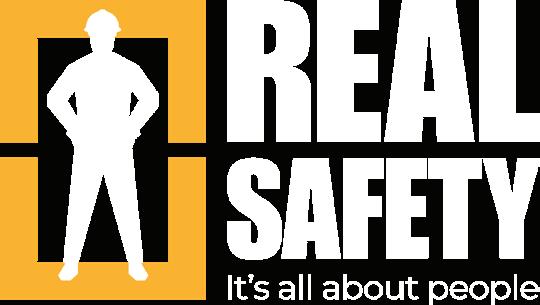
paths on roofs, which can be made suitable for tank roofs. ‘We know slipping is bad, but falling from a height is far worse and we need to make this as safe as possible,’ says Farup. The new product is made from recycled material and a green solution for a roof-safe path. ‘We have one client for this already and are ready to begin on new projects in the sector and introduce this product.’
‘Right now, we are focused on gaining traction. Winning this award helps introduce us to the tank storage sector. We currently work in similar industries but are new to this one. We want companies to know what other options they have in terms of walkway safety,’ says Farup.
For more information:
www.realsap.com realsap@realsap.com
01 Torben Farup, CEO at Real Safety
02 Real Safety anti-slip ladder
03 Real Safety anti-slip stairs
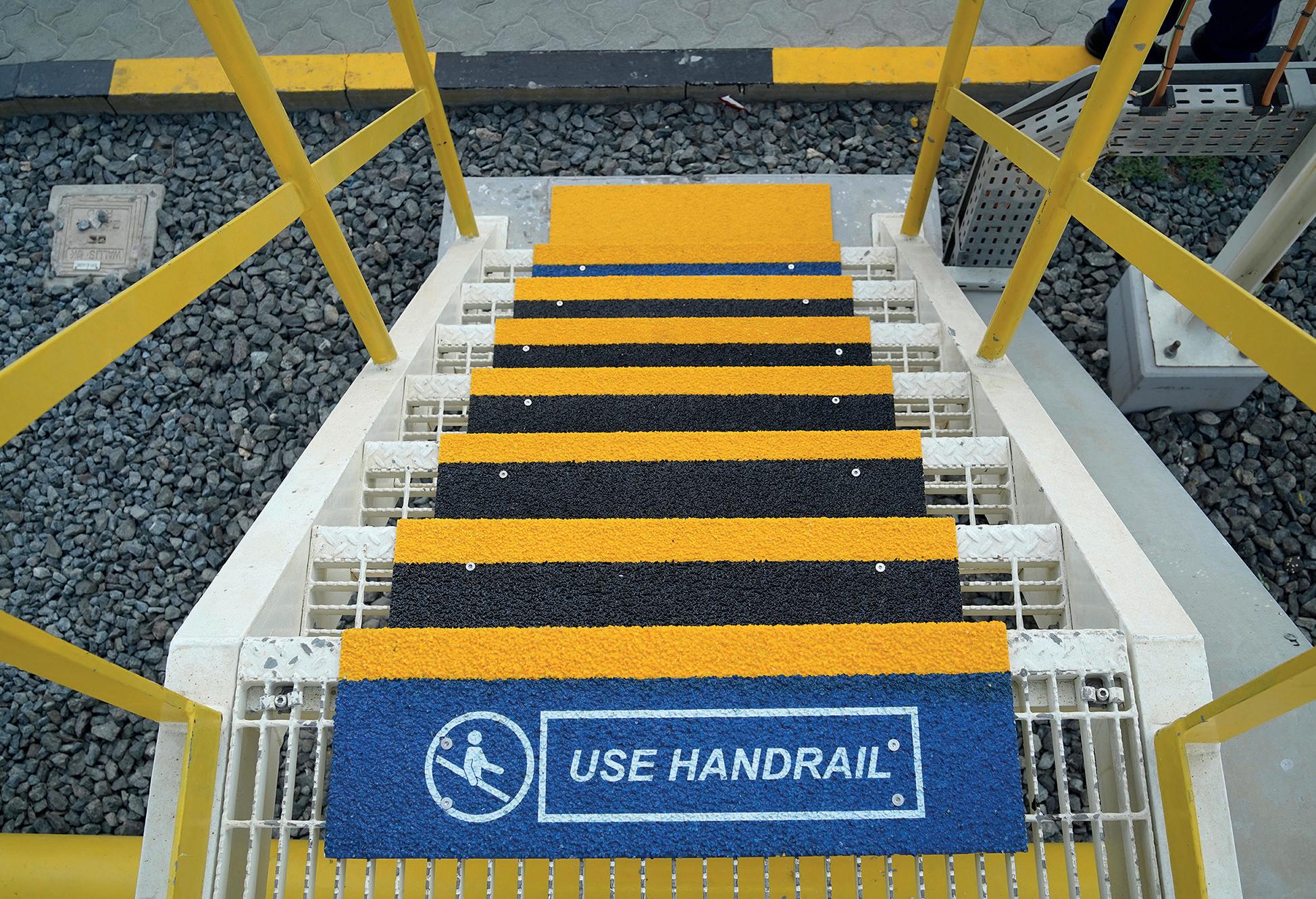
03
We keep people safe where they walk in Tank Storage Facilities email: realsap@realsap.com I tel: +45 26 11 44 66 I www.realsap.com Gold winner safety expertise: • Stairs • Ladders • Walkways • Access Platforms • Tank Roofing Stoc Expo Advert halfpage - final Real Safety.indd 1 14-04-2023 11:49:41 PAGE 73 EVENTS AWARD WINNER
HOUSTON-BOUND FOR ILTA
The Tank Storage Magazine team is heading off to Texas for the ILTA conference on May 22-24. Here’s a preview of what’s in store
THE ILTA conference is the largest liquid terminal industry event in the USA, and returns to Houston on 22-24 May 2023. Tank Storage Magazine is proud to be the official media partner and door-drop sponsor for the event –meaning many of you are likely reading this as you walk around the show.

With expert-driven educational sessions, networking opportunities, and more, ILTA 2023 will equip attendees with a greater awareness of issues impacting terminal facilities, offering new approaches to improve operations and the opportunity to build relationships with colleagues and suppliers from around the world.
ILTA HIGHLIGHT:
CONFERENCE SESSIONS
This year’s program features four conference tracks, plus discussion groups throughout the day focusing on different topics. ‘For terminal employees, ILTA 2023 offers numerous opportunities to learn more about the industry and yourself, network with your industry peers, and learn about industry vendors’ new goods and services,’ says ILTA president, Kathryn Clay.
From environmental issues and health and safety compliance, to engineering questions, digitalisation and drones, the conference covers a huge range of topics across the first two days. ‘What’s interesting is the focus on new ways
The conference is an exciting learning opportunity for Tank Storage journalist, Cyann Fielding. She says: ‘I am particularly interested in the session on terminals of the energy future. I’m looking forward to gaining insights into establishing terminals that prioritise the environment while meeting energy demands.’
ILTA HIGHLIGHT:
The second day’s breakfast will open with a keynote speech from Captain Scott Kelly. Tank Storage’s marketing executive Shannon Maguire is particularly looking forward to this: ‘Hearing about Captain Kelly’s year-in-space mission will be extremely intriguing as I’m pretty sure it’s something I’ll never experience myself!’
ILTA HIGHLIGHT:
‘It’s exciting to see another trade show embrace the Women in Tanks initiative,’ says Tank Storage Magazine’s editor, Anamika Talwaria. ‘I’m a proud champion of women in the industry and really enjoy platforming them, so I’ll be looking forward to hearing more stories from prominent industry leaders.’
to manage and terminals, as well as a proper discussion on cybersecurity,’ says Tank Storage Magazine editor, Anamika Talwaria. ‘It will help operators develop a more holistic approach to their digitalisation strategies.’
With so many experts to spotlight, we couldn’t fit all our interviews in this issue, but you can read our ILTA series online.
CONNECTING WITH THE USA
After a run of events, both in the UK and the USA, the Tank Storage team is certainly looking forward to reconnecting with clients and meeting new ones. ‘I have been going to ILTA since 2011 and it is always a pleasure to connect with friends and clients and Houston. I am looking forward to promoting the StocExpo and Tank Storage brands to North America,’ says international sales manager, David Kelly. The trade show and multiple networking opportunities are a great way to connect vendors and end-users.
‘For suppliers, ILTA’s conference and trade show gives you a chance to display and demonstrate your goods and services to terminal industry executives and decision makers,’ says Clay. As an official media partner, Tank Storage Magazine will be a prominent presence at the show, and the team will be on the hunt for new content. ‘I’m eager to connect with experts and learn about solutions for sustainable energy terminals,’ says journalist Cyann Fielding. We’ll also be highlighting key innovations and exhibitors throughout the event on social media and the newsletter.
For more information:
It’s not too late to book your place and register for the 2023 event. Visit ilta2023.ilta.org
The ILTA show will return for 2024 on 6-8 May. Plan now to attend: ilta.org
PAGE 74
EVENTS ILTA PREVIEW





Be part of the largest global natural gas, LNG, hydrogen, low-carbon solutions, and climate technology industries exhibition and conference to take place in Asia in 2023. Exhibit at Gastech 2023 in Singapore Shaping the future of energy SCAN TO BOOK YOUR STAND gastechevent.com @gastechevent #Gastech Held in Gold Sponsors Partner Sponsors Supported by Organised by 40,000+ Attendees 750+ Exhibitors 300+ Ministers, CEOs, and business leaders speaking 4,000+ Delegates Gastech Energy Club Official Partner
WE DO IT AS A TEAM
Commercial manager at North Sea Port, Sandra De Mey, tells Tank Storage Magazine how it feels to win gold at the Tank Storage Awards
IN MARCH 2023, North Sea Port won gold in the Port of the Future category at the Global Tank Storage Awards. This this prize goes to the port that is making huge strides in becoming a leading facility. That includes working hard to prepare for the energy transition, introducing digital initiatives and improving overall port customer service and efficiency.

The judges were impressed with the port’s strategic focus on prioritising resources into energy transition initiatives that ensure the highest added-value for its industrial partners and the community.
Sandra De Mey, commercial manager at North Sea Port says credit for the win goes to the whole team. ‘I think winning the award is recognition for all the efforts we have made during the year within the sector. But we don’t do it alone; we do it together as a team. All of it is thanks to our port clients; the port companies, the forwarders, the traders, the storage companies, the barge operators, etc. It is thanks to them that we were on that stage.’
North Sea Port was created as part of a merge of three ports, five years ago. ‘However, we do still get asked: ‘Who are
you? Who is North Sea Port?,’ says De Mey. By winning gold this year, North Sea Port has been given an opportunity to promote its projects and get the facility noticed on the world stage.
ALL PART OF THE TRANSITION
The tank storage industry is currently rife with buzzwords: electrification, hydrogen, ammonia, energy transition. North Sea Port is using that to its advantage. ‘We have three core company tasks’ says De Mey, ‘Provision of port infrastructure, nautical services and connecting people, including promotion of the port.’
North Sea Port is also building a backbone for hydrogen. ‘Together with our Dutch friends in the Netherlands and Germany we are working on the energy transition,’ says De Mey.
Regarding client activities and decarbonisation, the port hosts many forward-thinking companies.
‘One example is a company that is producing microproteins, which is a meat replacement. Even though this isn’t a direct example of the energy transition, De Mey believes it is all part
of a bigger picture. ‘10 years ago, you would not expect a company like Cargill to be involved in the process of making meat alternatives – they process wheat and corn. But it’s an example of another transition: the agriculture transition.’
Even with the energy transition and decarbonisation high on the agenda, De Mey acknowledges that this move is not the right fit for everyone. ‘We cannot forget all the companies that are just working on production in these transition times. For example, yeast production at our port typically works on an old-fashioned process. Yes, it could be sustainable and maybe work with
PAGE 76
01
EVENTS AWARD WINNER
‘10 years ago, you would not expect a company like Cargill to be involved in the process of making meat alternatives... But it’s an example of another transition: the agriculture transition.’
hydrogen or be carbon neutral, but that’s not always the case.’

On a smaller scale, North Sea Port is a micro-community, and the team encourages everyone to be conscious of global warming. Its small community of around 250 people are encouraged to cycle into work and the small car park only allows for electric or hybrid vehicles. ‘We can stimulate the whole port to join the energy transition, but you also need to do it on small scale. Put your money where your mouth is,’ says De Mey.
CLIENTS AT THE FOCUS
North Sea Port is using a platform called SDR (Smart Delta Resources) which brings companies together to connect and find solutions. ‘For example, some companies will ask me, ‘We need to heat in our processes. Do you know anybody who can provide heat?’ I can direct them to the platform where they can find each other and connect about heat,’ explains De Mey. Using the platform has allowed North Sea Port to put its clients at the forefront of the community. It can bring clients together through workshops on specific topics.
De Mey supposes she always expected North Sea Port’s clients to know their neighbours. But that’s not the case. So making those connections is one of North Sea Ports main tasks. ‘We need to be a connector. Trying to solve problems by connecting to the right person. That’s part of our job. This is an easy platform to connect all these companies, and then you always have the right people in one place, it streamlines the whole process,’ says De Mey.
TO THE FUTURE
‘It was great to win the award, but we are not in competition,’ explains De Mey. The port industry has changed in the last 20-30 years and different ports view themselves more as collaborators than competitors. The facilities talk to one another and often work together on projects and initiatives. ‘Nowadays, we really work together and people do not always know that. We work together with Ports of Antwerp and with Rotterdam,
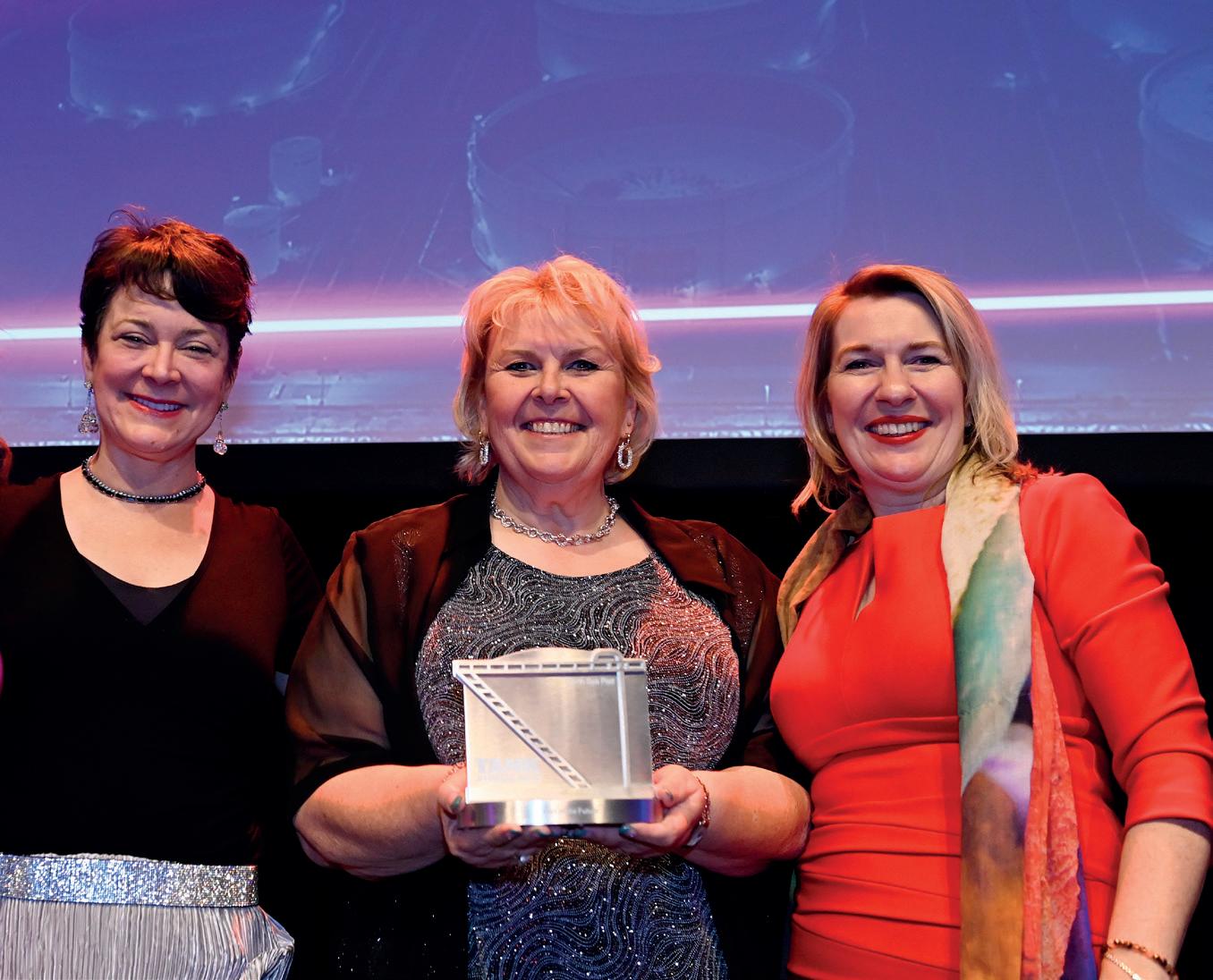
concerning digitalisation and also hydrogen, also because many vessels will pass all the routes through different ports. Not only that, but if you have some goods that needs to go from point A to B, we work together on multi-modality. Every port has its own strength,’ says De Mey. In the last five years everyone has been faced with many challenges, it began with Covid, then Brexit, the Russia/ Ukraine war, droughts and now the increasing energy price. De Mey says: ‘We have got through those tough years and have learnt to work together. If we still have people who can invest in us, that’s great. As long as we have our port clients, we can grow.’
For more information: www.en.northseaport.com
PAGE 77
03 02
01 Steelanol facilty at North Sea Port, Flanders (Ghent)
02 Sandra De Mey (middle) collecting North Sea Port’s award at the 2023 Global Tank Storage awards. Presented by (left) Kathryn Clay, president of ILTA and (right) Sandra de Bont, director at VOTOB Academy
EVENTS AWARD WINNER
03 Cargill waste based biodiesel plant in North Sea Port, Flanders (Ghent)
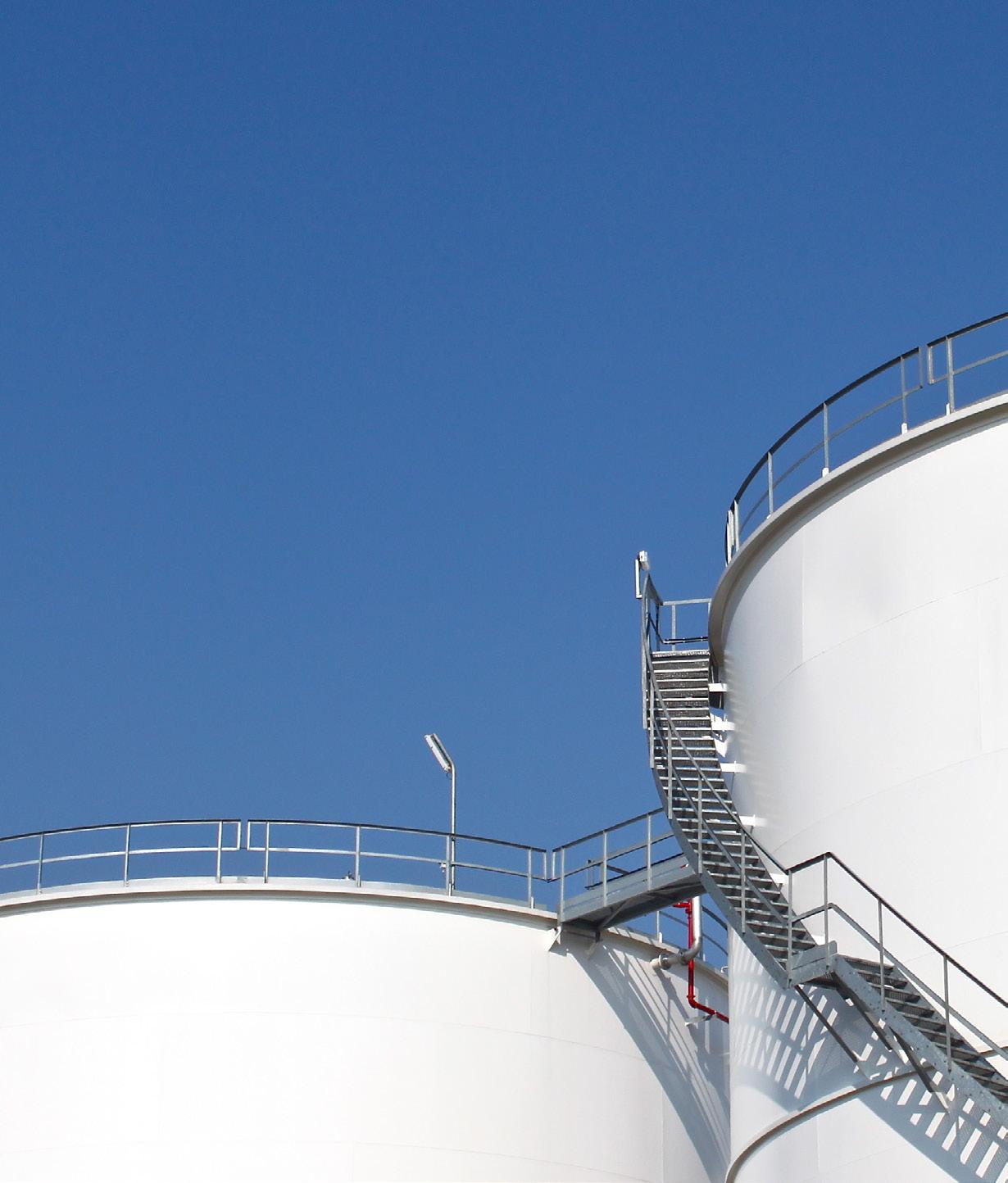
TSA Tank Storage Associa on www.tankstorage.org.uk TANK STORAGE CONFERENCE & EXHIBITION 2023 21 September 2023 Coventry Building Society Arena, Coventry, UK Discover the event: www.tankstorage.org.uk/conference-exhibition 21.09.2023 The UK’s leading event for the bulk liquid storage sector
STORAGE TANK INDUSTRY MEETS IN FLORIDA
Editor Anamika Talwaria shares some of her favourite innovations from the 25th annual NISTM Trade Show and Conference

LANDING IN the Sunshine State of Florida, USA, I was greeted with a somewhat overcast sky. But the grey cloud didn’t dampen my spirits as I was more excited for the bright ideas that would be waiting for me at the Gatlin Ballroom at the Rosen Shingle Creek Hotel. The 25th annual NISTM Trade Show and Conference was about to begin. After build up (and a full day on the golf course) I was able to meet up with a whole host of our US-based clients and partners at the welcome reception sponsored by ATEC Steel and APEX Domes. A few jokes at my expense (yes, I am over 21 everyone!) were all it took to break the ice, and the NISTM team welcomed me with open arms. It’s truly a treasure to see how close-knit the tank storage community is. That first evening wasn’t for shop-talk, though. It was a get-to-know-you and catch-up as we touched base with many valued clients – including a few I had met at StocExpo previously. The real work was set to begin the next day, as the trade show opened and the conference kicked off.
CONFERENCE TRACKS
After an introduction from NISTM’s Marshall Mott-Smith, the first morning kicked off with sessions dedicated to regulatory updates and advice on compliance. In particular, the focus was on the EPA’s latest updates.
The rest of the conference was split into different tracks, looking at aboveground storage tank operations, integrity, environmental factors, safety and AAMP Track. Many of the presentations looked
at technological advancements and innovations in different products, such as floating roofs, seals, hoses and more. The hot topics, though, were fire safety and digitalisation. In particular, Eric LaVergne from JCI Fire Protection Services looked into how terminals will manage the change to fluorine-free foams. Hybird’s Ahmed Hadid spoke about the company’s augmented reality terminal management system, and Karthik Govindarajan from Oak Tree Consulting gave a talk on how virtual reality can immerse workers in health and safety training.
NETWORKING OPPORTUNITIES
As well as the golf day out – which I’m told involved lots of opportunities for hydration – the NISTM team kept the conference and trade show organised with plenty of networking breaks. From morning breakfasts to after-show drinks, there was never a dull moment alone.
Plus, the all-important raffle draw at the end of the trade show was another opportunity to network with exhibitors and the end users that were in attendance.
Congratulations to the first place raffle winner, Jane Barnes from Kinder Morgan, who won the Grand Prize of $2,500. In second place was Ashley Baham from Bengal, winning an iPhone 14 Pro 128GB Space Black + AppleCare (Value $518). Third place in the raffle went to Kevin Coleman from Vecenergy. He won the 10.9” iPad WiFi 64GB Blue + AppleCare (Value $1,198). And in fourth place was Kathryn West from Leidos, who won the $100 Visa Gift Card.
WHERE IS THE INDUSTRY GOING?
Overall, the innovations spoken about at the conference reflected what we already know – the tank storage industry is changing rapidly. As we move towards cleaner and greener fuels, as well as into the digital transformation, terminal operators need to make sure they’re striking the right balance between innovation, safety and operations.
That’s why it’s so important to keep attending trade events like this – to share and absorb the latest industry breakthroughs. It’s up to terminal operators to keep up to ensure their facilities don’t fall behind.
As the tank storage world keeps changing, I’m looking forward to seeing how these events progress, with new and exciting ideas each time.
For more information:
Save the date for NISTM’s next event, which will take place in Orlando, Florida on April 3-5, 2024.

TankStorageMagazine will also be in attendance at the upcoming 16th Annual National Aboveground Storage Tank Conference & Trade Show in The Woodlands, Texas on December 5-7, 2023.
www.nistm.org/events.html
PAGE 79 EVENTS NISTM REVIEW 01
01
Editor Anamika Talwaria trying out CD Industrial Solutions’ VR headset










AT THE BACK ADVERTISERS INDEX & SOCIAL STORAGE PAGE 80 @tankstorageinfo Tank Storage Magazine Tank Storage Magazine ADVERTISERS INDEX Tank Storage Magazine, (ISSN 1750-841X) is published seven times a year (in February, March, May, August, September, October and November) by Easyfairs UK Ltd, 2nd Floor, Regal House, 70 London Road, Twickenham, TW1 3QS, UK. The US annual subscription price is $243. Airfreight and mailing in the USA by agent named WN Shipping USA, 156-15, 146th Avenue, 2nd Floor, Jamaica, NY 11434, USA. Periodicals postage paid at Jamaica NY 11431. US Postmaster: Send address changes to Tank Storage Magazine, WN Shipping USA, 156-15, 146th Avenue, 2nd Floor, Jamaica, NY 11434, USA. Subscription records are maintained at Easyfairs UK Ltd, 2nd Floor, Regal House, 70 London Road, Twickenham, TW1 3QS, UK. Sam Carbis Solutions Group LLC Front Cover Lightning Master Inside Front Cover Atec Steel 03 Keller 05 USA Debusk 07 CB&I 09 Zeeco 10 EEMUA 11 Mesa ETP 12 Scully 13 AUMA 15 Protego 16 EMMUA 17 ILTA 19 Q MAX 21 Becht 22 Koerting 23 Tank Storage Awards 24 Matec 26 StocExpo 29 FETSA 45 Chart Industries 49 ADIPEC 55 Rosen Group 58 USA Debusk 61 Diamond Key International 63 GTT 67 Real Safety 73 Gastech 75 Tank Storage Association 78 Parker & Son Inc Back Cover SOCIAL STORAGE Most liked posts since April: Tank Storage Magazine 12,230 followers 6d Tank Storage Magazine 12,230 followers 4d • Edited • Tank Storage Magazine 12,230 followers 5d • Edited • RUBIS TERMINAL joins Club CO2: https://bit.ly/41GaBDD #TankStorageMagazine #tankstorage #tanksterminals #Liquidstorage #oilandgasindustry #bulkliquidstorage #energystorage #futureoftankstorage Tank storage industry meets in Florida! Find out how editor Anamika got on at NISTM - National Institute for Storage Tank Management: https://bit. ly/3UPvQ3D #TankStorageMagazine #tankstorage #tankterminals #Liquidstorage #oilandgasindustry #bulkliquidstorage #energystorage #futureoftankstorage #TankStorageAwards #NISTM #storagetanks Port of Rotterdam Authority offers site for green hydrogen plant: https://lnkd.in/dpFh8SXs #futurefuels #energytransition #tankstorage #storagetank #portstorage #storageport #terminalstorage #storageterminal #petrochemical #oilandgas #hydrogen Rubis Terminal joins Club CO2 tankstoragemag.com Tank storage industry meets in Florida! tankstoragemag.com Port of Rotterdam Authority offers site for green hydrogen plant tankstoragemag.com 42 1,015 impressions 48 1,324 impressions 33 604 impressions Like Like Like Comment Comment Comment
EVENTS 2023
9th – 11th May 2023
WORLD HYDROGEN SUMMIT & EXHIBITION
Rotterdam, The Netherlands
www.world-hydrogen-summit.com/ brochure
10th May 2023
Media Partner
UKIFDA SHOW & CONFERENCE
Coventry, UK
https://ukifda.org
10th – 11th May 2023
Media Partner
CHEMUK 2023 EXPO
Birmingham, UK
https://www.chemicalukexpo.com
22nd – 23 May 2023
Door-drop Sponsor & Key Media Partner ILTA INTERNATIONAL OPERATING CONFERENCE & TRADE SHOW
Houston, Texas www.ilta.org
22nd – 23rd May 2023
MPGC 2023
Dubai, UAE
plattsinfo.spglobal.com/MPGC
22nd – 23rd June 2023
PGLC
Marseille, France
www.pglc.biz
2nd – 6th July 2023
Media Partner NOG ENERGY WEEK
Abuja, Nigeria
www.nogenergyweek.com
5th – 8th September 2023
Media Partner GASTECH
Singapore
www.gastechevent.com

14th – 15th September 2023
Media Partner
DIGITALISATION IN OIL AND GAS
Houston, Texas
www.digitalizationoilgas.com
21st September 2023
Media Partner TANK STORAGE ASSOCIATION Coventry, UK www.tankstorage.org.uk/conferenceexhibition/
25th – 28th September 2023
Media Partner
THE EUROPEAN PETROCHEMICAL ASSOCIATION (EPCA)
Vienna, Austria www.epca.eu
26th – 27th September 2023
BLOCKCHAIN EXPO EUROPE
Amsterdam, The Netherlands
www.blockchain-expo.com/europe
2nd – 5th October 2023
Media Partner ADIPEC
Abu Dhabi, United Arab Emirates
www.adipec.com
9th – 13th October
WORLD HYDROGEN WEEK
Rotterdam, Netherlands
www.worldhydrogen-week.com
24th – 25th October 2023
Media Partner
STORAGE TANK OPERATION, MAINETNANCE & SAFETY (STO)
Dubai, UAE
www.cconnection.org/events/ tankstorage-sto_dubai
25th – 26th October 2023
Media Partner ASIAN DOWNSTREAM SUMMIT Singapore asiandownstreaminsights.com
28th – 30th November 2023
Media Partner ANTWERPXL
Antwerp, Belgium
www.antwerpxl.com
6th – 7th December 2023
Media Partner
NISTM WOODLANDS
The Woodlands, Texas
www.nistm.org
PAGE 81 EVENTS 2023 CALENDAR
Serving The Petroleum Industry with The Following Services:


• Complete Turn Key & Design Build
• Fuel Terminal and Refinery Process Construction or Repair




• Oil & Gas Pipeline Construction, Repair, & Maintenance

• ASME “S”, “U”, “R” Certified
• NCCER Craft Instructors, Proctors & Testing Center
• NCCER Crane, Rigging & Signal Person Examiners



• Pipeline Anomaly Verification Digs



• API 650/653 Tank Construction & Repair
• Tank Bottom & Dike Liners




• Tank Cleaning
• Terminal Refinery Construction & Maintenance
• Pipeline & Tank Coating

• Civil & Concrete
• OSHA Compliant Critical Lifts
• Custom Process Skid Design & Fabrication
• Mechanical Welding: Pipe Fabrication & Structural Steel, either in shop or on site







• Major Pipe Manifold Fabrication & Construction
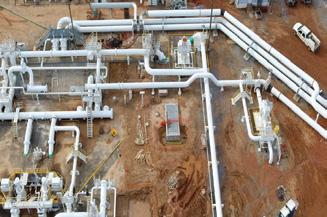
• Electrical, Instrumentation & Controls (EI&C)

• Hydro Testing/NDE
• Military/Aviation Services
• Fully Certified Engineering & Drafting
• 3D Facility Laser Scanning using “point cloud” technology from Leica

• Utility Locating and Hydro-excavation
• Custom Design (Fixed or Portable)
Gas Detection Systems

Parker & Son, Inc. was established in 1991 by Frank and Brian Parker as a mechanical maintenance service General Contractor serving the petroleum and heavy industrial plants for over 25 years. We are fully licensed, insured and bonded throughout the U.S.A. We pride ourselves on being a reliable, high quality and safety focused company. Management and field personnel are trained to satisfy the requirements of OSHA, HAZWOPER, USCG, DOT, as well as, site specific standards and procedures required by the client.
As an NCCER Accredited Training Sponsor & Assessment Center, We provide quality training an assessment to meet your needs either at our Training Center in Atmore, AL, or we can come to you anytime, anywhere.
Staff from our team of quality professionals come from all sectors of the petroleum, industrial, structural and heavy construction industries. Their work history and training includes formal engineering, project management, estimating, site supervision, trade school certification, industry accreditation and on the job training from the ground up. Parker & Son is a Drug Free Environment. We have satellite offices throughout the southeast and our corporate office is in Atmore, AL. Feel free to contact anytime at 251-368-3737 or by email at sales@parkerandsoninc.com.
PH: 251-368-3737
WWW.PARKERANDSONINC.COM















































































































































 01 Stefana Sopco, head of content marketing at Smartflow
02 Stefana Sopco and her Forty Under 40 award at StocExpo 2023
01 Stefana Sopco, head of content marketing at Smartflow
02 Stefana Sopco and her Forty Under 40 award at StocExpo 2023















































































